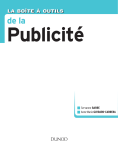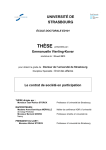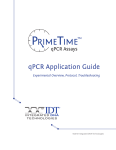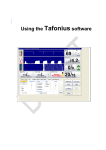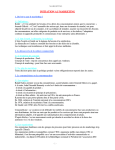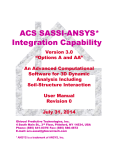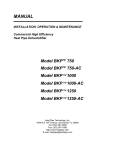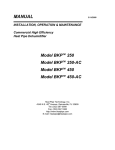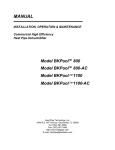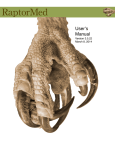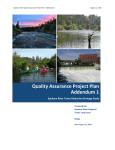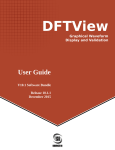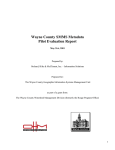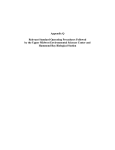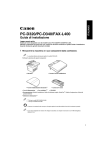Download Quality Assurance Project Plan
Transcript
QUALITYASSURANCEPROJECTPLAN eDNAMONITORINGOFBIGHEADANDSILVERCARPS Preparedfor: U.S.FishandWildlifeService USFWSMidwestRegion Bloomington,MN 2015 REVIEWCERTIFICATIONSHEETS FOR FinalQualityAssuranceProjectPlan forthe eDNAMonitoringofBigheadandSilverCarp Approvedby: Digitally signed by AARON WOLDT DN: c=US, o=U.S. Government, ou=Department of the Interior, ou=U.S. Fish and Wildlife Service, cn=AARON WOLDT, 0.9.2342.19200300.100.1.1=14001000741825 Date: 2015.06.24 12:33:14 -05'00' AaronWoldt,DeputyAssistantRegionalDirector,Fisheries,USFWSMidwestRegion KellyBaerwaldt,AsianCarp/eDNAProgramCoordinator,USFWS MidwestRegion Digitally signed by EMY MONROE DN: c=US, o=U.S. Government, ou=Department of the Interior, ou=U.S. Fish and Wildlife Service, cn=EMY MONROE, 0.9.2342.19200300.100.1.1=14001002848126 EmyMonroe,ProjectLeader,WGL AARON WOLDT Kelly Baerwaldt Digitally signed by Kelly Baerwaldt DN: cn=Kelly Baerwaldt, o=USFWS, ou, [email protected], c=US Date: 2015.06.10 12:25:26 -05'00' EMY MONROE Date: 2015.06.22 09:10:03 -05'00' MAREN TUTTLE-LAU Digitally signed by MAREN TUTTLE-LAU DN: c=US, o=U.S. Government, ou=Department of the Interior, ou=U.S. Fish and Wildlife Service, cn=MAREN TUTTLE-LAU, 0.9.2342.19200300.100.1.1=14001001293609 Date: 2015.06.19 07:23:17 -05'00' MarenTuttle‐Lau,eDNAProcessingQASpecialist,WGL NIKOLAS GRUENEIS Digitally signed by NIKOLAS GRUENEIS DN: c=US, o=U.S. Government, ou=Department of the Interior, ou=U.S. Fish and Wildlife Service, cn=NIKOLAS GRUENEIS, 0.9.2342.19200300.100.1.1=14001000999945 Date: 2015.06.18 15:41:00 -05'00' NikolasGrueneis,DNADocumentation&ReportingSpecialist,WGL MarkHoley,ProjectLeader,GreenBayFWCO MARK HOLEY Digitally signed by MARK HOLEY DN: c=US, o=U.S. Government, ou=Department of the Interior, ou=U.S. Fish and Wildlife Service, cn=MARK HOLEY, 0.9.2342.19200300.100.1.1=14001000763324 Date: 2015.06.25 08:00:48 -05'00' MARK BROUDER Digitally signed by MARK BROUDER DN: c=US, o=U.S. Government, ou=Department of the Interior, ou=U.S. Fish and Wildlife Service, cn=MARK BROUDER, 0.9.2342.19200300.100.1.1=14001000690902 Date: 2015.06.18 07:04:04 -05'00' MarkBrouder,ProjectLeader,AshlandFWCO SCOTT YESS Digitally signed by SCOTT YESS DN: c=US, o=U.S. Government, ou=Department of the Interior, ou=U.S. Fish and Wildlife Service, cn=SCOTT YESS, 0.9.2342.19200300.100.1.1=14001000655627 Date: 2015.06.17 11:49:36 -05'00' ScottYess,ActingProjectLeader,LaCrosseFWCO [email protected] Digitally signed by [email protected] DN: [email protected] Date: 2015.06.15 07:46:41 -04'00' ScottKoproski,ProjectLeader,AlpenaFWCO SAMUEL FINNEY Digitally signed by SAMUEL FINNEY DN: c=US, o=U.S. Government, ou=Department of the Interior, ou=U.S. Fish and Wildlife Service, cn=SAMUEL FINNEY, 0.9.2342.19200300.100.1.1=14001000716290 Date: 2015.06.12 07:56:21 -05'00' RobSimmonds,ProjectLeader,Carterville,FWCO JEFF FINLEY Digitally signed by JEFF FINLEY DN: c=US, o=U.S. Government, ou=Department of the Interior, ou=U.S. Fish and Wildlife Service, cn=JEFF FINLEY, 0.9.2342.19200300.100.1.1=14001000747382 Date: 2015.06.11 14:24:00 -05'00' WyattDoyle,ActingProjectLeader,Columbia,FWCO Date TABLEOFCONTENTS SectionNo. 1. 1.1 1.2 1.3 1.4 1.5 1.6 1.7 1.8 1.9 2. PageNo. PROJECTDESCRIPTIONANDPERSONNELREQUIREMENTS 1‐6 Background.........................................................................................................................................................1‐6 GeneralRequirement......................................................................................................................................1‐2 ProjectHistory...................................................................................................................................................1‐2 Objective..............................................................................................................................................................1‐2 ProjectPersonnel.............................................................................................................................................1‐3 Reporting:............................................................................................................................................................1‐6 Casenumberassignmentandmanagement:........................................................................................1‐6 QAPPmaintenanceandmodifcations......................................................................................................1‐7 eDNASecurityPlan(s)....................................................................................................................................1‐8 SAMPLECOLLECTION 2‐1 2.1 Pre‐TripPlanningandSiteSelection.......................................................................................................2‐1 2.1.1 Purpose 2‐1 2.1.2 Pre‐tripPlanningProcedure 2‐1 2.1.3 Fieldequipmentlist(proceduresareinsection2.2;tobeprovidedbysampling office/agency) 2‐2 2.1.4 LoticSystemSiteSelectionProcedure(inthefield) 2‐4 2.1.5 LenticSystemSiteSelectionProcedure(inthefield) 2‐5 2.1.6 eDNATrailerPreparationandFieldConsiderations 2‐5 2.2 EquipmentPreparation.................................................................................................................................2‐5 2.2.1 Purpose 2‐5 2.2.2 EquipmentProcedureforCoolers 2‐6 2.2.3 BoatandFieldEquipment 2‐6 2.2.4 BoatandEquipmentDecontaminationProcedure 2‐7 2.3 MotorizedSampleCollectionProcedure................................................................................................2‐8 2.3.1 Purpose 2‐8 2.3.2 WaterCollectionProcedure 2‐9 2.4 WadingandNon‐motorizedSampleCollectionProcedure..........................................................2‐10 2.4.1Purpose 2‐10 2.4.2WadingWaterCollectionProcedure 2‐11 2.4.3Non‐motorizedWaterCollectionProcedure....................................................................................2‐12 3. SAMPLEPROCESSING(FILTERINGorCENTRIFUGING) 3‐1 3.1 Purpose.................................................................................................................................................................3‐1 3.2 CentrifugingProcedure.................................................................................................................................3‐1 3.3.1LaboratoryPreparation 3‐2 3.3.2SamplePreparation 3‐2 3.3.3CentrifugingtheSamples 3‐2 i 4. 4.1 4.2 4.3 4.4 5. SAMPLESHIPMENT 4‐1 Purpose.................................................................................................................................................................4‐1 ShippingProcedureforsamplesondryice...........................................................................................4‐1 ShippingProcedureforsamplespreservedwith70%isopropyl................................................4‐2 WGLcontacts.....................................................................................................................................................4‐3 DNAASSAYS 5‐1 5.1 GeneralQualityAssuranceandChain‐of‐CustodyConsiderations..............................................5‐1 5.2 QualityControlforSampleCustodianProcedureandStorage.....................................................5‐4 5.3 PhysicalSeparationofPre‐PCRandPost‐PCRAssayStages..........................................................5‐4 5.3.1 TheeDNAExtractionRoom 5‐4 5.3.2 Pre‐PCRRoom 5‐4 5.3.3 PCRProductAnalysisRoom 5‐4 5.4 ReceiptofTubes...............................................................................................................................................5‐5 5.4.1 Source 5‐5 5.5 DNAExtractionfromTubes.........................................................................................................................5‐5 5.5.1 Source 5‐5 5.5.2 DNAExtractionQualityAssuranceandChain‐of‐custody 5‐5 5.5.3 Alcoholevaporationfromcentrifugedsamplesprocedure 5‐6 5.5.4 Centrifugedsamplesshippedondryiceprocedure 5‐7 5.6 PCRAmplificationofeDNASamples......................................................................................................5‐11 5.6.1 Purpose 5‐11 5.6.2 Source 5‐11 5.6.3 PCRQualityAssuranceandChain‐of‐custody 5‐11 5.6.4 Procedure 5‐12 5.6.5 Standardcurvematerial,preparationandstorage 5‐15 5.6.6 InternalPositiveControl(forindicatinginhibition) 5‐15 5.7 Presumptivepositivedetermination,confirmationpositivedeterminationanddata management........................................................................................................................................................5‐17 5.7.1 Purpose 5‐17 5.7.2 Source 5‐17 5.7.3 PresumptiveCallDocumentationandStorageAssurance 5‐17 5.7.4 ConfirmationofPresumptivePositiveSamples 5‐18 5.8 CommunicationofeDNAAssayResultsandfielddatafromWGLtoUSFWSMidwestRegion Leadership............................................................................................................................................................5‐19 5.8.1 Purpose 5‐19 5.8.2 Source 5‐19 5.8.3 QualityControl 5‐19 5.8.4 GeneralProcedure(fordetailsseeAppendixEforSOP) 5‐19 6. 6.1 INTERNALQUALITYCONTROLCHECKS LaboratoryQualityControlEvaluationCriteria..................................................................................6‐1 ii 6‐1 7. SPECIFICROUTINEPROCEDURESTOASSESSDATAPRECISION, ACCURACY,ANDCOMPLETENESS 7.1 7‐1 FieldMethodsandLaboratoryData.........................................................................................................7‐1 8. CORRECTIVEACTIONS 8‐1 9. PREVENTATIVEMAINTENANCEPROCEDURES 9‐1 9.1 9.2 10. FieldEquipment/Instruments....................................................................................................................9‐1 LaboratoryInstruments................................................................................................................................9‐1 PERFORMANCEANDSYSTEMAUDITS 10‐1 10.1 FieldAudits.......................................................................................................................................................10‐1 10.2 LaboratoryAudits..........................................................................................................................................10‐1 11. EXHIBITS 11‐1 iii LISTOFEXHIBITS 1 FieldCollectionSummary 11‐2 2 FieldSampleDatasheet 11‐4 3 Chain‐of‐Custody(COC)Record 11‐5 4 SampleReceiptChecklist,internallabCOC 11‐6 5 ExcelLogFileforLabCases 11‐7 6 ExcelLogFileofaSingleCase 11‐8 7 ‐20FreezerTemperatureLog 11‐9 8 CoolerStorageTemperatureLog 11‐10 9 ‐80FreezerTemperatureLogandSampleLog 11‐11 10 AmbientStorageSampleLog 11‐12 11 PCRLog 11‐13 12‐14 LabDataSheets 11‐14 15 QAPPComplianceCertificationStatement 11‐22 16 QualityControlAuditChecklistsforFieldSamplingandProcessing 11‐23 LISTOFAPPENDICES A RolesandResponsibilitiesandAnnualStaffAssignments B ResultsCommunicationSOP C DataManagementandDatabaseInstructionManual D SampleBottleManagementPlan E MethodsforEliminationandReductionofeDNAonBoatsandEquipment F MobileeDNATrailerMaintenanceandUseManual G eDNASecurityPlanforCo‐LocatedLaCrosseFWCOandWGL H OriginalmethodsfrompreviousversionsofQAPP I InternalWhitneyGeneticsLabReport:ValidationofIBIScientificandQiagen DNAextractionkitsforuseintheearlydetectionandmonitoringofinvasive carpusingenvironmentalDNA iv J InternalWhitneyGeneticsLabReport:HemTinternalpositivecontrolfor determininginhibitionineDNAmonitoringsamples K InternalWhitneyGeneticsLabReport:ValidationofcentrifugationforeDNA samplecollectionandprocessing ACRONYMS/ABBREVIATIONS COC Chain‐of‐custody CSO combinedseweroverflow DI deionized(water) DNA Deoxyribonucleicacid dNTP deoxyribonucleotidetriphosphates,alsoknownsimplyasnucleotides eDNA environmentalDeoxyribonucleicacid FWCO FishandWildlifeConservationOffice GL GreatLakes GPS GlobalPositioningSystem LDB leftdescendingbank MRWG MonitoringandResponseWorkGroup MSDS MaterialSafetyDataSheets PCR polymerasechainreaction QAPP QualityAssuranceProjectPlan RDB rightdescendingbank Taq Thermusaquaticus USACE UnitedStatesArmyCorpsofEngineers USFWS UnitedStatesFishandWildlifeService UV Ultravioletlight WGL WhitneyGeneticsLab v SECTION1 1. PROJECTDESCRIPTIONANDPERSONNELREQUIREMENTS 1.1 Background Invasiveaquaticnuisancespeciesposeamajorthreattoaquaticecosystemsworldwide.WithinIllinois, themanmadeChicagoSanitary&ShipCanal(CSSC),constructedintheearly1900s,providedan unnaturalportalforinvasivespeciesdispersalbetweenthegeologicallyseparatedMississippiRiverand GreatLakesdrainagebasins.In2002,inanefforttocurtailthespreadofinvasivespeciesbetweenthe twobasins,theU.S.ArmyCorpsofEngineers(USACE),constructedadispersalbarriersystemwithinthe CSSC.Theprimaryobjectiveofthebarriersystemwheninitiatedwastostopthedispersaloftheinvasive RoundGobyintotheMississippiRiverbasin;however,oncetheprojectwascompleted,itwasfoundthat theRoundGobyhadalreadysurpassedthebarrier.Sincethen,anewthreattotheGreatLakesfromthe MississippiRiverbasinhasbecometheprimaryobjectiveofthedispersalbarriersystem.InvasiveAsian carps,includingBigheadCarp(Hypophthalmichthysnobilis)andSilverCarp(H.molitrix)havebeen steadilydispersingupstreamthroughtheMississippi,Illinois,andDesPlainesrivers.Theirpotential dispersalthroughthedispersalbarriersystemwithintheCSSCposesapotentialthreattotheGreatLakes ecosystem. Inthepast,traditionalfisherytechniqueswereusedtodetecttheleadingedgeoftheAsiancarp population;however,thismethodwassomewhatineffectiveattargetingthesespeciesatlowdensities. TheUniversityofNotreDame,withfundingfromtheUSACE,developedamethodthatdetected “environmental”DNA(eDNA)leftbehindintheaquaticsystembythetargetedspecies.Environmental DNAentersthesystemthroughavarietyofmechanisms,someofwhichincludesloughingofexternal epidermalcellsintothewater,sloughingofinternalepidermalcellsintofecesandintothewater,andas tissueresiduesfollowinginjuryorpredation.ThedetectionofeDNAinwatersamplesisbasedonwhole DNAextractionfromparticulateorganicandinorganicmatterfoundinthewaterandpolymerasechain reaction(PCR)assaysforspecies‐specificmitochondrialDNAmarkers. UseofthismethodistoprovidedetectionofAsiancarpatlowdensitiesandtoserveasanearlydetection systemofthespreadofAsiancarpintopreviouslyuninhabitedareas.TheoriginalQualityAssurance ProjectPlan(QAPP)detailingtheeDNAmonitoringprocess,includingmethodologiesandquality controls,wasrequestedfromtheU.S.ArmyEngineerResearchandDevelopmentCenter(ERDC)asthe USACEassumedeDNAmonitoringresponsibilityfromtheUniversityofNotreDame.ThismodifiedQAPP willbefollowedbytheU.S.FishandWildlifeService(USFWS)officesresponsibleforfieldsamplingand labprocessingofeDNAsamples.FishandWildlifeConservationoffices(FWCO)willhandlefield samplingandtheWhitneyGeneticsLab(WGL)attheLaCrosseFishHealthCenterwillprocesseDNA samplessincetheUSFWSassumedresponsibilityformonitoringAsiancarpintheChicagoArea WaterwaySystem(CAWS)andotherwaterbodiesin2013. ThisversionoftheQAPPhasbeenmodifiedtobeageneralguidetofieldandlaboratorymethodsthat shouldbeemployedduringeDNAmonitoringprograms.Specificsamplingplansandschedulesfor vi particularwaterbodieswillbedevelopedbyregionalsamplingagenciesandtheirpartners,aswellas overseeinggoverningbodies(suchastheAsianCarpRegionalCoordinatingCommitteeandGreatLakes FisheryCommission).Theseplansareavailableonlineonvariousagencywebsitesandwillnotbe includedinthisdocument. 1.2 GeneralRequirement USFWSMidwestRegionrequiresaQualityAssuranceProjectPlan(QAPP)foreDNAmonitoring.Full‐ scaleeDNAmonitoringcommencedinSeptember2010bytheUSACE,andbasedonconsultationwith expertsinprocessingoflitigableDNAevidence(whichappliestoeDNAmonitoring),afinal, comprehensiveQAPPwasnotinplacewithinthattimeframe.InsteadaprovisionalQAPPwasused duringthefirstyearofeDNAmonitoring,tobefollowedlaterbyafinalizedversionunderadifferent scopeofwork.TheUSFWSwillcontinuetomaintainandupdateaQAPPforuseineDNAmonitoring programsthatallowsforinclusionofanybeneficialtechnicalorstrategicmodificationsthatbecome apparentfrompastmonitoringevents,researchconductedbytheeDNAcalibrationresearchteam,or researchpublishedintheliteratureandvettedbytheeDNAcalibrationteamorotherUSFWSgenetics laboratories. 1.3 ProjectHistory TheUniversityofNotreDame,DepartmentofBiologicalSciences,CenterforAquaticConservation, preparedaStandardOperatingProcedure(SOP)in2010.TheSOPprovideddetailsregardingeDNA monitoringprotocolandwasgiventoUSACEinMay2010incompliancewithCooperativeEcosystem StudyUnitagreement#W912HZ‐08‐2‐0014,modificationP00007.On15and16December2009,a technicalandqualitysystemsauditoftheCenterforAquaticConservationLodgeLaboratoryatthe UniversityofNotreDamewasconductedbytheUSEnvironmentalProtectionAgency.Thelaboratory auditreportdated5February2010wasprovidedtoUSACEinadditiontotheeDNAmonitoringprotocol. ThesedocumentsservedasthebasisfortheQAPPfollowedbyERDC.Additionally,USACEsubmittedthe eDNAmethodologyforanIndependentExternalPeerReview(IEPR),whichisarequirementtoexamine decisiondocumentsandsupportingworkproductswheretherearepublicsafetyconcerns,significant controversy,ahighlevelofcomplexity,orsignificanteconomic,environmentalandsocialeffectstothe nation.Releasedfallof2011,theeDNAIEPRreport,conductedbyobjectivepanelistswithtechnical expertiseingeneticsandpopulationecology,confirmedeDNAsamplingandtestingmethodologyis soundfordetectingSilverandBigheadcarpDNAbutcannotindicatethesourceofAsiancarpDNA (informationonthesize,gender,ageandnumberofindividualspresentandcannotdistinguishbetween pureSilverorBigheadcarpandtheirhybrids).In2013,theWGLreceivedtheQAPPandmadechanges sothatitwouldbeapplicabletothenewfieldsampleprocessingandeDNAprocessingpersonneland theirspecificlocations.ItwasalsomodifiedaccordingtoresultsoftheeDNACalibrationStudies(ECALS) andlabvalidationscarriedoutbytheinteragencyECALSteam.Annualmodifications(seesection1.8)to theQAPPwillbeapprovedbyregionalfieldstaff,theUSFWSeDNAteam,andleadershipofUSFWS MidwestRegion.Changestosampleanalysiswillundergopeer‐reviewbyexternalexpertsandvalidation inspecificallydesignedstudiescarriedoutinatleastthreedifferentlaboratories. 1.4 Objective TheobjectiveofthisQAPPistoprovidedetailedproceduresforAsiancarpeDNAsamplecollection, sampleprocessing(includingfiltering,centrifuging,DNAextraction,PCR,biomarkeranalysis,DNA sequencing),datareporting,andqualitycontrol/qualityassuranceprocedurestoensurethatdataareas technicallydefensible,consistent,andusableaspossible.Thespecificgoalsandobjectivesofsampling plansforparticularbodiesofwaterarecurrentlydirectedbytheappropriategoverningbody.For example,theChicagoAreaWaterwaysamplingplanhasbeenissuedbytheAsianCarpRegional 1‐2 CoordinatingCommittee’sMonitoringandResponseWorkgroupintheMonitoringandResponsePlan. TheGreatLakes,OhioRiver,andUpperMississippiRiverplanswillbeorhavebeenissuedbyUSFWS MidwestRegioninconjuctionwithstateandotherpartners. UseofthisQAPPforallaspectsofeDNAmonitoringfortheearlydetectionofSilverandBigheadcarpis stronglyencouragedifresourceagencieswouldliketocompareresultstoFWSresults.Anysamples processedthatdonotfollowthisprotocolcannotbedirectlycomparedtoFWSmonitoringresults. 1.5 ProjectPersonnel TheeDNAmonitoringprojectinUSFWSMidwestRegionhasformedaneTeam,withmembersofthe RegionalOffice,allfieldstationsandtheWhitneyGeneticsLab.Anofficialdocumentdefiningrolesand responsibilitiesisattachedinAppendixA,andthenamesandcontactnumbersshouldbeupdated annually. TheeDNAmonitoringprogramofUSFWSMidwestRegionmusthavepersonnelappointedtothe followingpositions,anditishighlyrecommendedforotheragenciesinterestedineDNAmonitoring: Fieldsamplingpointofcontactforeachfieldstationresponsibleforsamplingandfieldprocessing.For eachsamplingtrip,specificpersonnelwilldifferforeachroleaslistedintheQAPP,buteachrolewillbe filledoneachsamplingtrip eDNAProjectCoordinator FieldOperationsManager SamplingLeader SamplingQualityAssuranceSpecialist SampleProcessingLeader SampleProcessingQualityAssuranceSpecialist DNAProcessingLeader DNAProcessingQualityAssuranceSpecialist DataDocumentation&ReportingSpecialist SupportingAgencycontacts Theminimalresponsibilitiesoftheabovepositionsaredetailedbelow.Specificpersonnelassignedtothe projectarelistedinAppendixA. SamplingandSampleProcessingrolesmayNOTbefilledbythesamepersonandmusteachbefilledon everysamplingtrip. Priortoeachtrip,theeDNAProgramCoordinatorandtheeDNAProcessingLeaderneedthenameand mobilephonenumberforthefieldsamplingandsampleprocessingleaders.Aftereachtrip,abrief summaryreport(Exhibit16)coveringqualityassuranceissuesandanychangesinpersonnelroles shouldbeprovidedtotheeDNAProgramCoordinator. TheserolesassumeallstaffareUSFWSMidwestRegionStaffwhohavetheminimumrequirementsand havebeentrainedintheQAPPmethods.Ifotheragencypersonnelareassistinginthefieldorlab,they musthavereadandunderstoodtheQAPPandhaveExhibit15andtheirCVonfilewiththeleadFWS office.Whenpersonnelfromotheragenciesorvolunteersdonotmeettheminimumrequirementsor haveequivalentrequirements(e.g.stateboatoperatortraining),thismustbedocumentedonExhibit16 asadeviationfromtheQAPPandabriefexplanationprovidedthatexplainsthesituation. 1‐3 eDNAProjectCoordinator:USFWSMidwestRegionalOfficestaffspecialistresponsiblefor development,coordinationandimplementationoftheUSFWSeDNAmonitoringprogramforAsiancarps. Assumesprincipalresponsibilitiesforinitiating,leading,facilitating,integrating,coordinating,and communicatingnecessarymonitoringworkandactivitiesusingeDNAoftheMidwestRegion’sFisheries Programthroughthecooperativeconservationcommunity.Providesguidanceforimplementingand utilizingeDNAactivitiesatthefieldlevel.Providestechnicalleadershiptoplan,conductandleadother biologistsaswellascoordinateactivitiestoidentifyandcoordinatesurveillanceareasinwaterbodiesfor theearlydetectionofAsiancarpeDNA.Ensuresthebestscientificpracticesareusedduringthe developmentandimplementationofmanagementplanstomonitor,control,anderadicateAsiancarp. ImplementsandcoordinatestheeDNAcollectionprogram;eDNAprocessingandinterpretationofdata; collectionanddisseminationofresearchinformationfrominstitutionsandresearchagenciesonfindings andnewdevelopmentsineDNAcollectionandinterpretationofdataandthedevelopmentand implementationofAsiancarpmanagementplans.ResponsiblefortheoverallQAPPandits implementationatthefieldandlablevels.ResponsibleforcommunicationbetweenthelabandRegional office.IntegrationwithinteragencyECALSteamandotherrelevantentities. FieldOperationsManager:ServeasleadbiologisttoimplementtheeDNAmonitoringprogramforthe watershedsassignedtotheirrespectivefieldoffice.UnderthesupervisionoftheProjectLeader, developsandimplementseDNAsamplingplansforwatersassignedandservesasapointofcontact,with theirProjectLeader,forpartnerstocoordinatealleDNAfieldactivities. SamplingLeader:ResponsibleforobtainingwatersamplesforeDNAmonitoringandprovidingthoseto sampleprocessingteam.ResponsibleforreportingresultstoSampleProcessingandDNAProcessing TeamLeaders,theeDNAProgramCoordinator,aswellasotherdesignatedUSFWSpersonnel. SamplingQualityAssuranceSpecialist:Responsibleforknowingallqualityassurance/qualitycontrol (QA/QC)measuresforeDNAsamplingefforts.AdvisesSamplingLeaderonanypotentialQA/QC problems.Reviewsprocedures,fieldlogs,datacollectionmethodology;ensuresthatallagencies participatinginsamplingareconformingtoprocedures,anddocumentsthisaftereachsamplingtrip (Exhibit16).Recommendscorrectiveactionsfornon‐conformities. SampleProcessingLeader:Responsibleforfiltering/centrifugingwatersamplesforeDNAmonitoring andprovidingthoseprocessedsamplestoeDNAProcessingteam.Responsibleforreportingresultsto SamplingandDNAProcessingTeamLeaders,theeDNAProgramCoordinator,aswellasotherdesignated USFWSpersonnel. SampleProcessingQualityAssuranceSpecialist:ResponsibleforknowingallQA/QCmeasuresfor filtering/centrifugingefforts.AdvisesSampleProcessingLeaderonanypotentialQA/QCproblems. Reviewsprocedures,laboratorylogs,anddocumentationforprocessing;ensuresallpersonnelare conformingtoprocedures,anddocumentsthisaftereachsamplingtrip(Exhibit16).Recommends correctiveactionsfornon‐conformities. DNAProcessingLeader:ResponsibleforprocessingeDNAsamplesthroughDNAextraction,PCR,and sequencing.ResponsibleforreportingresultstoeDNAProgramCoordinator,aswellasotherdesignated USFWSpersonnel. DNAProcessingQualityAssuranceSpecialist:ResponsibleforknowingallQA/QCmeasuresforeDNA processingefforts.AdviseseDNAProcessingLeaderonanypotentialQA/QCproblems.Reviews procedures,laboratorylogs,anddocumentationforDNAprocessing;ensuresallpersonnelare conformingtoprocedures.Recommendscorrectiveactionsfornon‐conformities. 1‐4 DataDocumentation&ReportingSpecialist:AssistsDNAProcessingLeaderinmaintaininglaboratory databaseforeDNAsampleprocessing.Performsdatacompletenessanddataverificationchecks,and ensuresthatalldataaredocumentedcompletely. AssignedProjectLeadersandSpecialists:Othersservingontheprojectmayincluderesearchers, technicians,andbudgetarypersonnel.Samplingmayemploypersonnelfromotheragenciesin coordinatedefforts.Allpersonnelmustmeetaminimumstandardfortrainingand/orexperiencebefore independentlyconductinganyportionoftheeDNAmonitoringprotocol.Eachstation’sleadeDNA personnelwillattendanannualQAPPreviewtraining(trainthetrainer).TheseleadeDNAstaffwillthen trainanyotherstaffassistingwitheDNAwork.ThesupportingagencycontactsaregiveninAppendixA. Minimumpersonneltrainingrequirementsaregivenbelow. PersonnelTrainingRequirements Minimumtrainingand/orexperiencerequirementsforthedifferentmajorcomponentsoftheeDNA monitoringprotocolaredetailedbelow. BoatOperator: MustmeetUSFWSboatoperatorrequirementsasaminimum. Sampling: ABA/BSdegreeoritsequivalentinbiologyorrelatedfieldofstudy,or Atleast2yearsofspecializedpostsecondarytrainingoranassociatedegreeinappliedscienceor science‐relatedtechnology,or Ahighschooldiplomaoritsequivalentandaminimumof2yearsprofessionalexperiencein biology‐relatedfield. Firstaidand/orboatingsafetycourse. Minimum1yearexperienceincollectingfieldsamplesforbiologicalanalyses. SampleProcessing: ABA/BSdegreeoritsequivalentinbiologyorrelatedfieldofstudy,or Atleast2yearsofspecializedpostsecondarytrainingoranassociatedegreeinappliedscienceor science‐relatedtechnology,or Ahighschooldiplomaoritsequivalentandaminimumof2yearsprofessionalexperiencein biology‐relatedfield. Firstaidtraining. Facility‐specificsafetytraining. Minimumonesemestercollegelevellaboratoryexperience,pluseDNA‐specifictraining. DNAProcessing: AminimumBA/BSdegreeoritsequivalentinbiologyorrelatedareaandsuccessfulcompletionof collegecoursework(graduateorundergraduatelevel)coveringthesubjectareasofbiochemistry, genetics,andmolecularbiology(moleculargenetics,recombinantDNAtechnology)orother subjectsthatprovideabasicunderstandingofthefoundationofDNAanalysis,aswellascourse workand/ortraininginPCRamplificationasitappliestoeDNAanalysis. Aminimumof6monthsofgeneralDNAlaboratoryexperience,includingexperiencewithDNA extractionandPCR.Additionally,2weeksoftrainingonAsiancarpeDNAprotocols. SuccessfulcompletionofaqualifyingtestdemonstratingeffectiveexecutionofeDNA‐typeassays beforebeginningindependentworkontheproject. 1‐5 1.6 Reporting: Allagencies,needtosubmitresumes(CurriculumVitaes)forproposedstafftotheeDNAProgram Coordinator,tobereviewedandapprovedbytheeDNAProgramCoordinator.Asnewpersonnel areacquiredandtrained,theirresumesmustbefiledwiththeeDNAProgramCoordinator.Those documentswillbekeptwiththeprojectfile.Thispaperworkshouldbeupdatedeachtimethe QAPPisupdated. Foreachsamplingevent,apre‐tripsummaryofthesamplingsites,dates,personnelroles,and contactinformationshouldbesuppliedtotheeDNAProgramCoordinator,otherUSFWS personnelasneeded,andpartneragenciesasappropriate. Specificstaffmembernamesconductingthevariousactivitiesmustbedocumentedonallofficial datasheets(e.g.,onthefieldsamplinglog). Pre‐tripcommunicationswitheDNAProgramCoordinatormaybeviaemailortext. Uponcompletionofallsamplingevents,thetripcompletionreport(Exhibit16)mustbefilledout andfiledwiththeeDNAProgramCoordinator.Thisformincludesareastoclearlylistcase numbers,samplenumbers,samplinglocations,personnel,andensuresthattheSamplingand SampleProcessingQualityAssuranceLeadsconfirmadherencetotheQAPP. ThelabwillfileweeklyreportswiththeeDNAProgramCoordinatorthatcontainup‐to‐date informationontheprogressofsampleswithineachcase. ThelabwillupdatetheeDNAProgramCoordinatorwithinformationregardingpresumptive positivesamplessothattimelyhandlingoffinalresultscanbemappedandcommunicated internallyandwithotherofficesandpartnersasneeded. Thelabwillfilefinalreportsforeachcasethatcontainsalloftheprocessinginformationandfinal positiveandnegativeresultswiththeeDNAProgramCoordinator. TheeDNAProgramCoordinatorwilltrackeDNAsamplingeventsandprocessinginamastercase filethatwillbesharedwithUSFWSpersonnelandpartneragencies. 1.7 Casenumberassignmentandmanagement: AlleDNAfieldandlabdatawillbecollatedandhousedinageo‐referenceddatabasemaintainedatthe RegionalOffice.ThedatabaseisorganizedaroundauniquereferenceIDforeachindividualsample,thus auniqueidentifierisrequiredforeacheDNAsample. Eachsamplingeventiscenteredaroundaspecificwaterbody,andwillbeassignedacasenumber consistingofa5‐digitinteger(00000).SampleIDnumberswithincaseswillbeinconsecutive numericalorder,andwillconsistofa3‐digitinteger(000).Eachsamplewillbeidentifiedbythe 8‐digitnumberconsistingofthecaseandsampleIDnumber,withoutspacesorpunctuation (00000000). WGLwillcreateamastercaselisteachseasonandassigncasenumbersasneededtoeachFWCO. FWCOswillassigncasenumberstosamplingeventssothatthelabremainsblindforsample processing. AtableofcasenumberswillbeprovidedbyWGLtotheeDNAProjectCoordinatorsothatcase numberswillneverberepeatedamongsamplingyears. SamplingprioritywillbefinalizedbytheeDNAProjectCoordinatorandappropriateFWSand partnerpersonnel. Labprocessingpriority(whichmaydifferfromsamplingpriority)willbefinalizedbytheeDNA ProjectCoordinatorandappropriateUSFWSandpartnerpersonnel. 1‐6 1.8 QAPPmaintenanceandmodifcations EarlydetectionofaquaticspeciesbyeDNAisanewtechniquethatissimultaneouslyundergoing extensivedevelopmentontheresearchfrontasitisappliedonthegroundinmonitoringefforts.This resultsinrapidadvancementofthetechniquethatshouldbeappliedtomonitoringeffortstonotonly improveuseofthetoolinmanagementapplications,butalsotoimproveefficiency. TheUSFWSworkscloselywithcollaboratingagenciessuchastheUSGSandtheUSACEtokeepup withcurrentresearchsothattheeDNAmonitoringprogramcanbeupdatedregularly. TheQAPPwillbeupdatedannuallytoreflectadvancementsineDNAresearchaswellasto improveefficiencyinfieldandlabeffortsbasedonlessonslearnedfromthepreviousyearof implementation. AnnualupdatestotheQAPPmaybeimplementedbytwomechanisms. o Changestofieldmethodsandanti‐contaminationmeasuresbytheeTeam.In2014USFWS FWCOs,WGL,andtheMidwestRegionalOfficeformedaneDNAteam(eTeam,see AppendixA)toworkonmaintainingtheQAPP. Thesechangesaresuggestedbyfieldstaff,andreviewedbytheeTeam,andupon approval,implementedintotheQAPP.Ingeneral,thesechangesareto accommodateamore‐widelyimplementedmonitoringprogramspatiallytoinclude amuchgreaterareathantheCAWS.Italsoaccommodatesimplementationby severaldifferentFWCOoffices,insteadofafairlylimitedcrewusedintheCAWS. Noneofthesechangesreducethelevelorrigorousnessofqualitycontrolmeasures sothattheQAPPmaintainsthehighlevelofqualitycontrolthatwasapprovedby severalexternalreviews. o Changestolabmethodsasrecommendedbycollaboratingresearchagenciessuchasthe USGSorUSACEorlabstaff.Newtechniquesandproductsmustbevalidatedthrough rigorousstudiesconductedinatleasttwolabs,preferablythreelabs. o Again,thesechangesincorporatethesamelevelofrigorousqualitycontrolastheoriginal QAPP. OtheragenciesthatwouldliketocontractwithotherlabsforeDNAmonitoringmaywanttouse theQAPPareencouragedtodoso.Howeveritislikelythatpartneringwithotherlabswillleadto proceduresthatarenotcoveredintheQAPP.Inthiscase,itisuptoeachagencytodecideontheir ownrequirementsneededforeDNAsamplingandlabprocessing. o TheUSFWSrecommendsamimimumoffollowingcloselysections1‐4,6‐10toensure rigorousqualitycontrolandsampleintegrity. o Useofotherlabsshouldbecarefullyreveiwedbythecontractingagencystaffandeach agencyshouldensurethatlabsarevalidatedandcanprocesssampleswithatleastthe samelevelofqualitycontrolandinlabsituationsthatminimizecontaminationinhighly sensitivePCRapplications. ItislikelythatotherlabswilluseassayswithdifferentPCRmarkersandeven differentPCRtechniquessuchasdigitalPCR.Itisuptothemanagementagency contractingtheworktoensurethattheseassayshavebeenrigorouslytestedand validatedforuseinsensitiveeDNAmonitoringprograms.Atamimimum,theassay methodsshouldbepublishedorvalidatedinarigorous,round‐robinlabstudy. ListofupdatestoQAPP o 2013 Section2.1.5addedguidanceforexpandingsamplingintoGreatLakestributaries. Section2.1.6addedforeDNAprocessingtrailermaintenanceandcleaning. Section2.4addedguidanceforwadingandnon‐motorizedsamplingprocedures. 1‐7 Section3.3addeddetailedproceduresforcentrifugingsamplesasanalternativeto filtering.Filteringwastheonlymethodallowedwhenobjectiveswereearly detectionandsurveillanceforAsiancarp.Centrifugationwasallowedinspecial caseswhenapprovedbyRegion3ROstaff. Section5.5.5addedextractionproceduresforusingtheQiagenDNeasyBloodand Tissuekit.Allofficial2013monitoringsampleswereprocessedwiththeQiagenkit. TheoriginalPowerwaterkitmethodsweremovedtoappendixHin2015. Ablind,round‐robinvalidationstudywasconductedinthreelaboratoriesto ensuretheQiagenkitsperformedaswellasorbetterthanthePowerWater ktis(Amberg,J.J.,S.G.McCalla,E.Monroe,R.Lance,K.Baerwaldt,andM.P. Gaikowski.2015.ImprovingEfficiencyandReliabilityofEnvironmentalDNA AnalysisforSilverCarp.Accepted.JournalofGreatLakesResearch. doi:10.1016/j.jglr.2015.02.009.). AllexhibitswereupdatedwithcustomizationforWhitneyGeneticsLab AppendicesA‐GwereaddedorupdatedtofunctionwithintheUSFishandWildlife Service. o 2014 Section5.6,5.7and5.8wereupdatedwithnewqPCRmarkers,newmethodsfor determiningpresumptivepositiveandconfirmedpositiveresults,andprotocolsfor datareportingandmanagement.Markerspublishedin:Farrington,H.L.,C.E. Edwards,X.Guan,M.R.Carr,andR.F.Lance.2015.MitochondrialGenome SequencingandDevelopmentofGeneticMarkersfortheDetectionofDNAof InvasiveBigheadandSilverCarp(HypophthalmichthysnobilisandH.molitrix)in EnvironmentalWaterSamplesfromtheUnitedStates.PLoSONE10(2):e0117803. doi:10.1371/journal.pone.0117803.Ablind,round‐robinvalidationstudywas conductedinthreelaboratoriestodocumentmarkerperformance.Finalreportand publicationtofollow.All2014sampleswerescreenedwiththesenewmarkers. OriginalsectionsregardingamplificationwitholdcPCRmarkers,andmethodsfor determingingresultsweremovedtoappendixG. o 2015 Section1.5hadanadditionalroleaddedforfieldstations,FieldOperationsManager. Section3.3CentrifugationwasapprovedforuseinalleDNAapplicationsbasedon resultsofWGLstudy,Validationofcentrifugationvs.filteringforeDNAsample collection(AppendixK).ReportfiledwithRegionalOffice.Filteringmethodswere movedtoappendixH.Referencestobottlesinothersectionswereeithermovedto AppendixHorchangedtoreflectcentrifugingmaterialsandmethods. Section5.6‐8wereenhancedwiththeadditionofmethodsusinganinternalpositive controltoassessandmeasureinhibitionofPCRs. Section5.6.5addeddetailsregardingquantitativePCRstandardcontrolmaterials andmethods. 1.9 eDNASecurityPlan(s) AdetailedeDNAsecurityplanfortheMidwestFisheriesCenterhasbeendevelopedduetotheco‐ locationoftheLaCrosseFWCOandtheWGL.StaffintheFWCOoftenworkinAsiancarp contaminatedwatersandconductfieldworkwhereAsianCarparedirectlyhandled.Thus,this planincludesdetailedproceduresfordecontaminatingfieldequipmentaswellasboats,trailers, andtrucksusedforallfieldworkincludingeDNAsamplecollection.Itisastand‐alonedocument includedasAppendixG. 1‐8 ADNAsecurityplanforeachfieldorlabstationinvolvedineDNAsamplingorprocessingshould bedevelopedusingtheMidwestFisheriesCentereDNAsecurityplanasamodel,butadaptedfor eachstation’suniquesituation.Thisplanshouldbekeptonfileattheregionaloffice.The documentsshouldbesignedbyallpersonnelatthefieldorlabstationandapprovedbytheeDNA ProjectCoordinator(s). 1‐9 SECTION2 2. SAMPLECOLLECTION Priortoanyfieldsamplingwork,allfieldemployeesmustreviewthisQAPPandacknowledgethe proceduresandprocessestobefollowedforeverysampleandeveryevent.Fieldemployeeswill acknowledgetheirunderstandingandintenttocomplybysigningthecertificationformgivenasExhibit 15.Fieldemployeeswillalsoreviewthesamplingsafetyplan(separatestation‐specificdocument)and participateinasafetybriefing. Priortoanysampleprocessingoranalysiswork,alllaboratoryemployeesmustreviewthisQAPPand acknowledgetheproceduresandprocessestobefollowedforeverysampleandeveryevent.Laboratory employeeswillacknowledgetheirunderstandingandintenttocomplybysigningthecertificationform givenasExhibit15.Laboratoryemployeeswillalsoreviewthelaboratorysafetyplan(separatestation‐ specificdocument)andparticipateinasafetybriefing. 2.1 Pre‐TripPlanningandSiteSelection Refertotheinternetforannualmonitoringplansissuedbytheagencyresponsibleforeachparticular bodyofwater.Forexample,theCAWSmonitoringplancanbefoundatwww.asiancarp.us. 2.1.1 Purpose Accurateplanningofageneralcollectionsiteisnecessarytoeffectivelymanagethetimeofcrews collectingsamples,aswellastoensurecompleteandcorrectsamplingproceduresareused. 2.1.2 Pre‐tripPlanningProcedure Refertotheannualmonitoringplanstoproperlyplanforsampling.Thesamplingagencyshoulduse interactiveaerialimagerysoftware(i.e.,GoogleEarth)toscopeoutreachestobesampled,placementof samples,anduniquefeaturesthatshouldbetargetedduringsampling. (1) Aerialmapsshouldbedetailedenoughtoshowuniquefeatures(e.g.,bargeslips,factory,bridge pilingsetc.)thatcanbeidentifiedinthefieldandusedasmarkersforlocationwhensampling.The recommendedminimumscaleis1’:500’,ifthatisnotavailable,usethebestscalepossible. (2) Aerialmapsshouldbemarkedwithsamplelocationsandshouldensurespatialcoverageandoverall representativenessofthesamplearea. (3) Targetspecificareas(backwaters,islandsidechannels,pooledareas,belowandaroundstructures, confluenceoftributaries)aswellasintegratingtransectplotsinthesamplingplan. (4) Printmap(s)withdetailedsampleplan. Locateaccesspointsforboatlaunchandacquirepermissiontouseifnecessary.Ifsampling aroundlocks,orifsamplingwillrequirelockage,notifytheLockmasteratleast1daybefore sampling. (5) Coordinatesampleplanwithsamplingcrew,eDNAProgramCoordinator,oranypartneragency. Samplingcrewshouldcomprisethreepeopleataminimum:oneboatoperator,oneleadsampler, andonesamplingassistant. 2‐1 Processingcrewsshouldconsistoftwopeople.Allcrewmembersmusthavetheirresume(CV) onfilewiththeUSFWS(section1.6),priortothesamplingevent. AllparticipantsmusthavereadthisQAPPandmusthaveasignedcertificationstatement(Exhibit 15)onfilewiththeUSFWS,priortothesamplingevent.Allparticipants,includingpartneragency employeesandanyvolunteers,involvedinthesamplingmustmeettheminimumqualifications givenfortheirroleinSection1.3ofthisdocument. Afieldequipmentchecklistanddatasheets(Exhibits1&2)shouldbeprintedpriortoeach samplingtriponRite‐in‐the‐Rain®paperorotherwaterproofpaper.Datasheetsmaybeprinted onfrontandback. Checkriverstageandweatherforecast. Filepre‐tripplanwithsamplingsites,launches,personnelindesignatedQAPProles,andfield contactinformationwitheDNAProjectCoordinatorandotherappropriateFWSandpartner contacts.Thiscanbedoneviaemailortext. Priortoeachtrip,theeDNAProgramCoordinatorandtheeDNAProcessingLeaderneedthename andmobilephonenumberforthefieldsamplingandsampleprocessingleaders (6) Intheeventofasignificantrainfallevent(morethan1.5inchesina24‐hrperiod),theField OperationsManagermustassessthesituationanddetermineifsamplingshouldbepursued.The firstconsiderationiscrewsafety.Onceitisdeterminedthatsamplingcanoccursafely,sampling maybepursued.However,becauseeffectsofhighrainfalleventswilldifferamongsystems,itis importantforexperiencedfieldstafftoweighinonthediscussionstoavoidunnecessarytravelif thehighwaterwouldpreventsampling.Ifitisdeemedsafeforsamplingtooccur,thesampling crewandeDNAProgramCoordinatorneedtodiscusstheaffectsofhighwaterontheabilityto detecteDNA.Insomecases,therisinglimbofahydrographmaystimulatespawningofthetarget species,thusitmaybeadvantageoustosample.Inothercases,increasedrun‐offcoulddilutethe signal,andthusdecreasethechangesofdetectingtargetDNA.Thiscallmustbemadeonacase‐by‐ casebasis.IntheCAWS,samplingshouldbeavoidedwithin3daysofacombinedseweroverflow (CSO)event,duetoadversehealtheffectsfromrawsewageintheCAWS.Weatherdataandriver stagefortheareatobesampledcanbecheckedat:http://waterdata.usgs.gov/nwis.Theoccurrence ofaCSOeventcanbeverifiedbycontactingtheFWCOcontactforthatparticularsamplingevent listedinAppendixA (7) Ingeneralsamplingshouldbeavoidedinwaterthathasobviousdisturbancefromthesampling vesselthatincreasestheturbidityandsuspendedsedimentsinthewater.Ifpossible,thoseareas shouldbeavoidedforsamplingandcareshouldbetakentopreventsedimentdisturbancesasmuch aspossible.ThisisbecauseeDNAcanbestoredinsedimentsforlongtimeperiods,whichconfounds earlydetectionmonitoringgoals. 2.1.3 Fieldequipmentlist(proceduresareinsection2.2;tobeprovidedbysampling office/agency) (1) Waterbody‐appropriatevessel.Ifpossible,vesselandassociatedequipmentshouldbededicated toeDNAcollectionstominimizeriskofDNAcontaminationofsamplesfromothersources.If boatdedicationisnotpossible,oreDNAcollectionoccurredinknowncarppositivewaters, proceduresfordecontaminatingboatsandequipmentareincludedinSection2.2.4.These procedureswillalsoworkforconvertingapreviouscarpsamplingboattoadedicatedeDNA samplecollectionvessel. a. eDNA‐onlydedicatedpersonalflotationdevices(PFD)foreachcrewmember,usingthe typeofdeviceslistedinthesafetyplan.MinimumPFDrequirementsareTypeIwithinthe 2‐2 SafetyZoneneartheexistingelectricbarrier(ontheChicagoSanitaryandShipCanal)or TypeIIforotherareas.NOTE:Insomecases,eDNAsamplingmayoccurinAsiancarp‐ infestedwaters,avoidusingcleaneDNAdedicatedfieldgearforthesetripstoprevent contaminationforlateruseinnon‐infestedwaters. b. ItmaybenecessarytosampleeDNAincarp‐infestedwaters.Inthiscase,crewsshould carefullyconsiderwhichpersonalprotectivegearshouldbeused.Itmaybeprudentto avoidexposingcleaneDNAgeartocarp‐infestedwatersandinsteadother“relatively” cleangearshouldbeusedinstead.Ifthereisuncertaintyorquestions,calltheeDNA ProgramCooridnator. (2) Ifcentrifuging:enough100‐qtcoolerscapableofholding550‐mlcentrifugetubesperplanned fieldsample.SeeAppendixDfortubehandlingplan. (3) Ifcentrifuging:Sterile,chemical‐freepolypropylene50‐mlcentrifugetubes,thatareratedto withstand6000xg,labeledbysamplingagency.Tubeswillnotbere‐used,butWGLwillreturn shippingcontainerstobere‐usedbysamplingagenciesifrequested. (4) 3‐gallonsprayer(lowpressurehandsprayerforsprayingdownboatsinthefield),hotwater pressuresprayer(fordecontaminatingboatswherewaterandelectricalhookupsareavailable) orcoldwaterhighpressuresprayerwithlowpressuredetergentinjection(maybeportablefor useinthefield).Carwashingbrushesormopsmaybeusedinlieuoflowpressurehandsprayer forchemicaldecontaminantapplications. (5) Habitatmeasurementequipment(GlobalPositioningSystem[GPS],DigitalDepthSounder). (6) FieldCollectionSummarysheets(Exhibit1)andFieldDatasheets(Exhibit2). (7) Chain‐of‐custodyform(Exhibit3). (8) Sharpie®permanentmarkerinblack. (9) Powderlessnitrileorlatexgloves. (10) Iceforcoolerswithsamples. (11) Drinkingwaterforcrew. (12) Safetyplan–theUSFWSplanrepresentsminimumrequirements;agency‐specificalternative plansareallowableaslongasallhazardsareaddressedandminimumrequirementsaremet. (13) Bleach(anycommerciallyavailablebrandorstrength),detergentforusewithcoldwater pressuresprayer,orVirkonAquatic:decontaminationchemicalswillonlydecontaminateclean surfaces,thuscleananysolidsurfacewelltocompletelyremoveanyfilmorbiologicalbuildup beforeapplicationofdecontaminatingagents.Ifusingcoldwaterpressuresprayertoapply detergentinlieuofhotwaterpressuresprayerorbleach/Virkon,surfacesmustbepre‐cleaned beforeapplicationofthedetergent(3‐5mincontacttime)witha10‐secondhighpressurerinse. a. Bleachmaybemixedintwostrengths:10%solutionsrequire10‐minutecontacttime but20%solutionsrequire5‐10secondcontacttime. b. Theoxidativefeatureofbleachdeterioriateswithexposuretoorganicmaterialandover time,sobleachsolutionsmustbemadefreshdailyinordertodecontaminateDNA. c. Virkonmustbeappliedina2%solutionforDNAdecontaminationorreductionmethods. Equipmentmustbefullysubmersedina2%Virkonsolutionfor30minutesforcomplete decontamination.A2%Virkonsprayorswabapplicationfora10‐minutecontactwill reduceDNAtonegligiblelevels.Virkonmixedinsolutionisgoodforoneweek. 2‐3 (14) Watersources:waterusedtomixbleachorVirkonsolutionscanbeanysourceofpotablewater, itdoesnothavetobeDIwater.Tapwatermaybeusedtowipedownsurfacesortorinse equipmentsuchasfilterfunnelsafterableachsoak.DIwaterisonlyrequiredwhenthewater usedwillcomeintocontactwithafilterthatwillbeprocessedinthelab. (15) Garbagebags 2.1.4 LoticSystemSiteSelectionProcedure(inthefield) SpecificeDNAmonitoringplansthatexplicitlyexplainwhereandhowmanyeDNAsampleswillbe collectedforparticularwaterbodieswillbecreatedeachyearbythesamplingofficeoragencyin coordinationwithstatepartnersandotheragencies.Theseplanswillcontainspecificsamplinglocations, numbersofsamples,temporalandspatialsamplingdetails.Theseplansareoutsidethescopeofthis document,however,therearesomecriticalconsiderationsthatshouldbefollowed. (1) Inloticsystems,samplingshouldoccurinadownstreamtoupstreamdirectiontominimizethe potentialforsurfacewaterdisturbancecausedbythevesselswakewithinthesamplereach.The onlyexceptionwheresamplingmayoccurinanupstreamtodownstreamdirectionwouldbeifthe nearestboatlaunchisupstreamofthereachtobesampledorifitisnotfeasibletosampleasystem inanupstreamdirection(forexamplebykayak).SampledirectionshouldbenotedontheField CollectionSummarydatasheet(Exhibit1). (2) Samplesshouldbecollectedintwoways–transectandtargetedsampling. (a)Transect:LocationoftransectswillbedeterminedbytheUSFWSpriortothestartofasampling event.Thefirsttransectwillbesetacrossthedownstreamendofthereachtobesampledwith subsequenttransectsset500mapartheadingupstream(seeexceptiontoprotocolabove(1)). Transectswillrunperpendiculartoflow,andthreesampleswillbecollectedalongeachtransect usingthefollowingscheme:onecollectedneartheleftdescendingbank(LDB),oneinmid‐channel (MC),andoneneartherightdescendingbank(RDB).Wheresamplesarecollectedshouldbe recordedinthe“Habitat”columnoftheSamplingdatasheet(Exhibit2).Samplesshouldbe collectedontheupstreamsideoftheboatoroffthebow. Whencollectingsamplesnearthebank,beobservantofwake‐disturbedsurfaces.To compensateforthewakecreatedbyapassingboat,samplesmayneedtobecollected 2–3ftoffthebanktoobtaindisplacedsurfacefilm. (b)TargetedsamplingiscollectingsamplesinthemostprobableplacesofeDNAaccumulation,such as(butnotlimitedto): Backwaterareas Islandsidechannels Confluencesoftributarywaters Effluentareas Eddiesorpooledareas Nearstructuresthatcreateslack‐water(e.g.,sunkenbarges) Bays BelowLockandDamstructures Winddrivenscumlines Otherareaswhereorganicmaterialhasaccumulatedonthewatersurface 2‐4 Avoidtakingsamplesfromdirectlyinthemiddleofsuchareasandtargettheperimeterto lessenthelikelihoodofoverwhelmingthesamplefilter.Avoidsamplingunderor downstreamofbirdrookeriesorstormseweroutflowssincethesehavebeenshowntobe vectorsofeDNAfromsourcesotherthanalivefish. 2.1.5 LenticSystemSiteSelectionProcedure(inthefield) (1) Lakeandbaysampleswillbeselectedusingablockedrandomsamplingdesignincludingtargeted collectionswithineachblock.Thesamplingstrategywillincorporatepotentialfocusareasbasedon introductionvectorprobability,attraction(foodandhabitat)andproximitytotheCAWS. (2) Oncefocusareashavebeenidentifiedandboundariesdefined,eachhotspotwillbedividedinto8 equalsizedblocks.Blocksizewillbedependentonthehotspotboundaries,concentratingaround highestproductivityarea.Thesewillthenbenumberedand4ofthe8randomlychosenfor sampling. (3) Whenusingthefilteringmethod,25watersamples(2L)willbecollected(100total)foreachblock. Usingthecentrifugemethod125watersamples(50mlcentrifugetubes)willbecollectedforeach block.Watercollectionwillfollowaprobabilisticsamplingdesigntargetingareasthroughoutthe entireblockwhereeDNAwillaccumulate. (4) Targetedareasincludebackwaters,islandsidechannels,pooledareas,belowandaround structures,confluencesoftributariesaswellasanyareaswherefloatingdebrisaccumulates. Juvenileandage‐0Asiancarpprefershallow,productiveareaslikethoseadjacenttoandwithin wetlands.Areastobeconsideredforsamplecollectionincludethosewithlocallyhighproductivity, suchassewagesystemeffluents. 2.1.6 eDNATrailerPreparationandFieldConsiderations RoutinetrailermaintenanceiscoveredinAppendixF.Priortodeparturethetrailershouldbecleaned, decontaminatedandthenstockedwithallsuppliesneededforfieldsamplingandlabprocessing. (1) Decontaminatesurfacesandfloorswitha10%bleachsolution,allowittosoakfor10minutes, thenrinsetopreventbuild‐upofbleachsalts. (2) Ensureallsuppliesneededforthefieldandsampleprocessingarestockedandsecurefortravel. (3) UVlightscanbeusedfor30minutesatthebeginningofeachday. Uponarrivalatthesampleprocessingsite,selectanareatoparkthetrailerthathaslimitedriskfor contaminationfromotheractivitieson‐goinginthearea.Forexample,avoidparkingnexttoboat washingstationswherecommercialcarpfishingboatswillbesprayedclean. 2.2 EquipmentPreparation 2.2.1 Purpose InordertoperformlaboratorymolecularanalysestodetecteDNA,vesselsandequipmentmustbe decontaminatedinaccordancewiththefollowingprotocolstoeliminateintroductionofoutsideDNA sourcesinthesamplingregime.Bleachwillonlydecontaminatecleansurfaces,sobesuretocleanany solidsurfacewelltocompletelyremoveanyfilmorbiologicalbuildupsothebleachcandestroyany DNA. 2‐5 Cautions:Precautionsshouldbemadetoavoiddirectskincontactwithbleach;bleachsolutionmayalso stainclothingorothermaterials.Beawareofpollutantsintheaquaticenvironmentandrelatedhealth hazards. Waterusedforbleachsolutionsmaybeanysourceofclean,potablewater.Waterusedtorinse equipment,suchasthefilteringfunnelsorsamplecontainerinterior,thatcomesintocontactwiththe actualeDNAsampleshouldbeDIwatertoavoidintroducinganyinhibitorstothesamples. 2.2.2 EquipmentProcedureforCoolers (1) A10%bleachsolutionwithwaterwillbepreparedina3‐gallonlow‐pressuresprayerthatis dedicatedtotheproject.Thebleachsolutionmustbepreparedimmediatelypriortouse,andeach timedecontaminationactivitieswillbeoccurring. (2) Removemudandotherbiologicalresiduesfromsurfacesbyrinsingandscrubbing.Equipment surfacesmustbefreeofdebrisandothermaterialbeforedecontaminating. (3) Sampletransportcoolerswillbedecontaminatedwithfreshlymade10%bleachsolutioninthelow pressuresprayer.Usethelow‐pressuresprayertothoroughlycovertheinsideandoutsidesurfaces. Allow10minofcontacttimebeforerinsingwithwater.Coolersmaybelefttoairdry,ordriedusing cleanpapertowelswhilewearingcleangloves. (4) Purchasesterile,chemical‐freedisposable50‐mlpolypropylenetubeswithmaximumRCFofatleast 6,000xg.Evensteriletubescanstillhavetracesofthechemicalusedtofreetheplastictubesfrom themetalformsduringproduction.Somemanufacturerssellsteriletubesthatdonothavethis residualchemicalinthem,andtheseshouldbeusedtoavoidintroducingPCR‐inhibitorsfromthe sampletube. (5) Samplelabelscanbeprintedbythesamplingagency.Samplecontainerswillbelabeledwithan uniquebarcodeIDoragencygeneratedcode(Section1.7forcaseandsamplenumbering)thatdoes notindicatelocation(toallowblindprocessing).LabelswillbeprintedonRite‐N‐Rain®orsome typeofwaterprooflabelsandaffixedtotheoutsideofthesampletubes. (6) Oncetubeshavebeenlabeled,theywillbeplacedinthesterilizedsamplecoolersinnumerical order.Samplecontainerswillbestoredinthesterilizedcoolersuntiluse,andwillbetransported onlyinthecoolers.AlthoughthesampleIDnumberofthesamplesisnotrelevantexceptfor identificationpurposes,collectinginconsecutiveorderwillaidindeterminingwheresampleswere takenincaseofarecordingerror. (7) Aminimumof10%ofthenumberofsamplescollectedshouldbefieldblanks.Forofficesworking withtheWGL,allfieldblanksmustbefilledbyWGL.Forotheragencies,blanksmaybefilledwith anycity‐providedtapwater(Ifwatersourceisawelloryouareunsureofthesource,usedistilled ordeionizedwater).Note,ifthesamplingdesignforyourparticularbodyofwaterrequiresa specificsamplesizeinordertomeetaprecisedetectionprobability,thencontainersforcontrol samplestomeetthe10%willbeaddedtothetotalnumberofsamplecontainersdictatedbyyour samplingplan. 2.2.3 BoatandFieldEquipment Thissectionappliestoallmotorizedorhand‐poweredboats,paddles,andanyassociatedfieldequipment usedtocollecteDNA. 2‐6 (1) (2) AsetoffieldequipmentusedbystaffcollectingeDNAsuchaspersonalflotationdevices,raingear, hats,sunglasses,etc.,shouldbededicatedforeDNAfieldworkonly,toavoidcontaminationrisks. Thisisespeciallyimportantifthesamestaffareinvolvedinfieldworkinriverswithwell‐ establishedpopulationsofAsianCarp,orifstaffconductfieldworkwheretheycomeintodirect contactwithAsianCarp.Thisdedicatedgearshouldbestoredandtransportedindesignated containers(suchastotes)sothatcontaminationfromtrucksorboatscontaminatedwithCarp DNAisavoided.Afterthetrip,gearandtransportcontainersshouldbedecontaminatedaccording tosection2.2.4. Itispreferabletohavedesignatedvessels,trailers,andtruckssetasideforeDNAworkifpossible. Evenifthereisdesignatedequipment,becauseeDNAcanbemovedamongsitesonvessels,boats andequipmentmustbedecontaminatedpriortosampling,andbetweensamplingsites.If completedecontaminationcannotbeperformedbetweencaseswhileinthefield,choosethemost preferredmethodofDNAreductionavailableinbetweencases(AppendixE).Uponreturntothe fieldstationoffice,acompleteDNAcontaminationforallassociatedequipmentmustbe performedbeforereturningtothefield. 2.2.4 BoatandEquipmentDecontaminationProcedure Followsteps1‐12fordecontaminationorreductionofDNAonequipmentsurfacesbeforeandbetween collectionsofeDNAsamplesfromanysite.RefertoAppendixEforalistofrecommended decontaminants.Usepersonalprotectiveequipment(PPE)andreadMSDSbeforeusewithanyproduct. Followequipmentsafetyinstructionsandreadequipmentmanualbeforeusinganindustrialhotwater pressurewasher: (1) (2) (3) (4) PutonappropriatePPE.DecontaminationPPEshouldbedesignated,storedseparatelyand decontaminatedaftereachusetopreventreintroductionofDNAtoequipment,andtransferof splashedDNAaroundyourfacility. Removeequipmentfromboats,trucks,etc.andlaythemoutseparatelysothatallsurfacesof equipmentwillbeexposedtotreatment.Treatonesideandthenflipifnecessary. Removeanyenvironmentaldebrissuchasplantmaterial,mud,orfishslimewithbrushesor gloves.Ifpossible,performthisstepatthesamplingsitetoleaveasmuchDNAmaterialbehindas possible.Bucketsandbrushesorawaterpumpcanhelprinseboatsurfacesofbloodandslime beforeleavingthewater. Rinsesurfaceswiththehighestpressurewateravailableforthelocation.Surfacesmustbeclean fordecontaminant/DNAreducerstowork. Chooseadecontaminationmethodthatisappropriatefortheequipment,locationandservicesavailable (Proceedtosteps5,6,7or8).IfequipmenthasbeenexposedtoAsiancarpDNAuseonehighpressure sprayermethodinconjunctionwithonechemicalmethod(steps5or6and7or8)fordecontamination: (5) (6) (7) Useanindustrialhotwaterpressurewashersetat212Ftodecontaminateappropriatesurfaces. Minimumexposuretimefordecontaminationis10seconds. Applydetergentatlowpressuretosaturatesurfaceswithanindustrialcoldwaterpressure sprayerwithdetergentinjector.Wait3to5minutes,thenrinseathighpressurefor10seconds. Mixa10%solutionofhouseholdbleach(5‐8%sodiumhypochloritebeforemixing)intapwaterin ahandpressuresprayer(lowpressuresaturation)orlargetub(immersionbath).Sprayorswab tosaturateatlowpressureorimmerseallappropriatesurfaces.Exposuretimeforcomplete 2‐7 (8) decontaminationis10minutes.Rinsewithfreshwaterandallowsurfacestodry.Mixedsolution goodforoneday. a. Asanalternativetostep6forsmalleritems,preparea20%bleachsolutioninasmalltub andcompletelyimmerseitemsfor10seconds.Rinseandallowsurfacestodry. Immersesmallerequipmentina2%Virkonbathfor30minutes.Metalsshouldbeimmersedno longerthan10minutes.Forlargerequipment,preparea2%Virkonsolutioninalow‐pressure sprayerorswabandsaturatesurfaces.Minimumexposuretimeis10minutes.Rinsewithfresh waterandallowsurfacestodry.Caution:Donotaerosolizethisproduct.Useatthelargestdroplet settingtoavoidrespiratoryexposure.Mixedsolutiongoodforoneweek. Inabsenceofavailabilityofmethodsfordecontaminationpreviouslymentionedinthisdocument,rinse equipmentwithcopiousamountsofwateratthehighestpressureavailableandallowtodry.Exposure tothesunorUVradiationandheatwillhelpreduceresidualDNA.Followcompletedecontamination proceduresbeginningatstep1uponreturntofieldstationofficeoratfirstavailability. Uponcompletionofmethodsabove,followsteps10‐12tocompleteeDNAclean‐up: (9) (10) (11) (12) UseDNAAwayandpapertowelstodecontaminatepens,hats,notebooksurfaces,electronic equipmentsurfaces,truckinteriorandothernon‐saturableequipment. Containanyequipmentthatwasnottreatedinbagsortotesforlaterdecontamination. Washhands,launderorchangesoiledclothing. RemovePPEanddecontaminatebeforestoringseparatelyfornextuse. 2.3 MotorizedSampleCollectionProcedure 2.3.1 Purpose InordertoperformlaboratorymolecularanalysestodetecteDNA,samplesmustfirstbecollectedfrom theappropriateaquaticenvironmentinaccordancewiththefollowingprotocols.Eachmorningpriorto sampling,collectionstaffandfilteringstaffpriortodepartingwillhaveamorningbriefingthatwill discusswhereandhowthesamplingisoccurring.AtthistimeafloatplanandGARmodelwillbefiled withtheboatoperatorandcollectioncrewandprocessinglead.Oncethemeetingiscompletethe processingleadwillemailthosedocumentstotheleadagency’smainofficeprojectleaderandanyother necessarypersonnel. Cautions:Lifejacketsmustbewornatalltimesintransportvessels(boats).Additionally,disposable powder‐freelatexornitrileglovesmustbewornwhencollectingwatersamplesandmeasuringwater depthandtemperature.Beawareofpollutantsintheaquaticenvironmentandrelatedhealthhazards. FieldcrewsshouldhaveseparateanddesignatedfieldgearandouterwearthatisforeDNAsampling only.ThisgearshouldbestoredseparatelyfromotherfieldgearthatmaycomeincontactwithAsian carpbiologicalmaterial.GearshouldbetransportedinacleaneDNAgearboxsothatitisnot contaminatedinvehicles,boats,ortrailers.FollowBoatandEquipmentDecontaminationProcedures (abovesection2.2.3)betweensamplingsites. Gear(suchasPFDsandhats)shouldbedecontaminatedbetweensamplingeventsaccordingtosection 2.2.3.However,ifanygeariscompromisedduringsampling(accidentallyfallingin,oraspill,etc.)and stafffeelthatitmaycontributetocontaminationofthesamples,thegearshouldbedecontaminatedas soonaspossibleattheendoftheworkday,orreplacedwithnewgearassoonaspossible. 2‐8 2.3.2 WaterCollectionProcedure (1) Priortolaunch,crewmemberswillhavereviewedthisQAPP,willhavesignedtheQAPP certificationform(Exhibit15),andwillunderstandtheirassignedrolesinthesamplecollection procedure.AllsampleridentificationinformationandotherfielddatawillberecordedontheField CollectionSummary(Exhibit1). (2) Thetransportvesselwillbelaunchedfromanappropriateareathatallowsaccesstothereachesto besampled. (3) Samplingwillcommenceatthefirsttransectlocatedatthedownstreamendofthereachtobe sampledandwillproceedinanupstreamdirection.Theonlyexceptiontothisprotocoliswhenthe boatlaunchislocatedupstreamofthesamplingreach.Thensamplingwillcommenceatthefirst transectlocatedattheupstreamendofthereachtobesampledandwillproceedinandownstream direction.ThedirectiontraveledforsamplingshouldberecordedontheFieldCollectionSummary (Exhibit1). (4)Itisimperativetoavoiddisturbingsediments,andavoidcollectingsampleswherethesediments havebeenstirredup.Ifsedimentsareaccidentallydisturbedbytheboatmotor,itisrequiredthat thedriver,re‐positiontheboatinanewareawithoutdisturbingsediments.Thedatarecordermust makeanoteonthedatasheetandrecordactualGPScoordinateswherethesamplewastaken. (Sedimentsaddtotheinhibitionloadofthesampleandcouldincreasetherateoffalsenegative resultsforbothfilteredorcentrifugedsamples). (5) Whenarrivingatasamplelocation(withineitheratransectortargetedarea),theleadsamplerand samplingassistantwillputonnewgloves(powderlesslatexornitrile).REMINDER–Glovesmust bechangedbeforeeachnewtransectistakentopreventcrosscontamination.Thesame glovesmaybewornwhencollectingblanksamplesintandemwitharegularsampleina transect. (6) Goinginconsecutivenumericalorderbasedonthetubelabels,theleadsamplerwillremovea labeledsampletubefromthesamplecooler. (7) Justpriortocollectingthesample,theleadsamplerwillunscrewandremovethelid(s)fromthe samplecontainers.Donotunderanycircumstancestouchtheinteriorofasamplecontainer,even withacleanglove.Lidsshouldbeheldinhandandkeptclean,orplacedinacontainerdesignated forholdinglidswhilewateriscollected.Toremovelidsfromholdingcontainer,dumpthemintoa cleanglovedhand,donotreachintothecontainertoremovethelids. (8) Theleadsamplerwillthenreachovertheupstreamsideorthebowofthetransportvesselwiththe samplecontainerandfillthetubebyskimmingthesurfaceofthefieldwater.Thesamplecontainer mustnotbesubmergedordippedbeyondtheupper2inchesofthesurfacewaterforsample collection,sincetheintentofthesamplingistocollectfloatingorganicmatterthatisonthewater surface.Avoidcollectinglargeorganicdebrissuchastwigs,leaves,seeds,etc.,becausetheycause problemsinextraction.Asmallamountofduckweedisfine.Toavoidcontamination,theindividual collectingthesampleshouldavoidtouchinganyothersurfaceswiththecleangloves(i.e.the gunwhale)andshouldonlyhandlethesamplecontainerandcap. Note:Centrifugesamplesforearlydetectionandmonitoringarecomprisedof5replicate50‐mL tubes,whichmaybecollectedintwoways:1)tominimizevariationamongoffices,asampling devicemaybeusetocollectall5tubesatonce,aslongasthereisacleanplacetostorefivecaps 2‐9 whilesamplingisoccurring.2)tocollectsamplesacrossalargeraccumulationzone,tubesmaybe collectedoneatatimeacrossalargersampleareawithintheaccumulationareaoralongatransect, orspacedaroundablock,toincreasedetectionprobability.Thisoptionshouldbecoveredinthe specificsiteplan,wherespecificguidanceonthemethodsshouldbeexplicitforfieldcrews. Centrifugesamplesmayalsobecollectedinalreadycarp‐infestedwaterstodetectorconfirm spawningevents,ortofindareaswherecarpcongregatetobeusedincontrolefforts.Inthese applications,samplesareasingle50‐mltube. (9) Oncethesamplecontainerisfilled,theleadsamplerwillscrewthelidbackonuntilitistight.The closedcontainerwillthenbereturnedtothesamplecoolerfromwhichitwasremoved.Tubesmay befilledalltheway,thereisnoreasontomeasurewater,andaslongasalltubesarefilledthesame, theywillbesafetouseinthecentrifuge. (10) Whiletheleadsampleriscollectingthewatersample,thesamplingassistantwilltakeandrecord habitatmeasurements:watertemperature,depth,GPScoordinatesinDecimalDegrees,timeof sample,location(e.g.,left‐bankdecending(LBD),center,right‐bankdecending(RBD),andrecord theinformationonthedatasheetnexttotheappropriatesampleID.BesuretosavetheGPS coordinateswiththeway‐pointfeatureofyourdeviceandtonotethewaypointIDonthefield datasheet. (11) Iftheleadsamplerpullsafieldblank(waterfilledpriortotrip)fromthecooler,thesamplerwill unscrewthelidandremovetoexposethecontainercontentstotheatmospherefor5sec,resealthe container,fullysubmergethecontainerinthefieldwater,andreturnthecontainertothesample coolerfromwhichitwasremoved.Theleadsamplershouldrelaytosamplingassistantresponsible fordatarecordingthatthesamplewasablank,sothatitcanberecordedonthedatasheetnextto theappropriateID.BLANKSARETAKENINTANDEMWITHTHENEXTACTUALSAMPLEANDDO NOTREPLACEASAMPLEINTHATLOCATION.Ifablankhasbeenpulled,theboatwillremainatthe samelocationandanactualsamplewillbetaken. (12) Steps1through10willberepeatedateachsamplinglocationuntilsamplinghasbeencompletedfor thetargetedreach. (13) Onceacoolerisfull,addicetocompletelycoverallcontainers.Replaceiceasitmelts,removing excesswateronlyasneeded,sinceicewaterwillprovidebettercoolingthanicealone. (14) Chain‐of‐custody(COC)forms(Exhibit3)willbecompletedforeverysampleandeverycooler.All samples,includingblanks,willbeloggedontoCOCforms.Theformswillbecollectedandsigned wheneverthecoolersaretransferredbetweenparties.Ifyoumustsplitsamplesintodifferent configurationsthanlistedontheoriginalCOC,makeanentryforthosesamplesontheoriginalCOC andcreateanewCOCforanynewtransferorshippingcontainers.Besurethateachcontainerhas itsownCOCthathasrecordsforexactlyandonlythesamplescontainedwithin. 2.4 WadingandNon‐motorizedSampleCollectionProcedure 2.4.1Purpose CollectionofwatersamplesforeDNAanalysismaybeconductedinareasnotaccessiblebymotorized watercraftandalternativemeansmustbeemployed.InordertoprovideaccurateandcreditableeDNA results,watercraftandequipmentmustbedecontaminatedinaccordancefollowingsection2.2.3 protocolstoeliminateintroductionofoutsideDNA. 2‐10 Cautions:Precautionsshouldbemadetoavoiddirectskincontactwithbleachsolutionwhichmayalso stainclothingorothermaterials.Beawareofpollutantsintheaquaticenvironmentandrelatedhealth hazards.Whencanoeingorkayakingtwopeoplemustbetogethereitherinseparatekayaksorinone canoewithPFD’swornatalltimesandafloatplanandGARmodelonfilewithsamplelead,processing lead,samplequalityleadandprocessingqualityleadandsamplingagency’smainoffice.IfwadingPFD’s mustbeworn. 2.4.2WadingWaterCollectionProcedure (1) Collectionofwatersampleswhilewadingshouldcommenceatthemostdownstreamaccessible samplingsiteandproceedupstream.Carefullyapproacheachsamplingsiteslowlytoavoid disruptingsedimentsandaccumulationareas.Whentakingthesamplethecollector’sposition shouldalwaysbedowncurrentofthetargetedarea. (2) Whenthereisnoaccesstothedownstreammostsiteexceptfromanupstreamlocationfieldcrew mayenteratthatpointandproceeddownstreamcarefully.Samplingwillcommenceatthe downstreammostsiteofthereachtobesampledandproceedupstream.Theentiresampling route,includingdirection,shouldberecordedontheFieldCollectionSummary(Exhibit1).When travelingdownstreamstayoutofthewaterasmuchaspossibleandavoiddisturbinganyareasof accumulationorsamplingsites. (3) Thesamplecollectorwillputoncleangloves,removethefirstcontainerfromthecoolerandwade toanareaofaccumulationtocollectthefirstsample.Afterthesampleistaken,thecollectorwill returntoshoreandreplacethesealedcontainertothecooler.Donotunderanycircumstances touchtheinteriorofasamplecontainer,evenwithacleanglove.Ifyoucannotgraspthecontainer withonehand,usebothhandstoholdthecontainer.Sincethelidshouldnotbesetdown,either handthelidtothesamplingassistantorholdthelidwiththeinsidetowardthecontaineralong sidethecontainerasyoucollectthesample,keepingthelidoutofthewater. (4) Whenapproachinganaccumulationareamovingdownstreammakea“J”likeapproachtodisturb thewaterandsedimentaslittleaspossible.Ifapproachinganaccumulationareamovingup streammakean“L”likeapproachtonotdisturbsedimentalongthebank. (5) Changeglovesandremovethenextsamplenumbergoinginconsecutiveorderandproceedtothe nextaccumulationarearepeatingsteps1and2. (6) Ifsamplinginaremotelocationabackpackcontainermaybeused.Thebackpackshouldbeeither ahardplasticpack/trapper’sbasketoraframepackwithahardplasticstoragecontainer attached.Anybackpackcontainersusedmustbeabletowithstandthebleachdecontamination protocolsandnotabsorb/retainwater.Cleansamplingcontainershouldbeplacedinalarge plasticbag(i.e.,heavydutygarbagebag)andclosedpriortoloadingintothebackpack.Another plasticbagplacedinthebackpackwillbeforfullwatersamples.Thepersonwearingtheback packwillserveasthedatarecorderifathirdpersonisnotavailable.Thecollectorwillputonnew glovespriortoopeningandremovingasamplecontainerfromthecleanbag.Ensurethecleanbag issealedafterremovingacontainer.Aftercollection,placethecontainerinthebagdesignatedfor watersamples,sealthebag,andremovecontaminatedgloves.Theboxofcleanglovesshouldbe sealedinaplasticbag/containerbetweenuses.Placeusedglovesinaseparatewastebag.Place watersamplesoniceassoonaspossibleandwithintwohoursorlessofcollection. Note:Centrifugesamplesarecomprisedof5replicate50‐mLtubes,whichmaybecollectedintwo ways:1)tominimizevariationamongoffices,asamplingdevicemaybeusetocollectall5tubes atonce,aslongasthereisacleanplacetostorefivecapswhilesamplingisoccurring.2)tocollect samplesacrossalargeraccumulationzone,tubesmaybecollectedoneatatimeacrossalarger 2‐11 sampleareawithintheaccumulationareaoralongatransect,orspacedaroundablock,to increasedetectionprobability.Thisoptionshouldbecoveredinthespecificsiteplan,where specificguidanceonthemethodsshouldbeexplicitforfieldcrews. 2.4.3Non‐motorizedWaterCollectionProcedure (1) Kayaking/Canoeingwillcommenceatthemostupstreamsite(collectingsamplesinanupstream todownstreamfashion).Asyouaremovingdownriver,trytomaintainareasonabledistance fromtheshorelinetoreducewaveactiontotheshorelineandaccumulationareas. (2) Cleansamplingcontainers(uptoseven)canbeplacedeitherlooselywithintheboatorinaplastic trashbagdependingontypeanddesignofcraft.Samplenumbersofcontainersshouldbein consecutiveorderandcollectedinorder. (3) Whenapproachinganaccumulationareamovingdownstreamkayak#1willmakea“J”like approachnottodisturbthewaterandsedimentaslittleaspossible.Afterthesampleiscollected andkayak#1hasmovedfromthecollectionspotkayak#2willmoveintothespottorecord depth,watertemperatureandGPScoordinates.Donotunderanycircumstancestouchthe interiorofasamplecontainer,evenwithacleanglove.Ifyoucannotgraspthecontainerwithone hand,usebothhandstoholdthecontainer.Sincethelidshouldnotbesetdown,eitherhandthe lidtothesamplingassistantorholdthelidwiththeinsidetowardthecontaineralongsidethe containerasyoucollectthesample,keepingthelidoutofthewater. (4) After5‐7containershavebeencollectedkayak#1willswitchroleswithKayak#2(i.e.,kayak#2is thecollectorandkayak#1isthedatarecorder).TheeDNAtrailerorafilterstaffmemberwill meetthekayakersatalocationdownstreamthatisaccessibletoplacecollectedwatersamples intoacoolerwithice. (5) Atthistimethekayakerswilltakethelastofthecontainersinthecoolerandcontinuecollecting withinthecollectionreachrepeatingstepsfourandfiveasneededuntilalllocationsaresampled. (6) Ifsamplinglocationisinslowornocurrentareas(e.g.,impoundments,shallowchannels,etc.) samplingcollectionprotocolsshouldfollowthelenticproceduresinsection2.4.2.Craftmay proceedupstreamandalsoshouldcollectfromdownwindtoupwindifpossibleandapproachall accumulationsiteswithminimaltonodisturbance. 2‐12 SECTION3 3. SAMPLEPROCESSING(FILTERINGorCENTRIFUGING) 3.1 Purpose InordertoisolateeDNAfromwatersamplescollectedinthefield,particulatemattermustbe concentrated.Itcanbefilteredfromthesampleusingavacuumfiltrationsystem,orconcentratedby centrifugation.AsofMarch2015,centrifugingwillbeusedbytheUSFWS.Filteringmethodshavebeen movedtoappendixH. Centrifugationofwatersamplescollectsmatteratthebottomofthetubes,whichcanbecollectedon sterilecottonswabsandeDNAcanbeextractedfromtheswab.Validationofthismethodhasshownthat amaximumoffivetubescanbeswabbedwithasingleswab. Cautions:Wearpowder‐freelatexornitrilegloveswhenhandlingsamples(aglovechangeisrequired foreachsample).Becarefultoavoidunintentionalpuncturesofgloveswhenusingforceps.Punctured glovesmustbechangedimmediately.Becarefulnottotouchcommonlyuseditemsinthelaboratory whenwearingsamplegloves(i.e.,writingutensils,stationarylabequipment).Ifindoubt,changeyour gloves! 3.2 CentrifugingProcedure Watersamplescollectedinthefieldneedtobecentrifugedwithin12–16hoursafterthelastfieldsample iscollected. Equipmentneeded: • Sterile,chemical‐freecentrifugetubes(MidwestScientific#TP91050)madeofpolypropylenethat canwithstand6000xgwithcapsandlabels(recommendedAverylaserwhiteweatherproof addresslabels#5520). • Papertowels • 95%ethanolor70%isopropylalcohol(mixpriortotripwithpurchasedmoleculargradewater) • Areuseablebottle‐topre‐pipettorfordispensingalcohol • Blackpermanentmarkers(e.g.,Sharpie®) • Powderlesslatexornitrilegloves • Refrigeratedcentrifuge(s)withrotorsandadaptorsfor50‐mltubes(Fisheritem#listedfor: SorvallLegendXTRcentrifuge;rotorGS25F7087Gitem#75‐033‐607;750mlroundbucket GS25F7087Gitem#75‐003‐608;50‐mltubeadaptorsitem#75‐003‐638) • Bleach • 10%bleachbathfordecontaminatingplasticcentrifugetubeadaptors*BleachdestroysDNA,so takecaretoavoidcontaminatingsampleswithdrippingbleach. • 20%bleachbathfordecontaminatingcentrifugetubesbeforeprocessing*BleachdestroysDNA,so takecaretoavoidcontaminatingsampleswithdrippingbleach. • • Rinsebathofwatertorinsecontainersbeforeprocessing • Dedicatedlabequipmentcleaningsink • Wastewaterdisposallocationsuchasnonspecified‐usesink • Cleanbenchpaperorcleanpapertowels • Dedicatedwaterbottles:oneforDIwater;oneforbleachsolution 3‐1 • Washbinforcentrifugeadaptorsandbuckets,suchasadedicated10qtplastictub 3.3.1LaboratoryPreparation (1)Handsmustbewashedthoroughlypriortostarting.Adedicatedplasticwashbottlewith10%bleach solutionshouldbepreparedforwipingdownlabtablesandothersurfacespriortoprocessing samples.Allequipmentmustbesterilizedandallsuppliescollectedpriortostarting. (2)Eachworkstationmustberinsedwithbleachsolutionandthesurfacecoveredwithoneormoreclean papertowelsorbenchpaperpriortobeginningthecentrifugingprocess.Papermustbeswitched betweeneachbatchofsamplingsites.Newpowder‐freelatexornitrileglovesmustbewornfor processingeachbatch.Priortocentrifugingsamples,eachworkstationshouldhavepre‐printed labelsoroneblack,waterproofpermanentmarkerforlabelingsampletubes,awastewatercontainer (withlid),andadedicatedwashbottlewith10%bleachsolution,andadedicatedalcoholbottlewith 95%ethanolor70%isopropanol.Atleasta10‐qtplastictub(e.g.,Rubbermaid®plasticstoragebin) shouldbefilledwith20%bleachsolutionforthesterilizationbathinsidethelab. (3)Ateachworkstationarefrigeratedcentrifugesetat4⁰C.Ifinmobiletrailer,checkhorizontal alignment,trailershouldbeaslevelaspossible. (4)Adecontaminationstationwitha20%bleachbathtodecontaminateracksandtubespriorto processing. (5)Centrifugetuberacksshouldbeavailablefororganizingandworkingwithsampletubes.Onesetof rackscanbeusedwithsamplespriortodecontamination,andasecondsetofracksshouldbe decontaminatedbydippinginthe20%bleachbathandrinsingwithtapwater.Takecaretoplace onlydecontaminatedtubesinthecleanracks.Besuretubesaredriedwellaftertheirsanitizingdip toavoidanycontaminationofthesamplesduringprocessing. 3.3.2SamplePreparation Newpowder‐freelatexornitrileglovesmustbewornpriortohandlingeachsampleset. Processtubesinsetsofreplicates,untilafullcentrifugebatchisprepared. Acentrifugeequipmentcontrolcomprisedof50mloftapwatershouldbeincludedwitheach batchoftubesineachcentrifuge.Itshouldbelabledwiththerangeofsamplenumbersincluded inthebatch.Forexample,centrifugeequipmentcontrolsamplenumber1000001‐1000005was includedinthecentrifugewithfieldsamples1through5fromcasenumber10000.This equipmentcontrolisinadditiontothefieldcontrol,andshouldbemadebythesamplingofficeor agencywhileprocessingsamplesinthetrailer. 3.3.3CentrifugingtheSamples (1) 50‐mltubesshouldberemovedfromthetransportcoolerandcapscheckedandtightened.Sample containersshouldbesubmergedtothebottomofthecapinthe20%bleachfor10secondsandthen completelydriedbeforebeingmovedintotheprocessingarea.*Itisimperativethatbleachnotbe allowedunderthecapsortocomeincontactwiththesample,sincebleachdestroysDNA. (2) Placethe50mltubesthathavebeencleanedanddriedintherefrigeratedcentrifugesetat4⁰C. Tubesmustbeevenlydistributedwithinthecentrifugetomaintaintherotorbalance.NOTE:Always followthemanufacturer’sguidelinesforcentrifugeoperation.Remembertoincludeoneequipment controltubewitheachfullcentrifuge.Itisalsoimportanttokeepreplicatetubesforeachsample 3‐2 (3) (4) (5) (6) (7) (8) (9) togetherinbatches.Donotsplitasamplebetweenbatches,otherwiseitistoodifficulttotrace equipmentcontrolresultsthroughthelab. Once50mltubesareinposition,closeandsecurecentrifugelid.Setcentrifugetospinthesamples for30minatmaxspeed(~4500‐5000xg)andbegincentrifugingthesamples.Duringthisperiod theothertubesmaybedecontaminatedandplacedonasterilizedsurfaceorrack.DONOTPLACE DECONTAMINATEDTUBESONANYSURFACEORRACKTHATHASNOTBEENSTERILIZED. OncesampleshavebeencentrifugedtheeDNAwillbeonthebottomofthetube.Wearinganewpair ofglovesforeachsetoftubescomprisingonesample,carefullyremovecapandGENTLYpouroff waterintoawastewatercontainer.Acarboyisusefultopreventsplashing,oraplainbucketwith bleachinthebottomwillalsowork.Changeglovesaftereachsampleset. Add~5mlof95%ethanolor70%isopropanoltothetubetostabilizetheeDNA.Replacecapand swirlalchololaroundtubecoveringtheentireinternalwall.Centrifugethesampleswithalcoholfor 10minutes(ormoreasneededifpelletistooloose)atmaxspeed(~4500‐5000xg). Decantexcessalcoholuntilthelevelofthealcoholiswithintheconicalendofthetube.Placetubes backintoasterilizedrack,keepingsamplesorganizedbysamplenumberandensurecontrol samplesarelabeledsothattheycanbepairedwiththeirprocessingbatches.Changegloves betweensamplesets. Whenracksarefull,puttheminplasticbagssothatthetubesaresecuredintherack.Tapebags closedandsignacrossthetapewhereitoverlaps.Placeinboxtobeshipped.NOTE:Ifastabilizing solution(i.e.,ethanol)isnotusedeDNAsamplesmustbefrozen(traditionalcommercialfreezeror −20°Cfreezer)orplacedincoldstorage.Toconservedryice,samplesmaybeplacedinacooler filledwithiceduringtheworkingday.Attheendoftheday,quicklytransferallsamplesintoadry icecoolerforlong‐termstorage.Besuretomonitortemperaturetwiceadayandreplenishdryice asneeded. Priortocentrifugingthenextbatchof50mlsamplesremovethe50mltubeadaptorinsertsand examineforanywaterordebris.Ifanythingisfound,placein10%bleachbathfor10minutes, rinsewelltoremoveallresidualbleach,drywithnewpapertowels,andreplace.Ifadaptorinserts arecleananddryonlyperformthisstepduringdailylabcleanup.(Itmaybehelpfultohavetwofull setsofinsertssothatprocessingcanproceedwhileanydirtyinsertsarebeingcleaned). OnthefielddatasheetnexttotheappropriatesampleID,recordthetimeofcentrifugecompletion andtheinitialsofthepersonthatprocessedthesample. Steps1–9shouldberepeateduntilallsampleshavebeenprocessed. Asalways,glovesmustbechangedandtheworkstationsterilizedbetweenbatches. Whenthewastewatercollectioncarboyisfull,itshouldbedisposedofinasinkseparatefromtheone usedtobleachequipment.Ifasecondsinkisnotavailable,disposeofthewastewaterinanydrainthatis connectedtoasewagetreatmentfacilityorsystem. Ifasampleisaccidentallyspoiledduringthecentrifugingprocess(e.g.,thepelletwaslostduring decanting,bleachwassquirtedintoatube,orcross‐contaminationissuspected),itshouldimmediately bethrownaway.RecordonthecorrespondingdatasheettheappropriatesampleIDaswellasthereason fortheruinedsample. IfanydeviationsfromthisQAPPoccurredduringwatersamplecollectioninthefieldorduring processingofsamples,clearlydescribethedeviationsonExhibit16.Ifdeviationswillaffectlab processing,theeDNAProgramCoordinatorwillcontacttheeDNAProcessingLeader. 3‐3 EveniftherewerenodeviationsfromtheQAPP,Exhibit16formsshouldbesenttotheeDNA ProjectCoordinatorfollowingasamplingeventtosatisfyreportingrequirementsinsection1.6.Besure tonoteanychangesinpersonnelfromthepre‐tripplanonExhibit16whenthereportisfiled. 3‐4 SECTION4 4. SAMPLESHIPMENT 4.1 Purpose Samplesmustbemaintainedaccordinglydependingonsampletype.Non‐preservedcentrifugesamples mustbeonondryiceorina‐80freezeruntiltheycanbeshippedtotheDNAprocessinglab(WGLlabin Onalaska,WI)assoonaspossible.Temperatureshouldberecordedtwiceadayduringsamplestorage andimmediatelypriortosealingtheshippingcontainer(Exhibit7).Ifsampleswerecentrifuged,samples donotneedtobecooled.Allsamplesshouldbeshippedassoonaslogisticsinthefieldallow.Thereisno longera24‐hourmaximumtimelimitonshipping,butthatdoesnotmeanthatseveralcasesmaybe saveduptobedeliveredorshippedatonetime.Sincethelabhastoopenandaccountforeachindividual sampleandequipmentcontrol,samplesshouldbeshippedinnomorethan400totalsamples(unlessa singlecaseislargerthanthis,thenshipbycase).TheProcessingLeaderisresponsibleforensuringthat samplesareproperlypackedandshippedaccordingtotheprocedurebelow. TherewillbenoairshipmentsacceptedonFridaysatWGL.Experienceinthepastwiththerare failureofFedExtodeliveronFridayhasresultedinlossofsamples.Ifsamplescannotbeshipped byWednesday,thentheymustbeheld,withtemperaturesrecorded,bythesamplingagency (accordingtostep3.3.3(7))untilthefollowingweek.Ifshippingflammablesamplesbyground, WGLwillacceptFridaydeliveries. Pleasenote:theCOCformsareasimportantasthesamplesthemselves.IfCOCformsarenotfilled outproperly,thensampleintegrityislostandthesampleswillnotbeprocessedbecausetheir custodycannotbeaccountedfor.Therefore,pleasebesuretoaccuratelyandcompletelyfilloutthe COCforms.Ifyouhavequestions,donothesitatetocalltheeDNAProgramCoordinatorortheeDNA laboratory. Cautions:Wearglovesandusecautionwhenworkingwithdryice. 4.2 ShippingProcedureforsamplesondryice (1) Centrifugetubesmustbeshippedorganizedinracks,securedinplasticbagsthatwillkeeptubesin theracks,andshippedincontainersthatwillholdthetubesandpreventdamagetothetubes. Besuretubesaresecurelyclosedtopreventleaking.Ifnecessary,twistcapscounter‐clockwiseto properlyseatthethreadsindicatedwitha“click”.Tighten.Iftubeshavebeenchilled,lidsmay becomeloose,sodouble‐andtriple‐checkbeforepacking.Placetubesbackintotherackin numericalorder.Placetherackoftubesbackintoaplasticbag,sealorwrapittighttokeeptubes fromfallingout,tapeitclosed,staplingorsigningacrossthetape.Packracksoftubesintoboxes, usingpackingmaterialtokeepthemfromshifting. (2) FilloutaCOCformforeachshippingcontainerwherethemostrecentlistinglistsexactlyandonly thesamplesshippedinthatparticularcontainer(equipmentcontrolsareseparatesamplesfromthe fieldsamples,sotheymustbeaccountedforonCOCformsinthecontainersinwhichtheyare shipped).Theindividualemployeepackingandsealingthecontainersshouldlisttheirnameinthe “from”line,besuretoincludeagencyandprintclearly.Thecontainershouldbepackedand releasedonthesamedate.SignandplaceCOCforms(Exhibit3)inaclean1‐galresealablebag, placeevidencetapeacrosstheseal,andplacethebagontopofthecoolerbeforeclosingthe corrugatedshippingboxandsealingwithpackingtape.EachboxMUSThaveaseparatesigned COCformincludedtodocumentthespecificsamplesincludedtherein.Ifyoumustsplitsamples 4‐1 intodifferentconfigurationsthanlistedontheoriginalCOC,makeanewentryforthosesamples goingintoonecontainerontheoriginalCOCandcreateanewCOCforanynewshippingcontainers. (3) FilloutaFederalExpress(FedEx)airbillshippinglabelwithappropriateinformation.Besureto affixadryicewarninglabel(canbepurchasedinrollsfromFedEx,orprintedfromtheinternet) withtheamountofdryiceineachcooleronthecardboardshippingcontainer.Onthelabelbesure todesignateFedExOvernightExpress(deliveryisusuallythefollowingdaybetween8and10AM) aswellastoidentifytheweightofthedryiceinthepackage.Whenready,dropoffatFedExorcall FedEx(1‐800‐463‐3339)forpickup.Besuretotelltheoperatorthatthepackagecontainsdryice andaskforanapproximatepickuptime.Besuretorecordtrackingnumbersforallboxesbeing shipped. (4) Itemswillbeshippedtothefollowingaddress: WhitneyGeneticsLab 555LesterAvenue Onalaska,WI54650 608‐783‐8444 4.3 ShippingProcedureforsamplespreservedwith70%isopropyl (1) Centrifugetubesmustbeshippedorganizedinracks,securedinplasticbagsthatwillkeeptubesin theracks,andshippedincontainersthatwillholdthetubesandpreventdamagetothetubes,as wellasmeetingregulationsforshipping“smallquantities”offlammableliquidsaccordingto49CFR 173.4.Note,thesesamplesmayonlybeshippedground,andifusingFedEx,youmustcallforpick‐ up,theywillNOTacceptdrop‐offsatanyoffice. (2) Besuretubesaresecurelyclosedtopreventleaking.Ifnecessary,twistcapscounter‐clockwiseto properlyseatthethreadsindicatedwitha“click”.Tighten.Useasinglepieceoftapetosecurethe lidtothetube.Placetubesbackintotherackinnumericalorder.Placetherackoftubesbackinto aplasticbag,sealorwrapittighttokeeptubesfromfallingout,tapeitclosed,signingacrossthe tape. (3) Constructshippingbox,double‐tapingallseams.Boxmustmeetfederalguidelines,twooptionscan bepurchasedfromUline:model#S‐4798(holds120samplesor600tubes)ormodel#S16458 (holds90samplesor450tubes). (4) Usetwosectionsofabsorbentmaterial(BLU‐102fromnewpig.com)andmakeacrossoverthebox. Pushthecenterofthecrossintothebottomofthebox,makingsuretopressthemattingintothe bottomcorners. (5) Ontopofthematting,placea24x24x48gussetedbag. (6) Placeracksina3x2configuration(3layershigh)fora22x18x16box.Theyonlyfitlikethisoneway. 18racksintotal.A22x22x22boxwillbeabletoaddanotherlayer,for4layersof3x2racks.Add moremattingorusesparezipbagstofillinthesidespaceleftbythelargerbox. (7) Twisttieshutthe24x24x48gussetedbagtofullyencloseallthetuberacks.Usetampertapetolay thetwistknotasflataspossible.Youcantuckmostofitintothespacecreatedwheretworacks meet. 4‐2 (8) Foldtagendsofmattingontoeachothertofullyenclosethetopoftheboxwithmatting. (9) Placea20x20dividerontopofeverythingtomakeaflatsurface. (10) FilloutaCOCformforeachshippingcontainerwherethemostrecentlistinglistsexactlyandonly thesamplesshippedinthatparticularcontainer(equipmentcontrolsareseparatesamplesfromthe fieldsamples,sotheymustbeaccountedforonCOCformsinthecontainersinwhichtheyare shipped).Theindividualemployeepackingandsealingthecontainersshouldlisttheirnameinthe “from”line,besuretoincludeagencyandprintclearly.Thecontainershouldbepackedand releasedonthesamedate.SignandplaceCOCforms(Exhibit3)inaclean1‐galresealablebag, placeevidencetapeacrosstheseal,andplacethebagontopofthedividerbeforeclosingthe corrugatedshippingboxandsealingwithpackingtape.EachboxMUSThaveaseparatesigned COCformincludedtodocumentthespecificsamplesincludedtherein.Ifyoumustsplitsamples intodifferentconfigurationsthanlistedontheoriginalCOC,makeanewentryforthosesamples goingintoonecontainerontheoriginalCOCandcreateanewCOCforanynewshippingcontainers. (11) Finally,doubletapethetopseamstoclosethebox.Clearlywrite“Thispackageconformsto49CFR 173.4fordomestichighwayorrailtransportonly”ononesideofthebox.Besuretodrawarrows onallsidesofthebox,indicatingwhichsideisthetopofthebox. (12) FilloutaFederalExpress(FedEx)GROUNDshippinglabelwithappropriateinformationand requestapick‐up.FedExwillonlyshipflammablesifyourequestapickup,youwillnotbeallowed todropboxesoffatFedEx. (13) Itemswillbeshippedtothefollowingaddress: WhitneyGeneticsLab 555LesterAvenue Onalaska,WI54650 608‐783‐8444 4.4 WGLcontacts (1) Onceitemshavebeenshipped,atleastonepersonatWGLmustbecontactedandnotifiedof approximatedeliverydateandtime.Atleastoneofthefollowingpersonnelshouldbecontactedvia telephoneandemailregardingshipment,continuecallingdownthelistuntilyouspeakwitha humanonthephone.Followingshipment,emailapproximatedeliverytime,dateandtracking numberstothepersonyoutalkedwithandthepersonwhowillbereceivingthedeliveryatWGL: EmyMonroe Phone:608‐783‐8402 Email:[email protected] MarenTuttle‐Lau Phone:608‐783‐8403 Email:maren_tuttle‐[email protected] NickGrueneis Phone:608‐783‐8404 Email:[email protected] 4‐3 NickBerndt Phone:608‐783‐8419 Email:[email protected] KyleVonRuden Phone:608‐783‐8411 Email:[email protected] (2) UponreceiptofthesamplesatWGL,ifthesampleswereshippedwithdryice,theinside temperatureofallthecoolersmustbetakenandrecorded.Samplesshippedwithdryicethathave remainedatroomtemperature(approximately20°C)formorethan24hourswillbediscarded,and thesamplenamesandreason(s)fordiscardingwillbenotedinthelaboratorylog.Samplesthatare shippedatambienttemperaturedonotneedatemperaturerecordeduponreceipt. (3) PersonnelreceivingtheshipmentmustimmediatelysigntheCOCform,scanitandemailitbackto thesenderoftheCOCandthatstation’sFieldOperationsManager.MakesuretocctheData ReportingSpecialist,theeDNAProcessingCoordinatorandtheeDNAProjectCoordinatorsothat properdocumentationcanberecorded.Receivingpersonnelshouldalsocallthesenderand samplingleaderiftheydonothaveemailaccessinthefield. 4‐2 5. 5.1 SECTION5 DNAASSAYS GeneralQualityAssuranceandChain‐of‐CustodyConsiderations AnychangetodescribedDNAhandling,storage,orprocessingproceduresmustnotresultin reductionofeDNAsensitivityrelativetocurrentvaluesandmustbeclearedwiththeeDNA ProcessingLeader.Theoriginalprotocolproducedthefollowingresultsatdifferentconcentrations ofpurifiedDNAamplicons1insterilewater: Species PurifiedDNAamplicon (copies/μlwater) PurifiedDNA amplicon (ng/μlwater) BigheadCarp 207 3.30x10‐8 SilverCarp 7 7.25x10‐10 NewmarkersdevelopedandthentestedandverifiedviatheMarkerValidationStudywerefoundtobe moresensitivethantheoriginalmarkers: Marker(species) ACTM1(both,cannotdifferentiate) ACTM3(both,cannotdifferentiate) SCTM4(Silver) SCTM5(Silver) BHTM1(Bighead) BHTM2(Bighead) Copies/μlwater 3 3 3 3 3 3 Markerlength(bp) 145 133 168 98 144 96 Thenewmarkersarelocatedthroughoutthemitochondrial(mt)DNAloop(figure1),andasuiteof markerswillbeusedtodetectandconfirmthepresenceofcarpDNAinthewatersamples,ratherthana singlelocusperspecies.Eachpairofmarkerscanbeanalyzedinduplex,orasinglereaction,andwhen positiveformarkers,indicate2lociwithinthemtgenomearepresent.Theinitialscreeningreactionwill detectthepresenceoftwolociwithinthecytochromeoxidase1(COI)geneinthemtDNAofbothSilver andBigheadcarp.Thislocusisparticularlypowerful,asitisusedastheuniversalbarcodeoflife,a regionofmtDNAusedtoidentifyspecimenstospeciesfortheentireanimalkingdom.Inordertobe deemedpresumptivepositive,bothoftheCOIlocimustbedetectedinatleastonereplicatereaction,but theydonothavetobethesamereplicate.Theconfirmationofeachspecieswillthenbedemonstratedby detectingatleastoneadditionallocusonthemtDNAgenome.ForSilvercarp,twomarkersareinthe ND2andND6genesubunits,andforBigheadcarpintheND2andND4genesubunits.Thepresenceof oneortheotherlocusinatleastonereplicatewillconfirmthepresenceofeitherSilverorBigheadcarp DNAinthesample. 1AsreportedinJerdeetal.,2012.ResponsetoCaseyetal.’ssensitivityofdetectingenvironmentalDNAcomment. ConservationLetters0:1‐2. 5‐1 Detectingatleastthreedifferentlociwithinthemtgenomeprovidesconfidenceinthedetectionofcarp DNAinthewatersample,andsequencingisnotrequiredsincetheentireamplicon(markerlengthin tableabove)isrequiredtomatchtheprimersandprobeindicatinghighspecificity. Figure1.MapofentireAsiancarpmitochondrialgenomewhichwasdeterminedatERDCwith33 bigheadcarpand29silvercarpcollectedfromacrosstheUnitedStates(Farringtonetal.inreview2). Markerlocationsareindicatedwitharrows.Theoriginalmarkersarelocatedwithinthecontrolregion (Dloop).TheACTM1and3markersareoneitherendoftheCOIgene.BigheadmarkersBHTM1and2 areintheND4andND6regions,andSilvermarkersSCTM4and5areintheND6andND2regions, respectively. EachstageofeDNAgeneticprocessingprocedures(eDNAsampleextraction,PCRsetup,andpost‐ PCRprocesses)shouldbeperformedinaseparateroominordertominimizetheriskofsample cross‐contamination.Ifseparateroomsarenotavailable,extractionsandPCRsetupcanbe combinedinoneroom,ONLYifPCRsaresetupinaPCRhoodwithahepafilterandUVlight.All post‐PCRprocessingmustbeinaseparateroom. Everyeffortshouldbemadetoensurethatequipment,workareas,andsolutionsarefreefromDNA contamination.Allsurfacesshouldbewipedcleanwith10%bleachsolution(orcommercialDNA eliminatingsolutionsuchasDNAAway)beforeandafteruse.IfequippedwithUVlamps,cleanlab roomsorPCRhoodsshouldbeirradiatedwithUVlight30minutesatthebeginningandendofthe workday. Non‐sterile,non‐PCRreadymicrocentrifugetubes(MCT)andglasswareusedinthelabmustbe autoclavedat121˚Cfor20minbeforebeingused.Anyre‐useditemsmustbesoakedinafreshly 5‐2 made10%bleachsolutionfor10minutesfollowedbyathoroughrinse.(Sterile,certifiedDNA‐free MCTdonotneedtobeautoclavedpriortouse). 2Farrington,H.L.,C.E.Edwards,X.Guan,M.R.Carr,andR.F.Lance.2015.MitochondrialGenomeSequencingandDevelopment ofGeneticMarkersfortheDetectionofDNAofInvasiveBigheadandSilverCarp(HypophthalmichthysnobilisandH.molitrix) inEnvironmentalWaterSamplesfromtheUnitedStates.PLoSONE10(2):e0117803.doi:10.1371/journal.pone.0117803 Goodhousekeepingpolicyshouldbepracticedatalltimes.Reagentsthathavepassedexpiration datesshouldnotbeused,norshouldanyreagentsthathavebeenkeptatincorrectstorage temperaturesforasignificantlengthoftime.Allreagents,reactiontubes,etc.,mustbeclearly labeled.Recordsofbatchnumbersofallreagentsusedinindividualassaysshouldbemade wheneverreagentsaresignedoutfromthedesignatedfreezer.Thetemperaturesofcoldstorage unitsmustbemonitoredonceaday,usingtheformsgiveninExhibits7‐8. Positiveand/ornegativereactionsshouldbeusedtotestallnewbatchesofcriticalcomponents priortoorconcurrentwiththeirapplicationtoeDNAsamples. StandardsteriletechniquesshouldbeusedintheDNAlaboratorytopreventtheunintended transferofDNAbetweensurfaces,andtopreventcross‐contaminationbetweensamples. Contaminationcanadverselyaffecttheoutcomeofacase;therefore,itisessentialthatthe laboratoryhaveproceduresinplacetolimit,recognize,andaddresscontamination. Gloves(e.g.,powder‐freenitrileorlatex)mustbewornthroughoutsampleprocessing.Ata minimum,glovesshouldbechangedatthecompletionofeachstepoftheprocess.Ifglovesbecome contaminatedorifcontaminationissuspected,discardthemandreplacethemwithnewones.For example,glovesshouldnotbewornwhenusingorhandlingkeyboards,notebooks,pens, telephones,etc.andmustbereplacedimmediatelybeforerecommencingbenchwork. Centrifugetubesbeforeopeningthereagents.Uncapandclosetubescarefullytopreventaerosol contamination. Ensurethatcentrifugesarealwaysbalancedwhencentrifugingsamples. Ensurethatallequipment,includingpaper,pens,andlabcoats,arededicatedforuseonlyinthat particularlaboratory(e.g.,laboratorycoatforeachstageofprocedurerooms.Workbooksthathave beenincontaminatedareasshallnotbetakenintocleanPCRareas.AProjectLabBookshouldbe keptinaroomseparatefromtheDNAExtractionRoomandDNAPCRRoom.Eachroom(Extraction, PCR,Post‐PCR)shouldhavenote‐takingmaterials(e.g.,loose‐leafpaper,networkedtabletPCs)that canbetransportedorviewedforconsolidationintheProjectLabBook.Othersolutionsfor preventingcontaminationofsensitiveareasvialabnotesmaybeusedfollowingapprovalbythe eDNAProcessingLeader.AnychangesshouldbeincorporatedintoarevisedQAPP.Laboratory notes/notebooksshould: o Bewrittenorprintedontamper‐proofpaper(e.g.,doesnotexactlyphotocopy). o Havelabbookidentification,withconsecutivenumbering,dates,andsignatures(ofthe note‐taker)oneachpage. o Bemadeusingpermanentink.Specialpensmayberequiredforcertainpapertypes. o Haveanychangestonotebooksbedatedandinitialedbythepersonwhomadethechange. Anyincorrectinformationshouldhaveasinglelinedrawnthroughitandnotbecompletely obscured. 5‐3 o Containalldataimages(e.g.,gelphotographs,denaturingcurves,DNAsequence electropherograms).Imagesshouldbepermanentlyaffixedtothenotebookandsigned acrossboththeedgeoftheinsertandthepage. o Bekeptinalockeddrawerorcabinetwithrestrictedaccesswhennotinuse. Alogofallbatchesofcriticalcomponentsshouldbekept.Thislogshouldincludematerialsafety datasheets(MSDS)andproductinformationsheets.Datesofreceipt,opening,testing,anddisposal foreachcomponentshouldberecordedinthelog. 5.2 5.3 QualityControlforSampleCustodianProcedureandStorage Aninternallogbookshouldbekeptforallsamples.Tamper‐proofpapershouldbeused.Thelog bookshouldbekeptinalockeddrawerorcabinetwhennotinuse. Separatefreezersshouldbedesignatedforstorageof(a)concentratedwatersamples,(b)DNA extracts,(c)PCRandsequencingproduct,and(d)PCR,cloning,andsequencingkitcomponents.A dedicatedrefrigeratorshouldalsobemaintainedforanyPCR,gelelectrophoresis,cloning,and sequencingkitcomponentsthatrequire4˚Cstorage. Mapsorotherdesignationsofthelocationofsampleswithinfreezersshouldbemaintained. Allitemsinfreezersshouldhaveindelibleinkidentifications. Allfreezersshouldhavenon‐universallocksormarinebracketsattachedthatcanbeusedwith keyedlocks,orbehousedinasecurefacility. Allsamplesplacedintoorremovedfromfreezersshouldbesignedforonfreezerlogorambient storagelog(seeExhibits7,8,and9). PhysicalSeparationofPre‐PCRandPost‐PCRAssayStages 5.3.1 TheeDNAExtractionRoom ExtractionofDNAmustbeperformedwherePCRproductsandstocksofclonedmaterialarenot handled. APCRhoodwithabuilt‐inultraviolet(UV)lightandHEPAfiltermaybeusedtofurtherisolate DNAextractionkitsolutionsandelutesfromambientDNA. Acompleteseparatesetofnecessarylaboratoryequipment,consumables,andlaboratorycoats shouldbededicatedforuseinDNAextraction. 5.3.2 Pre‐PCRRoom Topreventcarry‐overofamplifiedDNAsequences,PCRreactionsshouldbesetupinaseparate roomfromthatusedforpost‐PCRmanipulations. Acompletelyseparatesetofnecessarylaboratoryequipment,consumables,andlaboratorycoats shouldbededicatedforthespecificuseofpre‐PCRmanipulations. ReagentsandsuppliesshouldbetakendirectlyfromcleanstorageintothePCRareaandshould neverbetakenorsharedwithareasinwhichpost‐PCRanalysesarebeingperformed.Equipment suchaspipettesshouldneverbetakentothepost‐PCRareaafterusewithamplifiedmaterial. Asign‐inlogsystemshouldbeimplementedforuseofthethermalcyclers(PCRmachines), includingtherunname,plateorientation,andthenumberofthermalcyclerheads. 5.3.3 PCRProductAnalysisRoom Thisisthepost‐PCRRoomwherepost‐PCRmanipulationsareperformed,includingagarosegel electrophoresisofproductsandsequencingofpresumptivepositives. 5‐4 Thisroomisacontaminatedarea;therefore,noreagents,equipment,laboratorycoats,etc.from thisroomshouldbeusedinanyoftheotherlabareas. AbiologicalorPCR‐typehoodmaybeusedforsettingupcloningorsequencingreactions. 5.4 ReceiptofTubes 5.4.1 Source WatersampleshavebeentakeninthefieldaccordingtoSection2andcentrifugedaccordingtoSection3. SampleshavebeenshippedtoWGLandpersonnelassignedtotheWGLeDNATeamhavereceived packagesfromtheovernightservice.NOTE:alcohol‐preservedcentrifugedsamplesareshippedat ambienttemperature. (1) UponreceiptofsamplesfromtheeDNAsamplefilteringteam,theshippedbox(es)shouldbe openedandifshipmentwasondryice,thetemperatureinsideeachboxrecorded.Thegeneral conditionofthebox(es)shouldalsoberecorded. (2) Ifsampleswereshippedondryiceonly:measuretemperatureuponopeningthebox,either(a) placeaglassthermometerinsidetheStyrofoamcontainer,replacelid,andleavethethermometer inplaceforatleast2minbeforeremovingitandimmediatelyrecordingtemperatureor(b) immediatelyaimaninfraredlaserthermometeratthesamplesandpresstheMEASUREbuttonto recordthetemperatureinsidethecooler. (3) Placeallsamplesinsamplestoragefreezer(–80°C)andlogsamplesonfreezersheet(Exhibit8).If centrifugedsamplesaretobeprocessedwithinaweek,itispermissibletoplacetubesinambient samplestorage(shelves)andlogsamplesonbench‐toplogsheet(Exhibit9). (4) SignanddatetheCOCformsthataccompaniedthesamples.Placetheminadesignatedfile;acopy shouldalsobeprovidedtosamplingagency.Iftheformswereinsidesealedbags,slitthebagto removetheCOCforms.Noteanyconditionissues(brokentapeorseals,damagedcontainersor containers,etc.)withthesamplesontheCOCforms.Noteanysamplesthatmustbediscardeddue toconditionissuesandthereasonfordiscard. (5) Entersampledataintointernalsamplelogbook(orLIMS),includingnotinganysamplesthatare beingdiscardedandthatshouldnotbeanalyzed,andcreatenewWGLCOCformforsamples.Note anyobservationsaboutsamplessuchasconditionissues.StoreCOCformsinasecurearea. (6) AlertSamplingandProcessingLeadersthatsampleshavebeenreceived.Usee‐mailaddresses withreturn/receiptrequestedanddirectlycontactviatelephone;teamcontactsarelistedin AppendixA.Thisreportingmustbedonewithin1hourofcompletingsamplecheck‐in.Besureto scanandsendCOCsaccordingto4.2(10). 5.5 DNAExtractionfromTubes 5.5.1 Source TubesfromeDNAsamplinghavebeenreceivedbyWGLeDNATeamandlogged.Centrifugedsample tubesmaybeinambientstorageoriftheyarenotpreservedwithalcoholindesignated‐80°Cfreezer. 5.5.2 DNAExtractionQualityAssuranceandChain‐of‐custody Atthisstage,acriticalcomponentofqualitycontrolshouldbetocorrectlylabelallsampleextraction processingtubessothatthereisnoquestionabouttheoriginofsamples. 5‐5 (1) BenchareasinDNAextractionlaboratoryandPCR‐typehood(ifused)shouldbewipedbeforeand afterusewith10%bleach.Validated,commerciallyavailablesterilizationreagents,suchas LookOut®DNAErase®,maybepreferred.ExtractionroomsshouldbeirradiatedwithUVlightsfor 30minutespriortouse. (2) Afteranitemorsurfaceiscleanedwithbleach,itmustberinsedwithpurifiedwateroralcoholto preventthebuild‐upofsodiumhypochloritecrystals.Instrumentsorequipmentcleanedwith bleachmustberinsedtoavoidcorrosion. (3) Itiscommonpracticeformoisturebarrierpapertowelstobeplacedonthebenchtopwhile processingsamplestoactasabarrier.Thepaperbarriersmustbechangedandthebenchtop cleanedbetweensamplebatches. (4) Centrifuges,thermalcycler,tuberacks,pipettes,andanyotherequipmentusedfortheextraction processshouldbecleanedbeforeandaftereachuse. (5) Instrumentssuchasforcepsandscissorsshouldbecleanedjustpriortouse.Steriledisposable equipmentshouldbeopenedjustpriortosampleprocessinganddiscardedafteroneuse. (6) Whenusingpipettors,usefilteredtipsandneverallowtheliquidinapipettetiptoriseuptothe barrier. Donotrestthepipetteonadirtysurface. Avoidcross‐contaminationbychangingpipettetipsaftereachuse. Watchthatthetip,andonlythetip,isallowedtogointoabottleofreagent,neverthepipette itself. (7) Recordallsolutionbatch/lotnumbersusedforreactionsinlabnotes. (8) Alwaysmixtubesbyvortexorfingerflicking,andthenbrieflyspindowntubesbeforeopening. (9) NodeviationstotheDNAextractionprotocolareallowedwithoutwrittenapprovalbytheeDNA ProcessingLeader.Anyerrorsinprocessingshouldbenotedinthelaboratorylog.Samplesaffected byerrorsintheextractionprotocolshouldbeclearlyidentified. 5.5.3 Alcoholevaporationfromcentrifugedsamplesprocedure (1) Centrifugedsamplesmayneedtobere‐spuntore‐concentratesampleatthebottomofthetube aftershipping.Swirlliquidtore‐captureanyobservabledebrisfromthesideofthetubewall. (2) Centrifugeatmaxspeedfor5minutes.Thisentireprocedurecanbedoneinadvance,andsamples storedat‐80untilreadyforprocessing. (3) Centrifugedsamplespreservedwithalcoholmusthavethealcoholevaporatedawaybefore extractingthesamples.Preparelaminarflowhoodbywipingdowntheworksurfacewith10% bleachorDNAawayand/orusetheUVlampfor15mintues. (4) Removesamplesfromfreezerorambientstorage;noteonfreezer/storageandsamplelog(see Exhibits7‐9). (5) Movesamplesintuberackstothelaminarflowhood.Carefullyremovetubelidsandplaceinthe sameorderasthesamplesnexttoeachrack.Turnontheairflowandleavethesamplestodryuntil alltracesofethanolorisopropanolsmellaregone,becausethesearebothPCRinhibitors.Donotlet 5‐6 samplessitatroomtemperaturelongerthanovernight,andneveroveraweekend.Ifworkingin advance,evaporatedsamplesshouldbestoredat‐80untilextraction. (6) Includeahoodnegativecontrolsampleforeachextractionbatchsetouttodry.ForWGLextraction batchesof48,thisequals45fieldsamples,anextractionpositiveandnegative,andonehood negativecontrol.Makeanegativehoodcontrolbyplacinganempty,sterilecentrifugetubeinthe rackswiththelidremovedalongsidethefieldsamples. (7) PositiveandnegativeextractioncontrolsshouldbeaddedtoeacheDNAextractionprocedurebatch. •Beforeproceedingwithextraction,apositivecontrolswabispreparedbypipetting300µlof SilverandBigheadcarpcelllinesortissueslurrydirectlyontoasterileswabsin1.5‐mlMCT. Alternativespecies(e.g.sturgeonorbluegill)maybeusedasthepositivecontroltoreduceriskof samplecontaminationfromcarptissue.AlternativespeciesmusthavePCRprimersthat(1)do notcross‐reactwithcarpDNA.Abatchofextractionpositivescanbepreparedaheadoftimeand frozenat‐20°C. •Additionally,anextractionnegativecontrolsampleshouldbepreparedbypipetting300ulof sterilelabDIwaterontoasterileswabina1.5‐mlMCT.Abatchofextractionblankscanbe preparedinadvanceandkeptfrozenat−20°C •Foreveryextractionbatchoffiltersamplesorcentrifugedsamplesprocessed,conductDNA extraction(below)ononefrozen,sterileextractionnegativecontrolandonepreparedpositive control. (8) Forallsamplesandcooler,equipment,andextractioncontrols,followtheDNAextractionprotocol detailedbelow. Cautions:AswithallcomponentsofeDNAprocessing,qualitycontrolandsterilizationproceduresmust becarefullyfollowedinordertoavoidcontaminationofdownstreamprocedures. 5.5.4 Centrifugedsamplesshippedondryiceprocedure Centrifugedsamplesmayneedtobere‐spuntore‐concentratesampleatthebottomofthetubeafter shipping.Thaw5samplesoftubes,andworkquicklytoavoidDNAdecomposition.Whenthatsetof5 samplesisfinished,placethembackintothefreezerandtakeoutthenextfivesamples.Sincesamplesare beingplacedbackintothefreezer,donotworryaboutenteringthisactionintothefreezerlog.Onlyfill outthefreezerlogwhensamplesareremovedtoextraction. (1) Swirlwatertore‐captureanyobservabledebrisfromthesideofthetubewall.Consolidatepellets intoasingletube,rinsesideswithadditionalwaterifneeded,usingasquirtbottle,andtakingcare toavoidcontaminatingthetip.Besuretochangeglovesbetweensamples. (2) Centrifugeatmaxspeedfor5minutes.Decantasmuchofthewateraspossiblesothattheentire samplecanbeextracted,includingtheremnantwater. (3) Thisentireprocedurecanbedoneinadvance,andsamplesstoredat‐80untilreadyforprocessing. (4) Removesamplesfromfreezer,noteonfreezerlog(seeExhibits7‐9). (5) Samplesfrozenwithwatercanbedirectlyextracted. (6) PositiveandnegativeextractioncontrolsshouldbeaddedtoeacheDNAextractionprocedurebatch. Beforeproceedingwithextraction,apositivecontrolswabispreparedbypipetting200µlof SilverandBigheadcarpcelllinesortissueslurrydirectlyontoasterileswabsin1.5‐mlMCT. Alternativespecies(e.g.sturgeonorbluegill)maybeusedasthepositivecontroltoreducerisk 5‐7 ofsamplecontaminationfromcarptissue.AlternativespeciesmusthavePCRprimersthat(1) donotcross‐reactwithcarpDNA.Abatchofextractionpositivescanbepreparedaheadof timeandfrozenat‐20°C. Additionally,anextractionnegativecontrolsampleshouldbepreparedbypipetting200ulof sterilelabDIwaterontoasterileswabina1.5‐mlMCT.Abatchofextractionblankscanbe preparedinadvanceandkeptfrozenat−20°C Foreveryextractionbatchoffiltersamplesorcentrifugedsamplesprocessed,conductDNA extraction(below)ononefrozen,sterileextractionnegativecontrolandonepreparedpositive control. (7) Forallsamplesandcooler,equipment,andextractioncontrols,followtheDNAextractionprotocol detailedbelow. Cautions:AswithallcomponentsofeDNAprocessing,qualitycontrolandsterilizationprocedures mustbecarefullyfollowedinordertoavoidcontaminationofdownstreamprocedures. 5‐8 5.5.5QiagenDNeasyKit(orequivalentkit)Procedureforcentrifugedsamples (1)Obtainonelyseandspinkitpersampletobeextracted,openpackagesandorganizetubesinrack. Labelbothcapsofeachsample.Youwillhavetimetolabeltherest(3lab‐supplied1.5‐mLMCT, 1Qiagenspintube,and3Qiagencollectiontubes)duringthe1‐hourincubation.Besureyouhave addedpositiveandnegativeextractioncontrolstoeacheDNAextractionprocedurebatch. (2)Add370µLATLtothetopofeachbaskettube. (3)Add30µLproteinaseKtototheATL. (4)RemovesterileswabsfrompackandplaceoneswabintoeachtubeofATL/proteinaseKmix. (5)Movedriedsamplesincentrifugetubestotheextractionroom.Usethemoistenedswabtoswabthe bottomofeachtubeincludedinthefieldsample(e.g.ifthereare5tubespersample,swabthe bottomofall5tubeswiththemoistenedswab).Iftheswabbecomescoveredwithdebris,rinse swabinATLsolutionforthatsampleintheextractiontubeandproceedswabbingtherestofthe replicates.BEcarefultoavoidcross‐contaminationatthisstep. (6)PlacetheswabbackintotheATLmixture,breakthewoodenstickandclosethetube. (7)Incubateat55°Cfor1hour.Labeltherestofthetubesandprintfinalarchivelabelsforfiltersand extracts. (8)Removefromincubatorandcentrifugeat≥18,000xgfor1minute.Removetheassemblyandkeep theswabonlyuntilthecaseisclosed.Archivetubewithswabat‐80°C,untilthecaseisclosed, thendispose. (9)Add400µLBufferAL. (10)Add400µLethanol(96–100%,moleculargrade).Mixthoroughlybyvortexing.Ifliquidcollects aroundthecap,spinbrieflybeforeopeningtoreducecontaminationrisk. (11)TransferabouthalfofthemixturebypipetintoaDNeasyMinispincolumnplacedina2mL collectiontube.Centrifugeat≥6000xgfor1minute.Discardflow‐throughandcollectiontube. (12)Transfertheremainingmixturebypipetontothesamespincolumnandplaceinanew2mL collectiontube.Centrifugeagainat≥6000xgfor1minute.Discardflow‐throughandcollection tube. (13)Placespincolumninanew2mLcollectiontube.Add500µLBufferAW1.Centrifugeat6000xg for1minute.Discardflow‐throughandcollectiontube.(14)Placespincolumninanew2mL collectiontube. (14)Add500µLBufferAW2.Centrifugeat18,000xgfor3minutes.Discardflow‐throughand collectiontube. (15)Transferthespincolumntoanew1.5mLor2mLMCT. (16)Add200µLBufferAEtothecenterofthespincolumnmembrane.Incubatefor1minuteatroom temperature(15‐25°C).Centrifugeat≥6000xgfor1minute.(17)Discardthespincolumnand storetheelutedDNAsamplesat−20°C.IfDNAistobeimmediatelyusedforPCR,keeponice. (Filtersmaybediscarded). Amberg,J.J.,S.G.McCalla,E.Monroe,R.Lance,K.Baerwaldt,andM.P.Gaikowski.2015.ImprovingEfficiencyandReliability ofEnvironmentalDNAAnalysisforSilverCarp.Accepted.JournalofGreatLakesResearch.doi:10.1016/j.jglr.2015.02.009. 5‐9 5.5.6IBIScientificgMAXKitProcedureforcentrifugedsamples (1)ObtainoneQiagenlyseandspinkitpersampletobeextracted,openpackagesandorganizetubes inrack.Labelbothcapsofeachsample.Youwillhavetimetolabeltherest(1lab‐supplied1.5‐mL MCT,1GDspincolumn,and3IBIcollectiontubes)duringthe30minuteincubation.Besureyou haveaddedpositiveandnegativeextractioncontrolstoeacheDNAextractionprocedurebatch. (2)Add350µLGSBtoeachlyseandspinbaskettube.IfprecipitatehasformedinGSBbuffer,dissolve byincubatingat60⁰Cfor10minutes. (3)Add35µLproteinaseKtotheGSB. (4)Movedriedsamplesin50mlcentrifugetubestotheextractionroom.Makesureeachtubeisdry. (5)Removeasterileswabfrompack,anddipitintoanumberedtubeofGSB/proteinaseKmix.Usethe moistenedswabtoswabthebottomofeachtubeincludedinthefieldsample(e.g.thereis5tubes persample,swabthebottomofall5tubeswiththemoistenedswab).Iftheswabbecomes coveredwithdebris,rinseswabintubeofGSB/proteinaseKsolutionforthatsample,andproceed swabbingtherestofthereplicates.Becarefultoavoidcross‐contaminationatthisstep. (6)PlacetheswabbackintotheGSBmixture,breakthewoodenstickasclosetotheswabaspossible, andclosethetube.Changeglovesbetweensamples. (7)Incubateat60°Cfor30minutes.Labeltherestofthetubes,placeGDspincolumnsinyourtube rack(sameamountasyoursamplesize),andprintfinalarchivelabelsforswabsandextracts. AlsoduringthistimeplacetheElutionBufferintothe60°Cbeadbath. (8)Removelyseandspintubefromincubatorandcentrifugeat≥16,000xgfor1minute.Removethe assemblyandkeeptheswabonlyuntilthecaseisclosed.Archivetubewithswabat‐80°C,until thecaseisclosed,thendispose. (9)Add500µLethanol(96–100%,moleculargrade)totheflowthroughofthelyseandspintube.Mix thoroughlybyvortexing.Ifliquidcollectsaroundthecap,spinbrieflybeforeopeningtoreduce contaminationrisk. (10)TransferabouthalfofthemixturebypipetintoaGDspincolumnplacedina2mLcollectiontube. Centrifugeat≥6000xgfor1minute.Discardflow‐throughandcollectiontube. (11)Transfertheremainingmixturebypipetontothesamespincolumnandplaceinanew2mL collectiontube.Centrifugeagainat≥6000xgfor1minute.Discardflow‐throughandcollection tube. (12)PlaceGDspincolumninanew2mlcollectiontube.Add400µLBufferW1.Centrifugeat6000xg for30seconds.Discardflow‐throughandcollectiontube.(13)Placespincolumninanew2mL collectiontube.Add600µLWashBuffer.Centrifugeat18,000xgfor3minutes.Discardflow‐ throughandcollectiontube. (14)Transferthespincolumntoanew1.5mLMCT. (15)Add200µLofthepr‐heatedElutionbuffertothecenterofthespincolumnmembrane.Incubate for1minuteatroomtemperature(15‐25°C).Centrifugeat≥18000xgfor30seconds. (16)DiscardthespincolumnandstoretheelutedDNAsamplesat−20°C.IfDNAistobeimmediately usedforPCR,keepin4⁰refridgerator.(Swabsmaybediscarded) 5‐10 5.6 PCRAmplificationofeDNASamples 5.6.1 Purpose InordertodetermineiftheDNAofaspecificspeciesispresentintheconcentratedwatersamplestaken inthefield,thetotalDNAextractedfromthefilteredsamplesmustbeamplifiedusingspecies‐specific primers.Newin2014,real‐timePCRmarkerswillbeusedfordetectingpresumptivepositivesamplesas wellasconfirmingSilverorBigheadcarpDNA.AllsampleswillbefirstassayedwithtwogeneralAsian carpmarkersthatdetecttwolociwithinthecytochromeoxidaseIgeneofbothSilverandBigheadcarp mitochondria(ACTM1andACTM3).AnysamplethathasatleastonereplicatePCRpositiveforbothloci willbeconsideredpresumptivepositive. 5.6.2 Source eDNAsampleshavebeenreceivedbyWGLeDNATeamandDNAhasbeenextracted.DNAelutesfrom samplesshouldeitherbelocatedindesignated−20°CfreezerorcarriedfromtheDNAextractionroomto PCRroom.BesuretheroomisirradiatedwithUVlightfor30minutespriortouse.Ensure thermalcyclersareavailablebeforemixingthemastermix.MastermixwithorwithouttemplateDNA cannotsitlongerthanittakestopreparethesamplesforcycling. 5.6.3 PCRQualityAssuranceandChain‐of‐custody ThisstageofDNAprocessingisparticularlysusceptibletocontaminationand,subsequently,inaccurate results.CarefullyfollowqualitycontrolandCOCstepslistedbelow: (1) PCR‐typehoodbenchshouldbewipedbeforeandafterusewith10%bleach.Validated commerciallyavailablesterilizationreagentsuchasLookOut®DNAErase®maybepreferred.PCR roomshouldbesterilizedusingabuilt‐inUVlightsifavailable. (2) Afteranitemorsurfaceiscleanedwithbleach,itmustberinsedwithpurifiedwateroralcoholto preventthebuild‐upofsodiumhypochloritecrystals.Instrumentsorequipmentcleanedwith bleachshouldberinsedtoavoidcorrosion. (3) Centrifuges,thermalcycler,tuberacks,pipettes,andanyotherequipmentusedforPCR amplificationshouldbecleanedbeforeandaftereachuse. (4) Useautoclaved,filtered,orcommerciallysterilemoleculargradewaterpriortouseforsettingup PCRreactions. (5) Aerosol‐resistantpipettetipsshouldbeused.Placethesteriletiponthepipetteimmediatelyprior touse.Ifthepipetteissetdownwiththetipon,discardthetip.Anewpipettetipmustbeusedfor theadditionofeachreagenttoasampletube. (6) UseautoclavedsampletubesforPCRmastermix. (7) Closeeachtubeimmediatelyafterlabelingandaftertheadditionofsampleorreagentstoprevent cross‐contamination. (8) BesuretoonlytouchthetipoftheMCTcaporuseatubeopener,cleanKimwipe®,orothersuitable barriertoopenMCT. (9) Recordallsolutionbatchnumbersusedforreactionsinlabnotes. 5‐11 (10) PCRreagentsshouldbealiquoted(aportionoftheoriginalstock)toavoidexcessivefreeze‐thawing andtoprotectstockreagentsifcontaminationoccurs. (11) Lightlyvortex(quicktouch,becausevigorousvortexingcandamageTaq)tomixsampleandquick‐ spin/centrifugetubesbeforeopeningthereagentstoavoidsplashesordripsfromcapwhen opening.Uncapandclosetubescarefullytopreventaerosolcontamination. (12) AnyrevisionstotheDNAamplificationprotocolmustbeapprovedbytheeDNAProjectLeaderand documentedinwriting. Cautions:Wearpowder‐freelatexornitrileglovesthroughouttheDNAamplificationandgel electrophoresisprocedures.Ethidiumbromide,usedinDNAgelelectrophoresistovisualizeDNA,isa knownmutagenthataffectsbiologicalprocesses. Noteforexhibit13:PlatemapshavebeenincludedforscenariosmostprocessedatWGL.384‐wellplate sheetswithinhibitorPCRcomponentsareincludedforinitialscreeningofeachcase,but96‐wellplate sheetsarealsoincludedforprocessinganyequipmentcontrolsforconfirmedpositivesamples.Likewise, 96‐wellsheetsareincludedforconfirmationassaysusingsilverandbigheadPCRcomponents,butif needed,384‐wellsheetsmaybeusedinstead. 5.6.4 Procedure (1) IfDNAsamples(extractionelutes)areremovedfromfreezer,noteonfreezer/ambientlog(see Exhibits7‐9).Alsonoteonsamplelog(Exhibit6). (2) Usepreprintedplatemap(Exhibits12‐13)orbuildplatemapinLIMStodeterminewhichsamples willbepipettedintowhichwells.Clearlymarkplateidentificationonbottomedgeskirtofplate. Writeplateidentificationinformation(ddMONyy_initials_ASSAY_case(sample#‐sample#)_Plate#)in labnotes. (3) MakesuresamplemapforeachplateisenteredintotheLIMSorattachedtolabnotesanda signatureiswrittenacrossthemapandlabbookpage. (4) FollowDNAamplificationprotocoldetailedbelow. (5) Primersfortwoloci(ACTM1andACTM3)withinthecytochromeoxidaseIgeneofthe mitochondrialgenomewilldetecteitherHypophthalmichthysmolitrix(SilverCarp)orH.nobilis (BigheadCarp),orbothtoscreeneDNAsamplesanddetectDNApresentintheeDNAsamplesby PCR.ThePCRprogramsusedtoamplifytheextractedDNAarethesameforallthreepairsofduplex real‐timemarkers.ThePCRprotocolhasbeenoptimizedtoutilizeTaqManEnvironmentalMaster Mix2.0(LifeTechnologies,Carlsbad,CA)intheeDNAscreening.Ifotherbrandsofreal‐timePCR mastermixesareused,optimizationoftherecipeandthermalprofilesmustbeexecuted.Eight reactionsaresetupforeachsample,inadditiontonegative(DNAblank)andpositive(DNA extractedfromcelllinesortissue)controlsforeachmastermix.ThePCRreactionsarepreparedas follows: (6) Wipelabbenchareawith10%bleach,75%Ethanol,orcommercialDNAsterilizationwipes.Also wipedownworkareainPCRhood.Usebuilt‐inUVlampstoradiatecleanroomfor30minpriorto PCRset‐up. (7) ElectronicpipettorsshouldbewipeddownwithoneofthesolutionsorwipeslistedinStep1. (8) Inthecleanreagentroom,obtainallPCRmastermixreagents(usingonlythosethathavenot expiredandthathavebeentestedandfoundviable). a. TaqManEnvironmentalMasterMix2.0 b. Onetubewithtwoforwardandtworeverseprimersat10μMworkingdilution. c. OnetubewithaFAM‐labeledprobeforACTM1andoneHEX‐labeled(oranother appropriatefluorophoreforyourinstrument)probeforACTM3dilutedto2.5µM.(we 5‐12 preferdouble‐quenchedprobesthatincludeaZENquencherlocatedabout9basepairs fromtheflourophoreaswellasanIowaBlackholeQuencheronthe3’endoftheprobe, butregularTAMRA‐quenchedprobesmayalsobeused). d. Sterilemoleculargradewater(commerciallysterileorMilliporefiltered,autoclaved) (9) Allowreagentstothaw.DonotvortexprimersorTaqtooviolently.Brieflyspindowntubesto minimizeaersolization. (10)Recordinlabnotebookthelotnumberofallreagentsused. (11)PreparePCRmastermixesincleanreagentroom.Themastermixvolumecanbeadjustedaccording tothenumberofsamplestobeprocessed.Inordertomakesurethatmastermixdoesnotrunout priortosupplyingallthedesiredreactions(thismayoccurasaresultofminorerrorsorvariations inpipettingvolumes),itisgenerallyhelpfultomakemorethanenoughmastermixthanisneeded forthedesirednumberofreactions.Forexample,makeenoughmastermixfor100reactionswhen actuallypreparingfor96reactions.NOTE:Ifpositiveextractioncontrolsconsistofadifferent speciesofDNA,besuretomakeasmallseparatemastermixforthosesamplesanduseprimers specifictothecontentofthecontrolsample.Negativeextractioncontrolsshouldbeamplifiedwith theAsiancarpmastermix. EachInitialPCR1Xreactionshouldcontain: 10.0μLTaqManEnvironmentalMasterMix2.0 1.0μLprimermix(10µMeach,workingdilution) 1.0μLprobemix(2.5µMeach,workingdilution) 5.0μLsterilewater(*7.0μLinstandardcurvemix) 3.0μLsampleextractastemplate(*1.0μLgblocktemplateinstandards) NOTE:TheTaqManEnvironmentalMasterMixisveryviscous,andrequirescarefulpipettingto ensureaccuracy.Themaximumsizepipetallowedisthe1000‐μlpipet,andanewtipshouldbeused foreachaliquotremoved.Thetipmustbeleftinthemixforafewsecondsafteraspirationtoensure completeaspirationofthedesiredvolume,andupondispensing,apauseisrequiredtoallowthemix topoolinthetipbeforethefinalplungetodispensethelastdropofmix.Ifthismixispipettedtoo quickly,therewillbetoolittlevolumetofilltherequiredwells. (12) Mixmastermixwellbyslowlyinvertingthetube17times.Avoidshakingorinvertingtooquickly topreventcreatingbubbles.MovepreparedmixfromreagentroomintoPCRroom. (13) RemoveDNAextractsfromfreezerorfridge(filloutlogsasneeded),vortex(quicktouch)and quick‐spindowntheextracttubes.TakethemintothePCRroom.Placethe96‐wellPCRplateonto acleansurface,positionedfromlefttoright. (14) NOTE:WGLnowhasautomatedliquidhandlingrobotsthatwillfillplatesforcycling.Iftheseare unavailable,detaileddirectionsforloadingplatesfollows.Fillallplatewellswith17µlPCRmix.To avoidcreatingbubbles,whichinterfereswithdatacollection,placethepipettetipgentlyinthevery bottomofthewells.Fillwellsfromthebottomup.Donotdispenseairintothemix. (15) Carefullypipette3µLofeachextract(or1μLgblockinstandards)tobescreenedontothesideof eachwellofacolumn,changingthepipettetipbetweeneachsample.Again,placementofthetipis importanttoavoidcreatingbubbles,sosetthetipagainstthesideofthewell,abovethelevelof mastermix,andthendepositthealiquotoftemplate. (16) Eachcolumnofeightwellsshouldbefilledwiththesamesample(i.e.,eightreplicatespersample tobetested).Thefirst10columnsofthePCRplatecantest10differentsamples.Usethe11th12th columnsforPCRnegativeandpositivecontrolsandstandardcurvedilutions.Pipette3µLofwater intowellsGandHtoserveasPCRnegativesamples.Five‐point,five‐foldstandardcurveswith10, 50,250,1250,and6250copies/μLwillbeused.ThehigheststandardshouldbeplacedinwellB 5‐13 (17) (18) followedbythenextloweststandardsthroughwellE.PlaceamixedsampleofbothSilverand BigheadcarpcellextractintowellAtoserveasPCRpositivesamples. Extractionnegativeswillberunastheywereextractedwithinthesamplebatch. Extractionpositiveswillberemovedandrunonseparateplateswithabluegillmarkerassay (Takaharaetal.2013).Extractionpositivesshouldberunwithinthesamedayasthe correspondingsamplebatch. 3TakaharaT.,T.Minamoto,andH.Yamanaka,H.Doi,andZ.Kawabata.2012.Estimationoffishbiomassusing environmentalDNA.PLoSONE7:e35868. a. EachBluegillPCR1Xreactionshouldcontain: 13.4μLTaqManEnvironmentalMasterMix2.0 1.8μLforwardprimer(10µMeach,workingdilution) 1.8μLreverseprimer(10µMeach,workingdilution) 1.0μLprobe(2.5µM,workingdilution) 2.0µlofextractionpositiveextractastemplate. (19) (20) (21) (22) (23) (24) (25) (26) (27) (28) (29) (30) (31) Anewtipshouldbeusedforeachtemplateorstandarddeliveredineachwell.Carefullyobserve thevolumeofliquidinthepipettetipisaccurate.Alltemplatesorstandardmaterialisdeliveredon thesideofthewell,asdescribedin(15). BeforethePCRplateissealed,checkeverywellforbubbles.Bubblesdisrupttheaccuracyofthe cameradetectingfluoruophoresandneedtoberemovedbeforetheplateissealedandputintothe machine.Toremovebubbles,removethestrawfromanisopropanolbottleandusethefumesfrom thealcoholtobreakthesurfacetensionofthebubble.Ifabubbleistrappedinthebottomofthe well,sealtheplateandspinforanextendedperiodoftime.Usecaretoavoidtouchingtiptoany surfaceoftheplateorwells. PlacePCRfilmoverthePCRplateanduseanautomaticplatesealertoensuretheedgesofallwells aresealed.SpindowntheplateintheplatespinnertoensureallDNAisdowninthemastermix. WGLhasaBioRadbrandplatesealer.Usethesealguardtokeepthesealfromshifting.Turnon thesealerandensureitisuptotemp.Seal96wellplatesat180⁰Cfor3secondsand384well platesat167⁰Cfor3seconds.Inspectthesealtoensureitisnotloose,andallwellsaresealed.If necessarytoobtainreliableseals,temperatureandtimemaybeadjusted. Ifyoudonothaveaplatesealer,useaplaterollerorpaddletoensureagoodseal.Itisimperative tohaveagoodsealtopreventevaporationwhichwillpreventdatacollection,andpotentially contaminatethelabwithamplifiedDNA. PlacethePCRplateinthethermalcycler,closeandsecurelid,andselecttheappropriatePCR thermalprogram.ThethermalprogramsfortheACTM1&3duplexreactionis: Initialdenaturationat95°Cfor10min Followedby40cyclesof: 95°Cfor15sec 60°C1min RecordtheplateID,thermalcyclerunitorhead,plateorientation,andruntimesforthePCRplate inthePCRlog(Exhibit10). PlacecycledPCRplatesandproductintrashcanwithoutopeningtheseal.Removeplates promptly. UndernocircumstancesshouldyouopenoruncoverPCRplatesthathavebeencycledinthePCR room. 5‐14 5.6.5Standardcurvematerial,preparationandstorage TheuseofstandardcurvesinquantitativePCRapplicationsallowsforcalculationoftheinitialstarting copynumberoftargetDNAinthealiquotoftemplateusedineachreaction.Standardcurvematerials willbesyntheticstrandsofDNApurchasedfromareliableproductioncompany.WGLwillpurchase G‐blockproductfromIntegratedDNATechnologies,butothersuitablevendorsareallowed.Toget reproducibleandhighqualitystandardcurvedata,itisimportanttostorematerialsproperly,andmake serialdilutionsfresheachweek.Storinglongerproducesinaccurateresults. (1) gblockstandardcurves a. gblockispurchasedsothatitcontainsall6qPCRmarkertargets. (2) gblockishydratedwithTEbuffertomakeainitialdilutionthatis1.00E+10copiespermicroliter. (anexcelstockdilutioncalculatorspreadsheetisontheshareddriveatWGL). a. VolumeTEtoadd=fmoles*0.0000000000000001*6.022E+23/1.00E+10 i. Mixwell.Donotfreezethisstock. (3) Useinitialstocktomake10Xfreezerstockinseveralaliquots.Usescrew‐captubeswitho‐ringsto preventevaporationinthefreezer. a. Add1.0µllofinitialstockto31.0µl100ng/µlyeasttRNAinwater.This10Xstockhas 312,500copies/µl. (4) Serialdilutionsforuseinassaysshouldbemadefreshweeklywiththe10Xstockand100ng/µl tRNAasadiluent.Theymaybestoredfrozenandthawedasneededthroughouttheweek. a. Anewpipettipisrequiredforeachdilutionforaccurateresults. b. Aftereachaddition,usethepipettetomixaminimumof17times. c. Currently,a5XcurveisusedatWGL. i. 30µlworkingstockinto270µltRNA.Mix17times=31,250copies ii. 60µlof31,250mixinto240µltRNA,mix17times=6250copies. iii. 60µlof6250mixinto240µltRNA,mix17times=1250copies iv. 60µlof1250mixinto240µltRNA,mix17times=250copies v. 60µlof250mixinto240µltRNA,mix17times=50copies vi. 60µlof31,250mixinto240µltRNA,mix17times=10copies 5.6.6InternalPositiveControl(forindicatinginhibition) TheuseofinternalpositivecontrolsinqPCRisthemostcommonlyusedmethodtodetectinhibitionin laboratoriesspanningfromclinicaldiagnosticsettings,forensicsettingstoenvironmentalresearch.WGL willuseanovelmousegene,HemT,whichencodesforahematopoieticcell‐specifictranscript.Known numbersoftheHemTwillbespikedintoeachwelloftheplatecontainingfieldsamples,whichwillthen bequantifiedusingstandardcurvesforthattarget.Iffewercopiesofthespikearemeasuredinasample, inhibitionisassumed,andtheextractwillbecleanedupwithaPCRclean‐upkit(OneStepInhibitor RemovalkitbyZymoResearch,Irvine,CA),andre‐amplified.Sampleswillthencontinuethroughthe eDNAworkflow.Thismethodwillnotdeterminewhatparticularinhibitormaybepresent,andwillonly testforinhibitionduetoblockageoftaqactivity. (1) AtWGL,allprimers,probes,andthetargetultramerwillbepurchasedfromIntegratedDNA Technologies,butotherprovidersmaybeused. a. HemTForwardPrimer=5’TCTGAGTGTCCCTCGAATCT3’ b. HemTReversePrimer=5’GCAGTCCTTGAGAACATAGAGC3’ c. HemTProbe=5’Cy5/ZENTGACAGTCTCCTTTCGTGTGAACATTCG3’IBQ 5‐15 d. HemTUltramer=5’CTACATAAGTAACACCTTCTCATGTCCAAAGCTCTCTGAGTGTCC CTCGAATCTCAGACGCTGTATGACAGTCTCCTTTCGTGTGAACATTCGGCTGCTCTA TGTTCTCAAGGACTGCAC3’ (2) HemTprimersshouldbehydrated,dilutedto5.0µM,andstoredinsmallaliquotsinthereagent roomfreezer. (3) TheHemTprobeshouldbedilutedto2.5µMandstoredinsmallaliquotsinthereagentroom freezer. (4) HemTstandardcurveswillberunoneachplate,withtheACTM1and3markers,butthiswillbea 10Xcurve.Thetablebelowindicatesstandardcurvedilutionstobeused.SeeExhibt13,page1 forthePCRdatasheet. (5) (6) (7) (8) Standarddilutioncopy Standarddilutioncopynumberof numberofHemTIPC ACTM1andACTM3gBlock 5 10 6250 4 10 1250 250 103 102 50 1 10 10 ThePCRcocktailrecipefortheACTM1and3assayhasbeenadjustedtoaccountforthespike.All unknownfieldsamplesandthePCRnegativeandPCRnotemplatecontrolsampleswillbemade frommastermixesincluding100copiesofHemTperreaction.Therecipeperreactionfollows: a. TaqManEnvironmentalMasterMix2.0=10.0µL b. HemTPrimerMix(5.0µM)=1.0µL c. HemTProbe(2.5µM)=0.75µL d. ACTM1/3PrimerMix(10µM)=1.0µL e. ACTM1/3Probe(2.5µM)=1.0µL f. IPCspiketemplate(102)=1.0µL g. ddH2O=2.25µL 3.0µLoftemplateisaddedtoeachreaction. ThePCRcocktailrecipeforthestandardcurvesamplesdiffersbecsauseitdoesnotincludetheIPC spikedsample.Only1.0µLofeachG‐blockstandarddilutionisusedinthesereactions. a. TaqManEnvironmentalMasterMix2.0=10.0µL b. HemTPrimerMix(5.0µM)=1.0µL c. HemTProbe(2.5µM)=0.75µL d. ACTM1/3PrimerMix(10µM)=1.0µL e. ACTM1/3Probe(2.5µM)=1.0µL f. ddH2O=4.25µL Analysisofresults a. ThestandardcurveoftheIPCmustmeetefficiencyof80‐100%andR2>0.95. b. ThedifferencebetweentheminimumandmaximumCqvaluesofthePCRnegatives,PCR notemplatecontrols,andthe102standarddilutionswillbeusedtodefinetheexpectedCq fortheIPCinthesamples. c. InhibitionwillbedefinedasanyfieldsamplewithaCqfortheIPCthatisgreaterthanthe referenceCqaveragebymorethantherangeofCqsusedinthereferencecalculation,orat least1cycleiftherangeislessthanone. d. Theentireremainingextractofsamplesdeterminedtobeinhibitedwillbecleanedupwith thePCRinhibitorcleanupkitaccordingtothemanufacturersdirectionsandre‐assayed withtheACTM1and3markers. 5‐16 5.7 e. Uninhibitedresultswillenterthenormalworkflow,negativeresultsreported,and presumptivepositiveresultsscreenedwiththeconfirmationassays. Presumptivepositivedetermination,confirmationpositivedeterminationanddata management 5.7.1 Purpose Oncereal‐timedatahasbeencollected,theresultsmustbedocumented,interpreted(i.e.,scored),and archived. 5.7.2 Source Followingcycling,datafilescanbeexportedfromthecyclers,analyzedwithR‐statisticalpackagecode, andresultsconfirmedbyvisualexaminationofthetracedata.Followingdataprocessing,samples determinedaspresumptivepositivemustbeassayedwithtwoadditionalreactions,oneeachforSilver andBigheadconfirmation. 5.7.3 PresumptiveCallDocumentationandStorageAssurance (1) Assayqualitymustbeassessedbeforedataisaccepted.Datamustbeexportedasa*.txtfileand savedintoafoldernamedwiththecasenumber.Filenamesmustbecarefullyenteredwithoutany mistakesinspacingorcoding.Filenameswillfollowthisformat: ddMONyy_initials_ASSAY_case#(sample#‐sample#)_Plate#_cyclerSN.Thereshouldnotbeany spaces.Samplerangeshouldbeintegersseparatedwithadash.Platenumbersaredesignatedas P1,P2,P3……andnoplatenumbersshouldberepeatedwithinananalysisday.Therfore,ifthereare 3roundsofPCR,platenumbersshouldgofrom1to24.Datesmustbeasdepictedwithatwo‐digit day,threeletterCAPmonth,andtwodigityear.Initialsarenotcasesensitive,butassayMUSTBE CAPS. (2) Oncetextfilesareinthefolder,theprogramRshouldbeusedanalyzethedata.Outputwillinclude thefollowing: a. Summarystatistics(StandardCurves.csv)onassayqualityincludingtheefficiency(E)andR2of theduplicatestandardcurvesoneachplate.Minimumrequirementsforacceptingthedataare E=80‐120%andR2≥0.95.Ifnecessary,errantstandardcurvepointsmaybedroppedto recovercurvestatisitcs,buttheremustbeatleastone3‐pointcurveremaining.Thisis acceptable,sincethestandardcurvesareforassessingassayperformanceonly,andnotfor quantificationofstartingcopynumber.Ifthestandardcurvesfail,theplatemustbere‐ amplified. b. Summarydataforthetotalnumberofnegativecontrolsthatwerecleanandthetotalnumber ofpositivecontrolsthatwerepositive,sortedintoextractionvsPCRcontrols(AnalysisLog.txt). Ifthereareanyissues,thesamplesandcontrolsmustbere‐processedatthestepoffailure. Forexample,ifanextractionpositivefailstoamplify,allofthesamplesandcontrolsmustbe re‐extractedalongwithtwonewextractioncontrolsandthenre‐amplified.IfPCRcontrolsfail, theplatemustbere‐amplified.Iftheproblemisresolvedwiththere‐do,there‐rundata shouldbeused.Iftheproblemstillpersists,thenthedatashouldberejectedandnotreported. Documentfailedanalysesonthedatasheetsandinthecaselogfile. 5‐17 i. Rerundatashouldbeexportedasatxtfilewiththesamenamingconvention,butsaved withinafoldernestedwithinthefolderwithcaseresults.Thefolderwithre‐rundat mustbenamed“reruns”,alllowercaseoneword. c. Alistofsamplesthathadcyclethresholdslessthanorequalto15cyclesthatwerechangedto negative. d. Alistofpresumptivepositivesamples(Presumptives.csv). e. Atableofdataincludingthenumberofoctetspositivepersampleandtheaverageand standarddeviationcopynumberforpositivesamples(DataSummary1.csv). (3) EnterthequalitycontrolsummarydataintothedatabaseinanExcelfileandonthedatasheetin thelaboratorynotebook,orinLIMS. a. NotifytheeDNAProcessingLeaderimmediatelyofanycaseswithpresumptivepositive results. (4) AllreportswillreviewedbytheeDNAProcessingLeaderbeforebeingreported. (5) Apapercopyofthereportshouldbeheldinthefilesfor5years. (6) Electroniccopiesofallreportsshouldbeheldfor5yearsorlonger,asspacepermits. (7) AnysubstantiverevisionstotheDNAamplificationprotocolmustbeapprovedbytheeDNA ProcessingLeaderandapprovedbytheeDNACoordinator.Anysuchchangesmustbeincorporated intoarevisedQAPP. 5.7.4 ConfirmationofPresumptivePositiveSamples (1) Repeatsection5.6.4foronlythepresumptivepositivesampleswiththeSCTMmarkersandwiththe BHTMmarkers.Recipesforthemastermixarethesame,exceptsubstitutetheappropriateprimers andprobes.ThePCRprogramisthesameaswell.BesuretousesilvercarppositivesfortheSCTM markerandbigheadpositivesfortheBHTMmarkerassay. (2) Repeatsection5.7.3.toassessassayqualitybeforeacceptingdata. (3) Allequipmentcontrolsforconfirmedpositivesamplesmustbeextractedwiththesamemethodas thesamples,andassayedwithACTM1and3,andasinsection5.6.4.Ifanyequipmentcontrolstest positive,theresultforthatsamplewillnotbeincluded. (4) Finalconfirmedresultsareintheoutputfile:DataSummary2.csv.Thisfileisformattedsothatif sortedbysampleID,theresultsmaybecopiedandpastedintothecaselogfile.Besuretoproof alignmentofthepastebycheckingsampleIDnumbersrandomlythefulllengthofthecase. (5) NotifytheeDNAProcessingLeaderimmediatelyofanycaseswithconfirmedpositiveresults. (6) Ensurethatallrawdata,outputfilesfromthethermocyclersanddataanalysisareinthecasefolder ontheLIMScomputer. 5‐18 5.8 CommunicationofeDNAAssayResultsandfielddatafromWGLtoUSFWSMidwestRegion Leadership 5.8.1 Purpose ToconveytoSerivedesignatedpersonneltheprogressandresultsofeDNAassays. 5.8.2 Source WGLkeepsarecordofeachsamplesprogressthroughtheeDNAassayprocedure.Theserecordsare summarizedforeachbatchforreportingtotheeDNACoordinatorinUSFWSMidwestRegion. Eachfieldsamplingagencykeepsarecordoffielddata.Theserecordsaresummarizedandreportedto theeDNACoordinatorinUSFWSMidwestRegionviatheeDNAdatabase. TheeDNACoordinatorinUSFWSMidwestRegioncollatesfieldandlabdataforreportingresultsto partnersandthepublic. 5.8.3 QualityControl TheWGLeDNAProcessingLeaderwillprovideupdatesandreportstotheUSFWSMidwestRegioneDNA Coordinator.Atthistime,EmyMonroeistheWGLeDNAProcessingLeaderandKellyBaerwaldtisthe USFWSMidwestRegioneDNACoordinator.Anypermanentortemporarychangestoeitherposition shouldbecommunicatedimmediatelytotheassignedUSFWSseniorexecutive.Anypermanentchanges shouldbeincorporatedintoarevisedQAPP. AnyrevisionstothereportingproceduresmustbeapprovedbytheeDNAProcessingLeaderand approvedbytheassignedUSFWSseniorexecutive.Anysuchchangesshouldbeincorporatedintoa revisedQAPP. 5.8.4 GeneralProcedure(fordetailsseeAppendixEforSOP) TheUSFWSeDNAProcessingLeadershould,oneveryFridayduringtheperiodoverwhichtheWGL eDNATeamisprocessingsamples,provideupdatesonallsamplebatchestotheUSFWSeDNA Coordinator.Reportsshouldbeorganizedbycaseandshouldconsistofspreadsheetsshowingthestage ofprocessingforeachsample.Additionally,followingapprovalbytheeDNAProcessingLeader,theWGL PRRshouldconveyfinalresultsforeachcase(allsamplesconfirmedaspositiveornegativeforACeDNA) within24hoursofcompletionofprocessingforthelastsamplewithinacase. TheUSFWSeDNACoordinatormayrequestupdatesfromtheeDNAprocessingleaderatanypoint.The WGLeDNAProcessingLeaderisexpectedtorespondassoonaspossibleduringnormalworkinghours. 5‐19 SECTION6 6. INTERNALQUALITYCONTROLCHECKS Detailsonqualitycontrolarefoundwithineachofthevariousprotocolsections.Insummary,however, qualitycontrolrelativetosamplecontaminationiscoveredbythetransport(orcooler),equipment,DNA extraction,PCR,andsequencingblanksornegativecontrols.Qualitycontrolforefficacyofmethodology, solutions,etc.iscoveredbypositivecontrolsforeachsamplehandlingstep(extraction,PCR,and sequencing)oftheeDNAprotocol.Furthermore,eachnewsolutionorkittobeusedineDNAprocessing willbetestedwithpositiveandnegativecontrolsbeforeorduringthefirstuse. TheWGLeDNAprocessingfacilityandprotocolswasreviewedbyanERDCauditshortlyaftercompletion ofthetransitionplanandfulldeploymentofAsiancarpeDNAdedicatedequipment. 6.1 LaboratoryQualityControlEvaluationCriteria Qualitycontrolismeasuredintwoways: Iftransport,filtering,centrifuge,hood,extraction,PCR,andDNAsequencingnegativecontrols showproduct(e.g.,bandsinPCRorDNAsequence),theassociatedpositivedataarenegatedand, whenpossible,samplesarereprocessed.ContaminationofDNAextractwillrequirethatany positivesamplesberemovedfromconsideration.Ifallothersamplesarenegative,contamination wasonlyanissueinthecontrols,andnegativeresultsmaybereported. Positivecontrolsarecurrentlyemployedforextraction,PCR,andsequencing.Ifthepositive controlsfailtobehaveasexpected,anysampleshowinganapparentlackofresultswillbererun atthesametimeorfollowingrerunningofthepositivecontrols.Thiswillbedoneuntilallpositive controlsproducetheexpectedresults. Weincorporatetwotypesofpositivecontrolsduringsequencing.OnepositivecontrolPCR productsfrompositivecontrolreactionsandonesequencingreactionperplatewithastandard DNAsequencingtemplate(pGem)providedbythemanufacturer.Iflessthanafullplateare sequenced,onepGEMperbatchofsequencingmastermixmade,andaminimumofoneperplate eDNAsamplesthataresequenced.Inthecasethatanyofthesefail,anysamplesthatfailto producesequencedatathatwererunatthesametimewillbererunatthesametimeaspositive controlsarererun. Incaseswherefewerthan16eDNAsamplesaresequenced,bothtypesofpositivesequence controlsarestillrun. 6‐1 SECTION7 7. SPECIFICROUTINEPROCEDURESTOASSESSDATAPRECISION,ACCURACY,ANDCOMPLETENESS 7.1 FieldMethodsandLaboratoryData UseofquantitativePCRtechniquesprovidesregularandon‐goingassessmentofaccuracyandprecision oflaboratoryanalyses.Theintegrityofeachplateanalyzedisconfirmedwhenthestandardcurvespass minimumrequirementsin5.7.3.2a.Eachstandardcurverepresentsa5‐folddilutionofcarpDNAdown to10copies. Thus,thefollowing3monthassaynolongerneedstobeexecutedtodocumentqualityofdataproduced inthelab. 7‐1 SECTION8 8. CORRECTIVEACTIONS Correctiveactionsmayberequiredfortwoclassesofproblems:analytical/equipmentproblemsand noncomplianceproblems.Analyticalandequipment‐relatedproblemsmaydevelopduringsamplingand samplehandling,samplepreparation,laboratoryinstrumentalanalysis,anddatareview.Noncompliance issuesarisewheneDNAsampling,processingorlabprocedureexecutiondeviatesfromprocedures describedintheQAPP. Inthecaseofanalytical/equipmentproblemsordeviationsfromsetprocedures(asoutlinedinQAPP), theresponsibleleadwilldetermineiftheproblemordeviationwillimpacttheaccuracyoftheresulting data.Ifitisdeterminedthattheproblemordeviationdoesimpactdataaccuracy,twocoursesofaction maybefollowed: (1) Ifpossible,theprocedureisrepeateduntilitisperformedwithoutanyproblemordeviation,or (2) Thesampleorsamplesareremovedandnotprocessedanyfurther. Ineithercase,acorrectiveactionreportmustbecompleted(Exhibit16).Carefulnotesofanycorrective actionsandwhatincidentledtothem,aswellastheresolutionorpreventativemeasure(s)identifiedwill becarefullynotedinthecorrectiveactionreport,whichmustbeprovidedelectronicallytoallLeaders (ProjectLeader,SamplingLeader,etc)asanafteractionreport.Thepapercopyofthecorrectiveaction reportwillbemaintainedintheprojectfileasalong‐termrecord. Inthecasethattheresponsibleleaddeterminesthatdataaccuracyisnotaffectedbythe analytical/equipmentproblemordeviationfromprocedure,thesampleorsamplesmaycontinuetobe processed.Theresponsibleleadwillmakecarefulnoteoftheincidentinprojectrecordsandincludethe rationaleforcontinuingprocessing. 8‐1 SECTION9 9. 9.1 PREVENTATIVEMAINTENANCEPROCEDURES FieldEquipment/Instruments Hand‐heldorconsoleinstalledsonar:Batterieswillbechangedatleastonceamonthinhand‐heldunits (ifnotrequiredsooner)toensureaccuratereadingsoftheinstrument.Inaddition,readingaccuracy shouldbecheckedpriortosamplingseasonforallunits.Depthreadingsmaybecheckedbyfillinga containerofaknowndepthwithwaterandsubmergingtheinstrumentation.Temperaturereadingsof thesonarmaybecheckedagainstathermometer.Theserecordsshouldbekeptininkinabound notebook,wheretheoriginalsarekeptonsiteinasecurelocationandcopiesaresenttotheeDNA Coordinatorattheendofeachsamplingseason. GPSequipment:Batterieswillbechangedatleastonceamonth(ifnotrequiredsooner)toensure accuratereadingsoftheinstrument.Inaddition,coordinateaccuracywillbecheckedagainstknown benchmarks. DIequipmentintheTrailer:Keepaboundhard‐copynotebookinthetrailertorecordthetotaldissolved solidspresenteachdaythetrailerisused.Itshouldreadzero. Centrifuges:Annualserviceisagoodideaiftheyareheavilyused. Iffiltering: Plastic2Lsamplebottles:Afterbleachingandautoclaving,bottleswillbeinspectedfordentsand/or warpingofthematerial.Anybottlefailinginspectionwillbedisposedofandreplaced. Forceps:Forcepswillbeinspectedmonthly,andthoseexhibitinglargeamountsofrustwillbedisposed ofandreplaced. Carboys:Carboyswillbeinspectedmonthlyforcracksintheglassthatcouldposeasafetyhazardto filteringpersonnel.Anycarboyfailinginspectionwillbedisposedofandreplaced. Plastictubing:Plastictubingusedtoconnectthecarboytothemanifoldwillbeinspectedmonthlyfor cracksintheplastic.Anyplastictubingfailinginspectionwillbedisposedofandreplaced. Allotherlaboratoryequipmentwillbeinspectedmonthlyandundergopropermaintenancetomaintain theiridealworkingcondition.Anyequipmentnotperformingaccuratelyortoestablishedstandardswill bedisposedofandreplaced. 9.2 LaboratoryInstruments Pipettes:Annuallyallpipetteswillbeinspected,calibrated,andcertified.Anypipettefailinginspection andcertificationwillbedisposedofandreplaced. Anythermal‐cyclerheadthatfailsthemanufacturersself‐testuponinstrumentstartupwillberemoved andreplacedwiththemanufacturer’scertifiedreplacementpart. Equipmentmaintenancecontracts,withannualmaintenancecheck‐ups,willbeusedforanyappropriate equipment(i.e.,DNAsequencer). 9‐1 SECTION10 10. PERFORMANCEANDSYSTEMAUDITS 10.1 FieldAudits Internalauditsoffieldcrewperformanceandqualitycontrolsforsamplingandfilteringwill bemadesemi‐annuallybytheFWCOfieldstafftomakesurethatallproceduresinthesample collectionportionsoftheQAPParebeingfollowed.Onsamplingtripswheremorethantwo FWCOofficesareontheteam,thevisitingFWCOeDNAleaderwillserveasthesampling auditor.AbriefreportwillbemadetotheeDNAProgramCoordinatorofauditfindings, includingasignedchecklistofauditedprocedures(Exhibit16).Iftherearenotripswith coordinatingoffices,thentherepresentativeontheeTeamforUSFWSMidwestRegionmay serveastheauditorfortheiroffice. 10.2 LaboratoryAudits InternalauditsofWGLlaboratoryperformanceandqualitycontrolswillbemadesemi‐ annuallybytheDNAProcessingLeadtomakesurethatallproceduresintheDNAprocessing portionsoftheQAPParebeingfollowed.AbriefreportwillbemadetotheeDNAProgram Coordinatorofauditfindings,includingasignedchecklistofauditedprocedures.Participation invalidationstudiesbythelabmaysufficeasinternalaudits,andreportsofsuchstudiesmay besubstitutedandfiledwiththeeDNAProgramCoordinator.Every2yearsanexternal reviewofWGLeDNAprocessingwillbeundertaken.Thereviewpanelorconsultant(s)willbe selectedbytheProjectLead.TheDNAProcessingLeadmayassisttheProgramCoordinatorin identifyingoneormorepotentialreviewers. 10‐1 SECTION11 EXHIBITS 11‐1 Exhibit1page1 FieldCollectionSummary CaseNumber______________________________ SampleDate__________ SamplingLead____________________________________SamplingQA/QC_______________________________________DataRecorder__________________________________ Location_______________________________________________________________________________ PrepList(InitialandDate) Samples(range)_____________________________________Blanks(CI)_____________________ Centrifugetubes _____________ BoatRamp(lat,long)__________________________________________________________________ Coolersbleached _____________ WaterCollectionPersonnel Tubesloaded _____________ BoatOperator _______________________________________________________________________ Blanksloaded _____________ OtherPersonnel ______________________________________________________________ Boatcleaned _____________ Boatcleaned _____________ WaterProcessingPersonnel FWSLead _______________________________________________FWSQA/QC____________________________________________________________ OtherPersonnel ____________________________________________ TimeFrame Start___________End______________ TubesIced ReturntoLab/FilteringTrailer_____________ _______________ Other Notes:_________________________________________________________________________________________________________________________________________________________________________ ________________________________________________________________________________________________________________________________________________________________________________ MapAttached 11‐2 FieldCollectionSupplyList Exhibit1page2 Coolers ___Labeledcontainers ___Fieldblanks Clipboard ___pencils/pens ___Datasheets ___GPS ___ExtrabatteriesforGPS ___Maps Drybag ___Gloves ___Depth/tempdevice ___WetWipes ___Sunblock Drinkingwater Others ___bleach ___mop ___bucket ___camera ___Ipass ___Lifejackets ___Filedfloatplan ___sunglasses 11‐3 FieldCollectionDataSheet Exhibit2 CASENUMBER________________________DATE____________________NAME_________________STARTTIME____________Volume:2Lor5x50mlSHEET___of____ SampleID Wind Direction Way‐ point Latitude (dec.degrees) Longitude (dec.degrees) Temp (C/F) Depth (m/ft) Notes/comments: 11‐4 Blank(B) Habitat (LDB/MC/RDB /BAY/TRB) Collecttime Processing time Processor Initials Chain‐of‐custodyForm USFish&WildlifeService CHAIN‐OF‐CUSTODYRECORD Dateandtimeofcollection: Collectedby(firstandlastnames): Notes: CaseNumber: Allcontrolsamplesmustalsobelistedandaccountedfor. SampleNumbers From:(Printname,Agency) Releasesignature: Release Date: To:(Printname,Agency) Receiptsignature: Receipt Date: From:(Printname,Agency) Releasesignature: Release Date: To:(Printname,Agency) Receiptsignature: Receipt Date: From:(Printname,Agency) Releasesignature: Release Date: To:(Printname,Agency) Receiptsignature: Receipt Date: SampleNumbers. From:(Printname,Agency) Releasesignature: Release Date: To:(Printname,Agency) Receiptsignature: Receipt Date: SampleNumbers From:(Printname,Agency) Releasesignature: Release Date: To:(Printname,Agency) Receiptsignature: Receipt Date: From:(Printname,Agency) Releasesignature: Release Date: To:(Printname,Agency) Receiptsignature: Receipt Date: SampleNumbers SampleNumbers SampleNumbers 11‐5 Deliveredvia: FedEx InPerson Other: Deliveredvia: FedEx InPerson Other: Deliveredvia: FedEx InPerson Other: Deliveredvia: FedEx InPerson Other: Deliveredvia: FedEx InPerson Other: Deliveredvia: FedEx InPerson Other: Exhibit4 USFWSWGLSampleReceiptChecklist CaseNumber: Other: ReceiptDate: Rec’dby: Weresamplesshipped?Yes,FEDEX/UPS/Other No,Courierpickup/handdelivered Comments: Coolertempuponarrival________⁰C/NA Chain‐of‐custody(COC)present?Yes/no Complete?Yes/no Custodysealspresentoncooler?Yes/no Samples?Yes/no Weresamplecontainersintact?Yes/no SamplesandCOCmatch?Yes/no Ifanyproblems,wasprojectmanager notified? Yes/no Bywhom?_______________________ Appropriatesamplecontainers? Yes/no Date/timeofcollectiononCOCYes/no LocationandIDofsamplestorage: Freezer_______________________ Refrigerator____________________ Temperaturelogupdatedforstorage? Yes/no 11‐6 Exhibit5 ScreencaptureofExcellogfile.Firstworksheetinworkbookoutlineslogforallsamplingeventsorcaseswhichcorrespondtosamplesfromaparticular system.SubsequentworksheetsarecreatedforeachcaseandallowforsampletrackingthroughtheeDNAlab.ThiswillbeuseduntilaLaboratory InformationSystem(LIMS)isadopted.“REF”incellsisduetoformulaealreadyenteredintotheform,whichwillworkoncedataareentered. 11‐7 Exhibit6 ScreencaptureofExcellogfilewiththefirstcasesamplelogopen.Samplesaretrackedbydateandprocessstepthroughthelab.Corresponsingquality controlresultsbyextractionbatchandPCRbatcharereportedwithsampleresults.Qualitycontrolcolumnscontinuetoright,toincludeallmarkers testedthroughconfirmation. 11‐8 Exhibit7 Exampleof‐20freezertemperaturelog. Day 1 2 3 4 5 6 7 8 9 10 11 12 13 14 15 16 17 18 19 20 21 22 23 24 25 26 27 28 29 30 31 Freezer Temperature Log Month: ______ Year: ______ Freezer ID: __________ Freezer Location: __________ Maintenance Displayed Temp Date Initials (Y/N) Temperature should be between ‐23 and ‐17 °C for recording. 11‐9 Exhibit8 Dailylogforcoldstoragecoolers,usedinprocessingtrailerstokeepsamplescolduntilshipmenttoWGL. Cooler Temperature Log Case#s: ____________________________________________ Sample Time Displayed IDs Date (am/pm) Temp Initials 11‐10 Exhibit9 Exampleof‐80freezertemperatureandsamplestoragelog.Allcoldstorageappliancesthatstoresamples afterreceiptbutbeforeextraction,orstorearchivedextractshaveatemperaturelogandasamplelog.The temperaturelogisfilledoutdailyandthesamplelogeachtimesamplesareremovedorstored. Ultra Low Freezer Temperature Log Month: ______ Year: _____ Freezer ID: __________ Freezer Location: __________ Temp in range Maintenance Day Date Initials (Y/N) (Y/N) 1 2 3 4 5 6 7 8 9 10 ‐80°CSampleLog FreezerIDandLocation:_____________________ Case#andsample Line Samplenumberrange,stateactiontaken(ex:extraction). numbersCHECKED DateandInitialCHECKEDOUT. Number IN 11‐11 Exhibit10 Exampleofambienttemperature(alcohol‐preservedcentrifugesamplesonly)samplestoragelog.The samplelogisfilledouteachtimesamplesareremovedorstored. Bench‐topShelvingLog Room_____________________ Case#andsample Line Samplenumberrange,stateactiontaken(ex:extraction). numbersCHECKED Number DateandInitialCHECKEDOUT. IN 11‐12 Exhibit11 Thermocyclelog PCR Log Month: ______ Year: ______ Machine ID: __________ Machine Location: __________ PCR Plate PCR Machine Orientation Program ID Plate ID Run Finish Time Date/Initials 11‐13 Run Start Time Exhibit12 “copy”watermarkisgreyonoriginal. Extraction data sheet: to be filled out and taped into Extraction room data book Analyst_________Room#_________ Date________________ Sample batch_______________ Reagents used: note lot ID and expiration date for kit components Reagent/tubes Lot # Expiration date GSB buffer Proteinase K Ethanol W1 buffer Wash buffer Elution buffer (at 60°C) Spin filter Start time__________________ Tube Tube Sample ID Sample ID ID ID 1 25 2 26 3 27 4 28 5 29 6 30 7 31 8 32 9 33 10 34 11 35 12 36 13 37 14 38 15 39 16 40 17 41 18 42 19 43 20 44 21 45 22 46 23 47 Extraction Negative 24 48 Extraction Positive Write notes for any deviations from QAPP or lab blunders on facing page of notebook.____________________________________________________________________________________ ____________________________________________________________________________________________ Finish time:_____________ 11‐14 Exhibit13page1 “copy”watermarkisgreyonoriginal. 384‐wellPlateAsiancarpgeneralqPCRdatasheet 11‐15 Exhibit13page2 “copy”watermarkisgreyonoriginal. 384‐wellPlateAsiancarpgeneralqPCRdatasheet,page2 11‐16 Exhibit13pg3 “copy”watermarkisgreyonoriginal. 96‐wellPlateAsiancarpgeneralqPCRdatasheet,page1 11‐17 Exhibit13pg4 “copy”watermarkisgreyonoriginal. 96‐wellSilvercarpqPCRplateforconfirmationofpresumptivepositivesamples 11‐18 Exhibit13pg5 “copy”watermarkisgreyonoriginal. 96‐wellBigheadcarpqPCRplateforconfirmationofpresumptivepositivesamples 11‐19 Exhibit14pg1 “copy”watermarkisgreyonoriginal. 384‐wellBluegillqPCRplateforpositiveextractioncontrols 11‐20 Exhibit14pg2 “copy”watermarkisgreyonoriginal. 96‐wellBluegillqPCRplateforpositiveextractioncontrols 11‐21 Exhibit15 QualityAssuranceProjectPlanCertificationStatement I,theundersigned,certifythatIhavereadandthatIunderstandtheQualityAssuranceProjectPlan(QAPP) fortheeDNAmonitoringofInvasiveAsianCarp.IfurthercertifythatIwillfollowtheprocedureslistedin thisQAPP. Signed: ____________________________________________________________________________________________________________________________ Name Agency Date 11‐22 Exhibit16 QualityControlAuditChecklistforFieldSamplingandWaterProcessing: ThismustbefilledoutaftereachtripandsenttotheeDNAProgramCoordinatoralongwithyour posttripreporthighlightinganydifferencesbetweenactualexecutedworkandthepre‐tripfield plan. I,______________________________________________________________,observedsamplingprocessingforcase# SamplingQualityLead ________________________collectedon____________________________________,fromthefollowing locations:___________________________________________________________________________________________________,bythe followingpersonnel___________________________________________________________________________________________. Duringthistime,IcomparedtheactionsofthecrewtotheQAPPandwitnessedadherencetotheQAPPin thefollowing:AcheckindicatescompliancewiththeQAPP.AnXindicatestheQAPPwasnotfollowedanda shortexplanationfollows.Ifmorespaceisneeded,attachawrittenreport. ContaminationPrevention: Boatandequipmentpreparation________ Samplecollectionandnavigation________ I,______________________________________________________________,observedsamplingprocessingforcase# ProcessingQualityLead _______________________collectedon____________________________________,fromthefollowing locations:____________________________________________________________________________________________________,bythe followingpersonnel___________________________________________________________________________________________. Duringthistime,IcomparedtheactionsofthecrewtotheQAPPandwitnessedadherencetotheQAPPin thefollowing:AcheckindicatescompliancewiththeQAPP.AnXindicatestheQAPPwasnotfollowedanda shortexplanationfollows.Ifmorespaceisneeded,attachawrittenreport. ContaminationPrevention: Sampleprocessingequipment___________ Sampleprocessingprocedures___________ Explanationfordeviation(s)fromtheQAPP:______________________________________________________________ _________________________________________________________________________________________________________________ _________________________________________________________________________________________________________________ __________________________________________________________________________________________________________________ ________________________________________________________________________________________________________________ 11‐23 AppendixA RolesandResponsibilities And AnnualStaffAssignments A‐1 AsofSeptember2014,thefollowingstaffareassignedtotheeDNAmonitoringproject. eDNAProgramCoordinator:KellyBaerwaldt,USFWS,309‐429‐1442 eDNAProcessingLeader:EmyMonroe,WGL,608‐783‐8402 DNAProcessingQualityAssuranceSpecialist:MarenTuttle‐Lau,WGL,608‐783‐8403 DataDocumentation&ReportingSpecialist:NikolasGreuneis,WGL,608‐783‐8404 FishandWildlifeConservationOfficePointsofContact: LaCrosse:AnnRunstrom,608‐783‐8433 Columbia:PattyHerman,573‐234‐2132x170 Carterville:SamFinney,618‐997‐6869x17 GreenBay:MarkHoley,920‐866‐1760 Ashland:MarkBrouder,715‐682‐6185x11 Alpena:ScottKoproski,989‐356‐3052x1023 A‐2 USFWS Midwest and Northeast Region eDNA Roles and Responsibilities September 2014 ROLES Regional Office Region 3 Deputy RD/National Asian Carp Lead: Charlie Wooley Fisheries ARD: Todd Turner Deputy ARD/FWS National Asian Carp Plan Coordinator: Aaron Woldt R3 AIS Coordinator: Mike Hoff R5 AIS Coordinator: Sandra Keppner R3 Asian Carp/eDNA Coordinator: Kelly Baerwaldt R3 FWCO Program Supervisor: Maureen Gallagher Midwest Fisheries Center Center Director: (acting) Maureen Gallagher (FWCO Supervisor) and Kurt Schilling (hatchery Program Supervisor) Whitney Genetics Lab Supervisory Molecular Geneticist: (acting) Emy Monroe, Molecular Geneticist Fish and Wildlife Conservation Offices Project Leaders: Mark Holey, Mark Brouder, Wyatt Doyle (Assistant PL Columbia), Scott Koproski, Rob Simmonds, Scott Yess (Section Chief La Crosse), Kofi Fynn-Aikins eDNA Point Of Contact’s: Alpena: Chris Olds; Green Bay: Tim Strakosh; Ashland: Mark Brouder (or designee); Carterville: Jeff Stewart; Columbia: Patty Herman; LaCrosse: Nick Bloomfield; Lower Great Lakes (Region 5): Sandy Keppner RESPONSIBILITIES Deputy ARD/National Asian Carp Plan Coordinator: Regional oversight of all Asian carp and eDNA activities. Senior level authority on all decisions on eDNA sampling program. Region 3/5 Aquatic Invasive Species Coordinators: National Aquatic Invasive Species Subject Matter Expert on development and implementation of processes and strategies for aquatic invasive species (AIS) management, providing regional project leadership on DOI initiatives addressing AIS management. Provides technical assistance for development and application of new scientifically based concepts and improved technology in AIS prevention and control. Leads interagency and interregional efforts to develop and implement programs for early detection and rapid response processes. Region 3 Asian Carp/eDNA Coordinator: Regional Office staff specialist responsible for development, coordination and implementation of the Midwest Region’s eDNA monitoring program for Asian carps. Reports to the Deputy Assistant Regional Director. Assumes principal responsibility for initiating, leading, facilitating, integrating, coordinating, and communicating necessary monitoring work and activities using eDNA of the Midwest Region’s Fisheries eDNA Program through the cooperative conservation community. Provides guidance for implementing and utilizing eDNA activities at the A‐3 field level. Provides technical leadership to plan, conduct and lead other biologists as well as coordinate activities to identify and coordinate selection of surveillance areas in water bodies for the early detection of Asian carp eDNA. Ensures the best scientific practices are used during the development and implementation of management plans to monitor, control, and eradicate Asian carp. Implements and coordinates the Regional eDNA collection program; eDNA processing and interpretation of data; collection and dissemination of research information from institutions and research agencies on findings and new developments in eDNA collection and interpretation of data and the development of Asian carp management plans. Responsible for the QAPP and coordinating its implementation with the FWCOs and lab, as well as ensures that field offices and laboratory staff receive proper training to adhere to the procedures identified within. Responsible for communication between the lab field offices, and Regional office. Integration with interagency ECALS team and other relevant entities (Academia, etc). Responsible for external communication with partners regarding eDNA programmatic changes (eg. Marker development, extraction techniques), collections, and results. Regularly communicates with the FWCO Program Supervisor, Supervisory Molecular Geneticist, and Center Director to ensure a high level of quality and scientific rigor with respect to field operations. Region 3 FWCO Program Supervisor: Responsible for the implementation and delivery of the FWS fisheries program through the Fish and Wildlife Conservation field offices of the Midwest region. Direct supervisor of the Project Leaders of FWCOs and Midwest Fisheries Center. Responsible for developing overall program direction and budget needs for FWCOs. In addition to managing the assigned field stations, serves the role of coordinating and integrating their operations with other Fishery Program operations, and ensuring cooperative and productive partnerships with the Upper Midwest and Great Lakes, Eastern Tallgrass Prairie and Big Rivers, Plains and Prairie Potholes, and Ozark Plateau Landscape Conservation Cooperatives and between the Midwest and Northeast Regions. Midwest Fisheries Center Director: Description of duties to be provided when position is filled. Supervisory Molecular Geneticist, Whitney Genetics Lab: Responsible for planning and implementing operations of the Whitney Genetics Lab (WGL) and provides lab services to federal and state entities nationwide. Reports to the (Acting) Midwest Fisheries Center Director. Supervises a WGL staff of fish biologists and technicians performing a variety of procedures in support of early detection and monitoring of aquatic species and in meeting fisheries management objectives. Responsible for all processing of eDNA samples and reporting of results to eDNA coordinator and supervisor. Primary author and editor of all processing related portions of the QAPP. Regularly communicates with the Region 3 Asian Carp/eDNA Coordinator to ensure a high level of quality and scientific rigor. FWCO Project Leaders Responsible for overseeing the delivery implementation of the eDNA program at FWS aquatic conservation, management, and aquatic invasive species programs within the field level which includes: collection, processing (filtering or centrifuging), and shipping samples waters assigned to their station. Responsible for and supervises all aspects of administration of the Aquatic Nuisance Species Act in the states or geographic area of responsibility assigned to the respective office. Will report any eDNA related issues/questions to Asian carp/eDNA coordinator and/or National Asian Carp coordinator. eDNA POC’s Serve as lead biologist to implement the eDNA program for the watersheds assigned to their respective field office. Under the supervision of the project leader, develops and implements eDNA sampling plans for waters assigned and serves as a point of contact, with their PL, for partners to coordinate eDNA activities. Serves as the representative of their respective office on the eTeam. ************************************************************************************* A‐4 STRUCTURE AND FUNCTION OF THE eTEAM (eDNA Team) Purpose: 1. Review and refine the QAPP as needed. 2. Facilitate communication among FWCO field staff responsible for eDNA sampling in a structured forum, in order to improve scientific quality of sampling. 3. Provide a forum for FWCO field staff to communicate with RO staff responsible for Asian carp surveillance activities. Members: eDNA Coordinator (Kelly Baerwaldt) - chair Whitney Genetics Lab Leader (Emy Monroe) FWCO eDNA POC’s (Alpena: Chris Olds; Green Bay: Tim Strakosh; Ashland: Mark Brouder; Carterville: Jeff Stewart; Columbia: Patty Herman; LaCrosse: Nick Bloomfield; Lower Great Lakes: Sandy Keppner) Asian Carp Coordinator (Aaron Woldt) Regional FWCO Program Supervisor (Maureen Gallagher) Goal of eTeam: Improve scientific rigor through improved field-level communication and cross-FWCO education. Facilitate communication regarding the field implementation and execution of the QAPP for eDNA between the FWCOs and the RO leadership. Responsible for reviewing and recommending changes to the field sampling portions of the QAPP for eDNA. Responsible for keeping respective Project Leaders apprised of team progress. Responsible for developing site specific sampling plans in coordination with state partners. Responsible for developing, standardizing, and executing training of field staff. Will meet regularly or as needed to discuss field issues, recommended resolutions, and lessons learned regarding field sampling of eDNA. eTeam will be chaired by the Regional Asian Carp Coordinator. All recommendations from the team will be communicated to the FWS National Asian Carp Coordinator for decision. A‐5 AppendixB InternalCommunicationofResultsSOP B‐1 StandardOperatingProcedure: NotificationofU.S.FishandWildlifeServiceeDNAResults ThisStandardOperatingProcedure(SOP)isintendedtoguideU.S.FishandWildlifeService(Service) employeesinvolvedinthesamplingandanalysisofenvironmentalDNA(eDNA)astheydisseminate the resultsofearlydetectionandmonitoringforBigheadandSilvercarpgeneticsurveillance. Includedisa flowchart(Figure1)depictinghowinformationwillbetransmittedthroughthe MidwestRegion,aswell asspecificguidancerelatingtotheformatandtypesofinformationthatwill becrucialtoincludeas eDNAresultsarecommunicated.FurtherguidanceregardingServiceeDNA samplingcanbefoundintheAsianCarpRegionalCoordinating Committee’sMonitoringand ResponsePlanandotherregionallyspecificplans. AlleDNAsamplingshouldbecompletedin accordancewiththeQuality Assurance Project Plan; eDNA Monitoring of Bighead and Silver Carp. Figure1:TheflowofinformationfromtheWhitneyGeneticsLab(WGL)/FishHealthCenter(FHC) withinthe ServicetotheRegionalDirector(RD),andthenfromtheRDexternallytoouraffected partner.Numericorderof theprimaryflowofresultsinformationnotedateachstep. B‐2 DatasharingfromFWCO’sandServiceWhitneyGeneticsLaboratory(WGL) Oncesampleprocessingiscompleteandpositivesidentified,resultswillbecommunicated throughtheflowchart(Figure1)withinRegion3(R3)FisheriestotheAssistantRegional Director(ARD)level.ReportinginternallytotheeDNACoordinatorlevelastheresultsare determinedbytheWhitneyGeneticsLab(WGL)willhelpstreamlinetheprocessandallow timefortheeDNACoordinatortopreparefordisseminatingtheresultsupandouttothe affectedpartner AlleDNAresultsinformationistobekeptconfidential,beingtransmittedasshownintheflow chart(figure1).Anypotentialcommunicationwithpartnergroupsorotherentitiesoutside the Servicewillnotoccurpriortoinformingtheaffectedpartner.Forfurtherinformationon the disseminationofresultstoothers,seethe“PostAnalysisCoordination”Sectionbelow. eDNAresultsinformationwillbeformattedasdescribedintheResultsProcedureSection (below) bytheeDNACoordinatorandpreparedasabriefingfortheFisheriesDeputyAssistant RegionalDirector(DARD),andARD. Oncebriefed,theR3FisheriesARDwillbrieftheR3RegionalDirector(RD),orDeputy RegionalDirector(DRD),whichwillallowtheRDorDRDtoprovideinputanddisseminate theresultsasappropriatetoaffectedpartnerandpartnergroup(s)asoutlinedinthePost AnalysisCoordinationSection(below). ThecommunicationandbriefingprocessfromeDNACoordinatortoRDand/orDRDshould occurquickly.ThiswillallowR3todisseminateresultspromptlyandmaintainour responsivenesstoaffectedpartnerandpartnergroup(s). Whencommunicationsaremadewhichtransmitresultsordatafromonesteptothenextin the flowchart(Figure1),thepersonsendingitmustconfirmreceiptoftheinformationvia email responsetoensurethemessagewasreceivedandmaintainarecordoftheexchange. CommunicationofresultsbeyondtheeDNACoordinatorwillonlybemadeonceallsamples fromthesamplingeventarefullyanalyzed. ResultsProcedure: ThesamplingeventdatawillbepackagedtogetherbytheeDNACoordinatorina uniform templatetobeusedtoinformtheaffectedpartner.Samplingeventsaredefined bythe geographicboundariessampledorbythenumberofsamplestaken. DataandmapsrelatedtothesamplingeventwillbeprovidedtotheeDNACoordinatorfrom each respectiveFishandWildlifeConservationOffice(FWCO)upontheircompletion. Theanalysisresultsassociatedwitheachsamplingeventwillbeprovidedtothe eDNA CoordinatorbytheWGLonceprocessingatthelabiscompleted. TheeDNACoordinator,aspartofgatheringthisinformation,willcomparethedatasets provided bytheWGLandtheFWCOtoensurethedatamatcheseachother,i.e.labelingand unique identifiersmatch,andcombinethemtocreatethefinaldatapackagetobesenttothe affected partner. Thedatapackagetobesenttotheaffectedpartnerwillinclude: o Geo‐referencedmapindicatingallsiteseDNAsamplesweretaken,highlightingthose sightsthatweredeterminedtobepositiveforeDNA(ExampleincludedasAppendixA). B‐3 o o o Thismapwillbeformattedasa.jpegfileindicatingpositiveresultsasredtriangles(silver carp),bluesquares(bigheadcarp)andnegativeresultsatyellowcircles. DigitalExcelfilewitheachsampleuniquelyidentified. Datacolumnswillinclude: SampleID,LatitudeandLongitudeindecimaldegrees,DateofCollection,WaterBody Name,SilverCarpResults,andBigheadCarpResults. AtransmissionmemofromR3FisheriesARDtotheaffectedpartnerrelatingasummary oftheinformationthathasbeencollectedandourproposednextsteps(Memotemplate attachedasAppendixB).Thismemowillbesentviaemailfortimelinessaswellasin hardcopy. ApressreleasetemplatewitheDNAspecificlanguagewillalsobeincludedinthe transmissiontoassisttheaffectedpartnerasneeded(AppendixC). PostAnalysisCoordination ThedatapackageofresultswillbeemailedfromtheDeputyRegionalDirector(delegatedto AssistantRegionalDirectororDeputyAssistantRegionalDirectorasappropriate)directlyto theaffectedpartnerpointofcontact(asdeterminedbytheaffectedpartner).TheDeputy AssistantRegionalDirectorwillfollowupwithsecondarycommunicationviatelephone and/oremailtotheaffectedpartnerpointofcontacttoensurethedatawasreceived. Followingtransmissionofthedatapackagetotheaffectedpartnerwewillbepreparedto work withthem,toassistininterpretingtheresultsorsupportingfurthersamplingif possible, understandingthatinsomecasestheaffectedpartnermaynotdecidetocarryout followup investigation.Wewillalsoassistasrequestedinapartnerledpressreleasesharing theresults withthegeneralpublic. Whennotifyingtheaffectedpartner,thedatapackagewillalsobetransmittedviaemailtoour websitemanagerandExternalAffairsOffice.TheServiceExternalAffairsteamwillbe preparedtoassisttheaffectedpartnerwithoutreachorpressreleasematerialsuponrequest. Thistransmissionwillstarta5businessdaywaitingperiodattheendofwhichtheresultswill bepostedtoaServicewebsite.However,uponwrittenrequestfromanaffectedpartner,the Servicewillextendthetimeframeforuptoanadditional5businessdays.Therequestwill specifythereason(s)fortheextension(e.g.newgeographicareaofeDNAdetection,high numberofpositiveresults,etc.),thenameandpositionoftherequestingofficial,andthe numberofadditionaldaysrequested.SeeappendixDforfurtherinformationregardingService ExternalAffairsroleineDNAresultsnotificationprocess. Thewebsitemanagerwillreviewthematerialsandformatthemasneededtopreparethem for postingontheFWSpublicwebsite: www.fws.gov/midwest/fisheries/eDNA.html Theresultswillbepostedconcurrentwithanypressreleasesissuedbyaffectedpartner,OR by3 PMCSTonthethirdbusinessdayafterdeliveryofthedatapackagetotheaffected partner, whichevercomesfirst. Thisistoensuretransparencyinthesystemandtonot restrict informationsharing. Immediatelyuponpostingtheresultsonline,thewebsitemanagerwillinformthe ARD/DARD, whowilltheninformtheaffectedpartnerviaconfirmedemail. Inaddition,PartnerGroups,TribalEntitiesandCongressionalMemberOfficeswillbenotified on acasedependentbasis. o PartnerGroups–Groups,suchastheAsianCarpRegionalCoordinatingCommittee,the B‐4 o o CouncilofGreatLakesFisheriesAgencies,theAffectedGreatLakesFisheryCommission LakeCommittee,theMississippiRiverInterstateCooperativeResourceAssociation,etc. willbenotifiedviaemailand/orphonecallfromtheDRD(delegatedtoARDas appropriate)totheirchairpersonuponissuanceofapressreleasebytheaffectedpartner. TribalEntities–NotificationswillbemadetoeachTribe’sleadershiprespectivelyasan affectedpartnerwhensamplinghastakenplacewithinorindirectproximitytotribal lands.Inthiscase,theywillreceivethesamedatapackageviaemailasanyotheraffected partner(SeeResultsProceduresection).Ifthesamplesweretakenintreatywaters,but notinproximitytotriballands,theirleadershipwillbenotifiedviaemailand/orphonecall fromtheDRD(delegatedtoARDasappropriate)eitheruponissuanceofapress releaseby theaffectedpartnerorwhentheresultsarepostedontheFWSwebsite. Congressional Member Offices – Congressional Office contacts will be notified upon issuanceofapressreleasebytheaffectedpartnerontheirbehalf.Notificationwillbe madeviaemailand/orphonecallfromDRD(delegatedtoARDasappropriate). B‐5 AppendixA: Examplegeo‐referencedmapofnegativeresults,althoughnoneoccuronthisexample,positive SilvercarpresultsshouldbehighlightedasredtrianglesandpositiveBigheadcarpresults should behighlightedasbluesquares. B‐6 AppendixB: Dear(InsertnameofPartner), EnclosedwiththisletteryouwillfindtheU.S.FishandWildlifeService(Service)Whitney GeneticsLabresultsrelatingtotherecentEnvironmentalDNA(eDNA)samplingwhich occurredin (EnterNameofSamplingLocationorWaterBody). Theseresultsarepresented geographicallyto provideanoverviewofthelocationswhereeachindividualsamplewas collected,aswellas indicatingthosethatwerefoundtobepositiveforAsianCarpeDNA (includeifpositivesarefound). Additionally,thereisatableprovidedwhichidentifieseach individualsamplecollectedbyunique identifieranditscorrespondingdata. IfoneormoresampleswerepositiveforAsiancarpeDNA,usethisparagraph: Of the X samples taken, positive results were found in X samples. Of those, X were positive for silvercarpand/orXwerepositiveforbigheadcarp.Workingwithyouasourpartner,we would recommendthat… IfnosampleswerepositiveforAsiancarpeDNA,usethisparagraph: Afterreviewingthedata,youwillseethatnoneofthewatersamplescollectedinthiseffort were foundtobepositiveforAsiancarpeDNA.Wewillkeepyouappraisedasfurther informationis collectedthroughfuturesamplingefforts. Pleasebeawarethattheseresultswillbepostedonourpublicwebsitenolaterthan(Enter approximatetime(noon)anddateofpostingifnopressreleaseifissued),3businessdaysafter the transmissionofthismessage.Uponyourrequest,wewillworkwithyoutointerpretthese results andissueapressrelease. Includeifmorethanoneaffectedpartner: Thisinformationhasalsobeensentto(Enternamesofotheraffectedpartner)asaffected partners. PleaseworktogetherwiththeServiceandtheotheraffectedpartnerstocoordinate nextstepsin respondingtotheseresultsandprovidinginformationtothepublictoensurea clearandconsistent message. PleasecontacteDNACoordinatorXXXXat(Phoneandemail)ifyouhaveanyquestions. B‐7 AppendixC: FOR IMMEDIATE RELEASE Month XX, XXXX Contact(s): Name of Agency, Contact Name, Phone Number Name of Partner Agency, Contact Name, Phone Number MAIN TITLE Subtitle Analysis of water samples taken from [insert water body] on [insert date] have tested positive for the presence of Asian carp environmental DNA, also known as eDNA. Out of [insert total number of water samples] water samples collected by the [insert agency], [insert number] have traces of genetic material from [insert Asian carp species, e.g. bighead and/or silver]. The eDNA samples were collected as part of an extensive monitoring effort in [insert all water bodies sampled]. The samples were processed by the U.S. Fish and Wildlife Service’s Whitney Genetics Lab in La Crosse, Wisconsin. [Insert agency VIP quote explaining what the positive eDNA findings mean] In response to the positive findings [insert next steps]. eDNA can be left in the environment in the form of scales, cells, feces or mucus. At present, eDNA evidence cannot verify whether live Asian carp are present, whether the DNA may have come from a dead fish, or whether water containing Asian carp DNA may have been transported from other sources such as bilge water, storm sewers or fisheating birds. The U.S. Fish and Wildlife Service, U.S. Army Corps of Engineers and the U.S. Geological Survey are leading a multi year Asian Carp Environmental DNA Calibration Study (ECALS), funded through the Great Lakes Restoration Initiative, to improve the understanding and interpretation of Asian carp eDNA results. For more information on ECALS, please visit www.asiancarp.us/ecals. eDNA results from this sampling event can be viewed at: www.fws.gov/midwest/fisheries/eDNA.html For more information on the science of eDNA in the fight against Asian carp, watch the video at: http://youtu.be/xXwply6ahQ8 . [Insert agency boiler plate] B‐8 Appendix D. U.S. Fish and Wildlife Service External Affairs Flow Chart Thisplanisavailableon:http://www.fws.gov/midwest/fisheries/eDNA.html B‐9 AppendixC DataManagement C‐10 1.Purpose InordertokeepaccuraterecordsofeDNAsamplecollections,personnelassociatedwith samplingandprocessingofcollections,anddataassociatedwithaspecificcollectionsample, datasheetsassociatedwithsamplecollectionsmustbekeptinaccordancewiththefollowing protocolsforquickreferenceandtopreventloss.Thisappendixdescribesproceduresfor datareportinganddatamanagementspecifictoUSFWS. 2.Datamanagement (1) FielddataanddatasheetsaretheresponsibilityoftheFWCO. a. FWCOstaffareresponsibleforenteringfielddata,proofingdataand maintainingdataattheirlocation.Hardcopyandelectronicdatashouldbe backedupregularly. b. FielddatasheetsshouldbescannedandsavedinaPDFwithallofthedata sheetsforaparticularlocation/caseinonedocument.Thefilenameshould includesamplingdatesandlocationinformation,andshouldbesavedonthe station’sshareddriveaswellasattachedtothedatabasedescribedin#3. c. OriginalCOCformsaresenttoWGLwiththesamples.FWCOswillreceivea scannedCOCthatshouldbeprintedandfiledinaprojectbinderandthe electroniccopysavedwithelectronicfielddataandscanneddatasheets. i. TheoriginalCOCformsarekeptinaprojectbinderatWGL,andwillbe giventotheeDNAProjectCoordinatorattheendofeachsamplingyear. (2) LabdataanddatasheetsaretheresponsibilityofWGL. a. WGLwillmaintainhardcopiesoflaboratorynotebooksandtheelectronic projectdatafilecatalogingeachcaseinanexcelfile.Gelphotosareprintedand placedintolabnotebooks,andelectronicfilesoftheimagesarealsosavedon thelabnetwork,whichisbackedup.Labnotebookswillbestoredina fireprooffilecabinet.Sequencedatawillbesavedelectronicallyonthe station’sserver. b. WGLwillscandatanotebooksintoPDFsbycasesandthesewillbesavedon thelabnetworkedcomputerwithaback‐upaswellasonthestation’sshared drivewhichisalsobackedupbyITstaff. c. EventuallyanelectronicLaboratoryInformationManagementSystemwillbe utilizedtotrackcasesandsamplesthroughthelabworkflow.TheLIMSwillbe backedupaminimumof4timesonseparateharddrives. i. Finalreportswillbegeneratedaseachcaseiscompleted,senttothe eDNAProgramCoordinatoraswellassavedelectronicallyinthelab networkandonthestation’sshareddrive. ii. ThePDFsofthescannedfieldCOCaswellasthegelimagesand sequencingresultswillbemaintainedinelectroniccopyonsitewith back‐up. (3) Collatedfieldandlabdataingeo‐referenceddatabasemanagedattheRegionalOffice a. FWCOsareresponsibleforenteringandproofingfielddata.Ifpossible,FWCOs shouldhavedatauploadedintothedatabasewithin5businessdaysafter collection.Ifotherfieldworkpreventsuploadingtothedatabase,FWCOsmay C‐11 emailtheproofedexcelfiletotheeDNAProgramCoordinatorwithin5 buisnessdays,andtheCoordinatorwilluploadthedatatothedatabase. b. WGLisresponsibleforfilingfinalcasereportsofresultswiththeeDNA ProgramCoordinatorwithin24hoursofresultconfirmation. c. USFWSMidwestRegionwillmaintainadatabasecompletewithfieldandlab dataaswellaselectroniccopiesofreportsprovidedtopartneragenciesand thepublic. C‐12 FisheriesSamplingSiteDataManagementPlan DevelopedbyGabeDeAlessioandR3FisheriesProgram UpdatedJune27,2014 Purpose: TheFisheriesSamplingdataiscollectedbymultiplefieldstationsandneedstobe reported andconsolidatedintoasinglelocationforarchivingandcentralizingmapping needs. UsingArcGIS Server(SDE)willcreateasimplifiedworkflowandrepositoryforthe data. UserDescriptions: FisheriesFieldUsers–theseusersareresponsibleforcollectingthesamples,quality controlofthedata, andinputtingthesamplingdataintothesystem. Theywillhaveediting permissionforthe eDNA_SAMPLEtableandreadpermissiontothe eDNA_SAMPLE_RESULTSfeatureclass. Thisdesignationwillincludeoneemployeefrom eachFWCOaslistedbelow: AlpenaFWCO–ChrisOlds AshlandFWCO–MarkBrouder CartervilleFWCO–JeffStewart/SamFinney ColumbiaFWCO–PattyHerman LaCrosseFWCO–AnnRunstrom/NickBloomfield GreenBayFWCO–TimStrakosh LowerGreatLakesFWCO–SandraKeppner/ScottSanders C‐13 FisheriesDataSteward–Thisperson(andtheirbackup)willworkwithROGISStaff(see below)andbe responsibleforupdatingtheeDNA_RESULTSdataandjoiningthe eDNA_RESULTStabletothe eDNA_SAMPLE_RESULTSfeatureclass. Thispersonandtheir backupwillhaveeditingpermissionforthe RESULTStable,theeDNA_SAMPLEfeatureclass, andtheeDNA_SAMPLE_RESULTSfeatureclass. Also, theDataStewardwillbetheprimary contactforfieldstationsonassistancewithtraining, troubleshooting,datareviewand managementasneeded,anddaytodayoperations. Primary–KellyBaerwaldt/BrianElkington Backup–KarlaBartelt eDNACoordinator‐ ThispersonwillworkwiththeWhitneyGeneticsLab(WGL)to receiveresultsand transmitthemtotheFisheriesDataSteward. TheeDNACoordinator willalsoassistinCoordinatingFWCOeDNAsamplingfortheRegion. Thispersonwillnot haveaccesstotheSDEinitiallybutmaybe addedasaPrimaryFisheriesDataStewardinthe futuredependentonworkflowandoverallefficiency ofthesystem. Primary–KellyBaerwaldt ROGIS–Responsibleforinitialdataloading,managinguserpermissionsandserverside issues. TheRO GISstaffwilladvisetheFisheriesDataStewardondatabasecreationand editing(includingdesign, implementationandtraining)butisnotresponsiblefordayto dayupdatingofthedatabase. Oncein productionmode,theROstaffwillassistFieldUsers onlyiftheFisheriesDataStewardisunableto resolvetheissue. Primary–GabeDeAlessio C‐14 WorkflowOverview: Sampledataiscollectedbyfieldstations. Thedataarecollectedandrecordedasoutlinedin theQuality AssuranceProjectPlan(QAPP),withtheadditionoftheRegionalUnique Identifier.Whilethephysical samplesaresenttotheWhitneyGeneticsLab(WGL)for analysis,theFisheriesFieldUsersare responsiblefordigitizingtheirrawdata,ensuring dataaccuracy,andloadingthatdataintotheeDNA_SAMPLEfeatureclassintheArcGIS Server(SDE)usinganexcelfiletemplateprovidedbythe FisheriesDataSteward. Alldata willbeerrorcheckedpriortoloading(Seedatauploadinstructions below)andwillbe loadednomorethan2weekspostsamplingeventbytheFisheriesFieldUsersto ensureit isenteredpriortowhenresultsarriveattheROfromtheWGL. UponreceivingtheresultsdatafromtheWGL,viatheeDNACoordinator,theFisheriesData Steward(or theirbackup)willloadtheresultsdataintotheeDNA_RESULTStable. Oncethe dataisloaded,the FisheriesDataStewardwillproducethenecessarymapstobeusedto informtheaffectedpartner. Concurrentwithwebsiteposting,theFisheriesDataStewardwilljointheeDNA_RESULTS tablewiththe eDNA_SAMPLEfeatureclass. Thisjoinwilladdtheresultsandsamplingdata tothe eDNA_SAMPLE_RESULTSfeatureclass(readonlyforFisheriesFieldUsers)anddelete theresultsand samplingdatafromtheeDNA_RESULTStableandeDNA_SAMPLEfeature class. The eDNA_SAMPLE_RESULTSfeatureclasswillbeconsideredthelongtermdata archiveforfuturereference asneeded. C‐15 Figure1.WorkflowofeDNAsamplingandresultsdataintotheRegionalArcGISServer(SDE). The samplingdataisenteredbyFWCOstaffintotheeDNA_SAMPLEpointfeatureclass,whichcontains all appropriateandstandardizeddatafields(guidanceprovidedintheQualityAssuranceProject Plan (QAPP)). CorrespondingresultsdataisenteredintoaseparateeDNA_RESULTStableonce received fromFHCandultimatelyjoinedwiththesamplingdatatocreatethe eDNA_SAMPLE_RESULTSpoint featureclass,alongtermRegionaleDNAdataarchive. C‐16 Table1.FielddescriptionsfortheeDNA_Samplepointfeatureclass. Field Name RUID Alias Regional Unique ID Type Long Integer Length n/a (8) FWCO_ID Sampling Station ID code Text 3 STATE State Text 2 BASIN Basin Text 4 Description Composite number that has a 5‐digit “case” number (a series of unique numbers assigned by the WGL to each FWCO at the start of the sampling year and provided for each individual planned sampling event followed by a 3 digit sample ID number assigned by the FWCO numerically as they take samples in the field (no punctuation, #######) Alpena FWCO – ALP Ashland FWCO – ASH Carterville FWCO – CAR Columbia FWCO – COL Green Bay FWCO – GRB LaCrosse FWCO ‐ LAX Two letter state code in which samples were taken. LH = Lake Huron LM = Lake Michigan LE = Lake Erie LS = Lake Superior LO = Lake Ontario CAWS = Chicago Area Waterway System UMR=Upper Miss River OHR=Ohio river WATERBODY DATE_COLL Waterbody Collection Date Text Date WIND_DIR Wind Direction Text 20 Double n/a LATITUDE 100 C‐17 ‐Other designations to be added as needed by Fisheries Data Steward Waterbody name Date of collection (MMDDYYYY) Abbreviated wind direction, “Calm”, “Variable”, or shorthand (NE, NW, SE, SW, N, S, E, W) and wind speed if available. WGS 84 Decimal Degrees, 5 decimals LONGITUDE Double n/a TEMP_F Double n/a DEPTH Double n/a Text Text Text 5 5 30 DOUBLE_SAMPLE BLANK HABITAT COLLECT_TIME Collection Time Long Integer 4 FILTER_TIME Filter Time Long Integer 4 PROCESSOR Text 3 COMMENTS Text 255 WGS 84 Decimal Degrees, 5 decimals Temperature in degrees Fahrenheit (1 decimal) Depth where sample was taken in Feet (1 decimal) Yes/No Yes/No Habitat type where sample was taken, i.e. LDB, RDB, MC, Bay, Lake, Confluence, etc. Time stamp in military time, no punctuation Time stamp in military time, no punctuation Initials of person who filtered the sample General notes, issues, or observations while sampling Table2.FielddescriptionsforeDNA_Resultstable. Field Name RUID BIGHEAD SILVER MARKER_NAME Alias Regional Unique ID Type Long Integer Length n/a (8) Text Text Text 5 5 25 C‐18 Description Composite number that has a 5‐digit “case” number (a series of unique numbers assigned by the WGL to each FWCO at the start of the sampling year and provided for each individual planned sampling event followed by a 3 digit sample ID number assigned by the FWCO numerically as they take samples in the field (no punctuation, #######) Yes/No Yes/No Name of the specific markers used at the Whitney Genetics Lab to test the sample SystemRequirements: ArcGIS10.1,SP1. Thisisavailablefrom“FWSAppstoGo”anddoesn’trequire elevated privilegestoinstall. ContactITwithanyproblems. SQLServer2008NativeClient–ThisallowsArcGIStoconnecttoArcGISServer(SQL Server). LookinProgramFilestoseeifit’sinstalled(screenshotbelow). Ifnot,contactIT (x5115)togetit installedpriortoconnecting. C‐19 EstablishingaConnectiontotheRegion3ArcGISServer: GotoArcCatalog. ScrolldownintheTableofContentstoDatabase Connections ClickAddDatabaseConnection. Setupasfollowing,replacingtheUserNamewithyourActiveDirectoryShortName. (Generally IFW\firstinitiallastname) SetthePasswordto“a”(itcannotbeleftblank). Notethatthesoftwareisactuallypassing your WindowsLoginpassword,the“a”isjustaplaceholder. ClickOK. Youshouldbeabletoopentheconnectionandseethevariousdatasets. C‐20 Troubleshooting‐ iftheconnectionfails,itislikelyoneofthefollowing: 1) Doublecheckyourshortnameandbesurealltheparametersarecorrect. 2) Youhavenotbeengrantedpermissiontothedatabaseyet. ContacttheROGIS Staff(Gabe). 3) The SQL Server 2008 Native Client is not installed (see System Requirements). Oncethedatabaseconnectionismade,youshouldbeable to see the many datasets. Right click on the connection and choose RENAME. ChangethenametoFWSVector. Lastly,wewanttoconnecttotheworkingversionofthedatabase. RightClickonthe newlynamed FWSVectorandchooseGeodatabaseConnectionProperties. C‐21 SelecttheTransactionalversiontoMappingandclickOK. C‐22 FieldUserInstructions: ThissectionwillguideyouthroughtheinitialArcMapsetupanddataloadingprocess. Someofthese stepscanbedoneonceaslongasyousaveandreusetheArcMapproject forfuturedataloads. 1) Createanemptygeodatabasetostoretemporarydata. InArcCatalog,selectalocation(suggestedlocation> C:\TEMP)and right click and choose New > File Geodatabase Renamethegeodatabase:Sample_Temp_Data.gdb C‐23 2) BesureyourdataisloadedintothefielddataMSExceleDNA_SAMPLEdatasheet. 3) OpennewArcMapproject. RightclickonLayers>DataFrameProperties. 4) ChoosetheCoordinateSystemtab SelectGeographicCoordinateSystems> World>WGS1984. 5) ClickOK. ThissetsyourArcMap projectto thecoordinatesystem yourXYdataisin(Decimal Degrees‐Lat/Long). C‐24 6) Next,addabasemaptoyourworkarea. Ifyouhavealocalcopyofa topographicoraerial, browsetothatandadd. Ifnot,youcanusetheAddDataDropdowntochooseAddDatafromArcGISOnlineand type “Image”tolocateaworldwideimageset. (Notethatslowinternetspeedsmaybe veryslowto workwith‘live’data.) 7) UseAddDatatobringtheeDNA_SAMPLEdatasheetintotheTableofContents. C‐25 8) RightClickonthetableandchoose,DisplayXYData. C‐26 9) LatitudeandLongitudewillautopopulate. ClickOK. YouwillgetawarningmessageregardinganObjectIDfield,Click OK. 10) FieldusersshouldQualityCheckthedatanow. Reviewbothpositionalaccuracyaswellas verifyingalltherequiredattributesarepresentandcorrect. 11) OncefieldQCiscomplete,rightclickontheEventslayerandchooseData>ExportData C‐27 12) BrowsetoyourSample_Temp_Data.gdbandnamethedataSampleX ClickOK. Whenaskedifyouwanttoaddthedatatothemap,clickYes. 13) AddtheeDNA_SAMPLEpointfeatureclassfromtheSDEserver. ClickAddData,thenbrowsetoDatabaseConnections>FWSVector.sde>eDNA_SAMPLE ClickAdd 14) Confirmthetableofcontentslookslikethefollowing,showingtheGIS.Mappingversionofthe eDNA_SAMPLEpointfeatureclass. C‐28 17)MakesuretheEditorToolbarisopen. Ifitisnot,gotoCustomize>Toolbars>Editor Dockthe toolbarwhereyouprefer. 18) ClickEditor>StartEditing. ChoosetheFWSVector.GIS.eDNA_SAMPLElayer. ClickOK. 19) RightclickontheSampleXlayer. ChooseSelection>SelectAll. C‐29 20) OntheMainMenu,chooseEdit>Copy. (orCtrl+C) 21) NextchooseEdit>Paste.(orCtrl+V) BesureyourtargetdatasetistheeDNA_SAMPLEpointfeatureclass. C‐30 ClickOK. 22) TurnofftheSampleXandEventpointdataintableofcontent. Zoomtothenewlyaddeddata,andreviewthattheattributespastedcorrectly. 23) OntheEditorToolbar,SaveeditsandStopEditing. 24) YoucanrightclickandRemovetheSampleX,EventdataandtheExceleDNA_SAMPLEtable. Your projectisreadyforthenextdataloading. 25) GotoFile>SavetosavetheArcMapprojectforreuselater. Notethatyouwillnowstarton step9 andskipsteps15–17infuturedataloadsifyouusethis.mxd. FisheriesDataStewardInstructions: FisherieseDNADataStewardGuide DescribesthestepsfortheeDNADataStewardtoreceivetheresultsdataandlinkitwiththefield‐ providedsampledatatocreatemaps. 1) ReviewdatafromtheFishHealthCenter.ThedatawillcomeinExcelform.Makesurethefields arefilledoutcorrectlyandmatchtherequiredpropertiesassetforthintheDataStandards document. 2) Convertthe.XLSdatato.CSVformat.(DuetoExcelandArcGISnotcommunicatingLongInteger valuescorrectly,thisstepisnecessarytoloadtheRUIDsproperly.) 3) ConnecttoArcCatalogviatheMappingVersion.RightclickonthetheeDNA_Resultstableand chooseLoadDatatoopentheSimpleDataLoaderwizard. C‐31 4) ClickNextthroughtheSimpleDataLoaderintroductionscreen(youcanchecktheboxtodisableit forfutureruns.) 5) Clickonthefoldericonandbrowsetothe.CSVfilethatwascreatedinStep2. ClickAddtomovethe.CSVtotheList. ClickNext. C‐32 6) Wearen’tdealingwithSubtypes,ClickNext. C‐33 7) Makesurethateachofthe4RESULTS SourceField”correctlyalignwiththeir “TargetField”. “Matching respective 8) Assumingyouaren’tdealingwithquerying loading,clickNext. datawhile 9) ReviewtheSummaryandclickFinishtoloadthe data. WorkingwiththeeDNAdatainArcMap. Toproducethereviewermaps,thesample(XYlocation)datamustbejoinedwiththeresultsdata.Thisis doneinArcMapandthenthemapiscreatedbyaddingabasemap,collateraldataandwhatever cartographicelementsarerequired. 10)OpenArcMap. ClickAddData. Browsetoandhighlightthe eDNA_Results(table)andeDNA_Sample featureclass). ClickAdd. 11)Youwillseeboththepointdataandthe intheSourceviewoftheTableof OntheeDNA_Sampledata,rightclickandchooseJoinsandRelates,Join. C‐34 (point tableadded Contents. 12)IntheJoinDatawizard,choosethe“Regional UniqueID”fieldfor#1. For#2,theeDNA_Resultsshouldautopopulate,if selectitfromthedropdownorbrowsetoit(ifit’s alreadyinyourmap.) Besure#3istheRUIDfield(thisisderivedfrom eDNA_Resultstablein#2.) YoudonothavetoValidateJoin. ClickOK. Ifyougetthe“MessagefromJoin”,choosethe “PerformJoinNowWithoutIndex”option. not not the 13)ToconfirmyourJoinwassuccessful,rightclickon eDNA_SamplepointfeatureclassintheTableof Contents,andOpenAttributeTable. C‐35 the 14)Scrolltothefarrightoftheattributetable.RightclickontheRUIDfield,andchoose“Sort Descending”.Thisforcethesuccessfullyjoineddatatothetopoftheattributetable. 15)Nowit’stimetomakeyourReviewMaps. C‐36 AppendixD CentrifugeTubeManagementPlan D‐1 Newin2015,sampleswillnowbecollectedin50‐mlcentrifugetubesandconcentratedinthefieldvia centrifugation.Eventhoughtubescomesterileandreadytouse,theRegionalOfficehasdecidedthat WGLwillserveasthesinglepreparationfacilityforcreatingfieldblanksusedintheAsiancarpeDNA monitoringprogram. WGLwillfillnew,sterilecentrifugetubes,packagetheminrackstobesecuredinacleanplasticsleeve, andtheneitherdeliverorshipthemtofieldofficesasneeded. fieldblankfieldblankCooler(field)blanks: (1) PlasticbagsfittoracksoffilledtubeswillbepurchasedbyWGL (2) Filledtubeswillbesecurelyclosed,andplacedinthebag. (3) Bagswillbetwistedclosedwithwireclosuresortape. (4) Filledtubeswillbedistributedattheannualfieldtrainingmeetingsothateachfieldstation willstartouttheseasonwiththetotalestimatednumberoffieldblanksneededforthe samplingseason. (5) Fieldstationscanstorethesepreparedfieldblanksaslongasneeded,ideallyinthefield trailers.Bagsshouldbere‐sealedafterremovalofblankstokeepcontaminationrisklow. (6) FieldstationswillpreparecoolersaccordingtotheQAPP,inascleanofanareaaspossibleat thestation. a. Anytimeboxesareopened,staffshouldbeincleanclothesanduseanewpairofclean glovesforactuallyhandlingthetubes.Forexample,youmayopentheboxwithun‐ glovedhands.Then,putonglovestoopenthebagandtouchthetubes. (7) Oncecleancoolersareready,boxesmaybeopened,tubeslabeled,andplacedintoclean coolers. (8) Afteruse,fieldstaffshouldreturntherackstoWGL,butdisposeofallusedtubes Anoteonlabels:We’vefoundsomegreatlabelsthatwithstandallsortsofabuseandareavailableon GSA.Averylaserwhiteweatherproofaddresslabels#5520. D‐2 AppendixE MethodsforEliminationandReductionofeDNAonBoatsandEquipment E‐1 RecommendedmethodsforreductionofresidualorenvironmentalDNAonboatsandotherequipmentassociatedwithenvironmentalconservationworkinthefield. ForboatsandequipmentthathavebeenpreviouslyexposedtocarpDNA,chooseonehighpressuresprayermethodinconjunctionwithonechemicalmethodtoreduce DNAlevelstonegligibleorbelowLOD.ReadMSDSandUsepersonalprotectiveequipment(PPE).Readjobhazardassessment(JHA)forapplicablemethods. Method Steam+PressureWasher@212F ColdWaterHighPressureSprayer withLowPressureDetergent Application 10%HouseholdBleachLow PressureSaturation 20%HouseholdBleach ImmersionBath 2%VirkonImmersionBath 2%VirkonLowPressure Saturation ActiveIngredient ContactTime Advantages 10sec Pressure,HeatandWater Environmentalsafety Disadvantages Needelectricalandwater hookups Canmeltortearmaterials Detergent,Pressureand Water 3‐5minDetergent contact/10sechigh pressurerinse Sodiumhypochlorite (5‐8%beforemixing) Potassium Peroxymonosulfateand SodiumChloride Needwaterhookups Cantearmaterials Nohookups necessary–canuse offstation 10min Sodiumhypochlorite (5‐8%beforemixing) Potassium Peroxymonosulfateand SodiumChloride Environmentalsafety Nohookups necessary–canuse offstation 10sec Lasts1weekin solution 30min Environmentalsafety Lasts1weekin solution 10min Environmentalsafety E‐2 Notpreferredforenvironmental safety Singledayuseinsolution Notpreferredforenvironmental safety Singledayuseinsolution Cautions UsePPE–needpropersafety training,cancauseburns, cuts,airembolisms UsePPE–needpropersafety training,cancausecuts,air embolisms UsePPEandavoidbreathing fumes UsePPEandavoidbreathing fumes Corrosivetometalswhen exposedlongerthan10min UsePPE–wearadustmask whenmixingpowder Notquiteaseffectiveasbleachin laboratorystudy;equalorbetter thanbleachinfield(boat) equipmentstudy UsePPE–wearadustmask whenmixingpowder.DoNot Aerosolize!Usealow pressuredispenser(hose attachmentsprayeratlargest dropletsetting) E‐3 AppendixF MobileeDNATrailerMaintenanceandUseManual F‐1 MobileeDNATrailerMaintenanceandUseManual Purpose Inordertoprocesswatersamplescollectedinthefield,asterileworkenvironmentisrequiredto filter/centrifugewaterwhilepreventinganyfieldcontamination.TheeDNAtrailerisdesignedtobe mobilewhilemaintainingthehighestlevelofqualityassuranceandqualitycontrolthatwouldbefound inanylabenvironment. Thisisdoneinpartbykeepingalldryconsumableequipment(filters,papertowel,gloves)inlocked cabinetswithinthedrylabarea.Allequipmentthatrequiresdecontaminationbetweenuses(filter funnels,carboys,filtermanifolds)arestoredundertheworkbenchinthewetlab. TheeDNAtrailerisequippedwithtwosinks,bothofwhichareinthewetlab.Theaftsinkshouldbe consideredcontaminatedandtheforwardsinkshouldbeconsideredclean(non‐contaminated).The forwardsinkhastwofaucets;onefordeionized(DI)waterandoneforregulartapwater. PlacementoftheeDNATrailerisimportantinoptimizingitscapabilitiesandimprovingtheefficiencyof sampleprocessing.TheeDNAtrailershouldbesetupnearanaccesspointtothebodyofwaterbeing sampled,preferablyupriverofwherecollectionsbegin. Cautions: ParkeDNAtraileronlevelhardsurfacetopreventgettingstuckandtokeepfiltering/centrifuging equipmentfunctioningproperly. ParkeDNAtrailersoexhaustfromgeneratorisblownawayfromeDNAtrailer(ifpossible). IfeDNAtrailerisequippedwithadryicecooler,turnonceilingfanindrylabtoremoveany carbondioxidegasoncetrailerissetupandrunning,. Whentheultra‐violet(UV)systemisinoperation,nostaffshouldbeinthewetlab. IfeDNAtrailerwillbesetupatthesameplaceforanextendedperiodoftime,disconnectfromtow vehicle.IfeDNAtrailerwillbelocatedataparticularsitefortheday,itisacceptabletoleaveitconnected totowvehicleprovidedstaffstillgothroughthelevelingprocedures(seesetupproceduressection). ToolsNeeded: Levelingjacksocket Level Wheelchocks Fourblocksofwood(2x4‐12”long)tobeplacedunderlevelingjacks. eDNATrailerSetUpProcedure 1. ParkeDNAtraileronflathardsurface.Ifusingexternalwatersource,ensurethereisenough waterhosetoreachwaterconnection. 2. Placewheelchocksinfrontofandbehindtrailertires. 3. LevelingtheeDNAtrailer. a. UsethepowerjackontongueofeDNAtrailertovisuallyleveltrailer. F‐2 b. Usingalevelingjacksocket,lowerthefourlevelingjackstotheground.Placeblocksof woodunderlevelingjackpads.(levelingjacksarelocatedatthefourcornersofthetrailer). c. EntertheeDNAtrailerandplacelevelonwetlabcountertoptoidentifyifeDNAtrailer needsanyfurtherleveling(accomplishedbyputtingweightdownwithlevelingjacks locatedonallfourcornersofthetrailer). d. Thefourlevelingjacksareusedformakingfineadjustments.Thebulkoftheleveling procedureshouldbeaccomplishedwiththepowerjacklocatedonthetongueoftheeDNA trailer. 4. Connectingpowersource(ensurealloperatingsystemswitchesareintheoffposition). a. Operatingfromshorepower. i. Makesuretouse220v,witha30ampminimumservice,butitcannotexceeda50 ampservice.Ifthepropershorepowerrequirementsarenotavailableuseon‐board generator. ii. FirstconnecttheextensioncordtotheeDNAtrailer,thenplugintothepower source. iii. Oncetheshorepowerisproperlyconnect,switchesforoperatingsystemscanbe turnedon. b. Operatinggenerator(ensurealloperatingsystemswitchesareintheoffposition). i. Tostartgenerator,holddowngeneratorstarterintheprimingpositionfor30‐60 seconds. ii. Pushgeneratorstarterswitchtotheonpositionuntilgeneratorstarts. iii. Oncethegeneratorisrunning,switchesfortheoperatingsystemscanbeturnedon. 5. Connectingwatersource(fillinternalwatertankbeforeheadingintofield). a. Ifusingexternalwatersource,connecthosetoeDNAtrailerandwatersource.Oncethe connectionismade,turnonthewatersourcetopressurizethewaterlinetothetrailer. b. Ifusinginternalwatersource,turnonwaterpump. OperatingSystems 1. Supplies a. Allconsumables(gloves,filters,papertowels)arestoredinthedrylab. b. Allfilteringequipmentisstoredinwetlabinsidecabinets. i. Filtermanifolds,carboys,forceps,tubing,funnelsaretobekeptinthewetlabatall times. 2. Lighting a. Lightswitchesforwetlabarelocatedinwetlab. b. Theultravioletlight(UV)on/offswitchislocatedindrylabwithaflip‐upplasticlidto preventaccidentaluse. i. WhenUVsystemison,awarningindicatorlightinwetlabwillalertanyone workinginwetlabthatUVsystemisinon. F‐3 3. HVAC a. Heating/Cooling:Adjustthermostattodesiredtemperatureforworkingconditions b. DryLabCeilingFan:Setthermostattoturnonthefan. CAUTION:DRYLABCEILINGFANSHOULDALWAYSBEONWHENDRYICEISKEPTINDRYICECOOLER. 4. VacuumSystem CAUTION:DONOTLETVACUUMPUMPRUNMORETHAN60SECONDSWITHOUTanOPENVALVE. a. Vacuumpumpsarelocatedinacabinetindrylab. b. Toturnonvacuumpump,locatetheswitchinthewetlabandmoveto“on”position. i. Eachpumpissettooperateeachfilterlineoneachsideoftrailer. ii. Twoshutoffvalveslocatednexttoforwardsinkcontrolswhichvacuumlinesare activated. iii. Oncefilteringiscomplete,openseveralvalvesandallowthevacuumpumpto operatewithoutpressureforatleast5minutesbeforeshuttingoff. 5. DI/waterheater(ifusinginternalwatersourceturnonwaterpump). a. Waterheater i. On/offswitchlocatedindrylabnexttothermostat. ii. Waterheatershouldbeturnedononcefilteringbeginstoensurewaterishot. iii. Whenredindicatorlightturnsoffwaterishot. iv. Frontsinklefthandleproduceshotwater. b. DIsystem i. FrontsinkrighthandleproducesDIwater. ii. DIwatershouldbetestedusingTDSmetertoensurewaterqualityismet. iii. WhenDIwaterTDSisabove15ppmchangeresinintank1andtank2. 6. Refrigerator a. Runsoffpropane/electric LaboratoryDecontamination Aftertrailerhasbeenleveledandsetup,decontaminatetheinteriorofthetraileratthebeginningofeach day: 1. 2. 3. 4. 5. 6. 7. Mixupa10%bleachsolutioninbleachbathcontainer. Wipedownallcountersandcabinetswithbleachsolution. Wipedownallcountersandcabinetswithtapwatertoremovebleachresidue. Sweepthefloortoremoveanydebrisbroughtinonbootsorcoolers. Mopfloorwith10%bleachsolutionandrinsewithwatertoremoveanybleachresidue. Lockbackdooranddividingdoorofthewet/drylab.TurnontheUVlightsfor30minutes. AfterUVlightshavebeenturnedoff,unlocktrailerdoorsandbeginsettingupthewetlabfor filtering/centrifuging. F‐4 Filtering/CentrifugingProcedures SeeQAPP2014 eDNATrailerShutdownProcedure Centrifuging: 1. Storecentrifugingequipmentincurbsidecabinets. 2. Wipeoutcentrifugeswithdrypapertowel. 3. Securecentrifugesfortravelling. Filtering: 1. Oncethelastsampleisfiltered,disconnectallcarboysfromvacuumline.Completelyopenfouror morevalvesandletvacuumpumprunfor5ormoreminutes.Doingsowillremoveanymoisture invacuumline,preventinglongtermdamagetovacuumpump. 2. Storefilteringequipmentincurbsidecabinets. TowingPreparations 1. RemovegarbagefrominsideeDNAtrailerandplaceinnearestreceptacle. 2. Thoroughlywipedownallcountertopswithwater.(Anybleachresiduewilldiscolorandrust countertop). 3. Shutdownalloperatingsystems. a. Turnoff i. Vacuumpumps ii. Lighting iii. Waterpump iv. Waterheater v. HVAC/refrigerator vi. Ceilingfan(makesureroofventisclosed) 4. Disconnectwatersource. 5. Disconnectpowersource. a. Ifrunninggenerator,allowgeneratortorunwithoutloadfor5minutesbeforeshutting down. 6. Raiselevelingjacks 7. ConnecteDNAtrailertotruck(ifneeded). a. Connect/checksafetychains. b. Raisepowerjackhighenoughtoavoidrubbingground. c. Connect/checktrailerlightsandensuretheyarefunctioningproperly. 8. Removetirechocks. 9. TakefinalwalkinandaroundeDNAtrailer. a. EnsureeDNAtrailerisreadyfortraveling. i. Secureallequipment ii. Closeallwindowsandcabinetdoors. iii. Lockalldoorsincludinglabdividingdoor. F‐5 iv. v. Putcapsonholdingtanks. Raisesteps. TrailerMaintenance 1. Beforedepartingoneachtripchecktirepressureandtreadwear. 2. Checkhourmeterongeneratorandserviceasprescribedinowner’smanual. 3. Checkpropanecylinderstoensuretheyarestillproperlysecuredandinspectpropanelinesfor cracking. 4. EnsureDIsystemisworkingproperly,ifnecessary,replaceresin. 5. PeriodicallycheckMSDSsheets,medkits,andfireextinguisherstoensuretheyareallupdate a. Onesafetyitemtokeepinthetraileriskittylittertoplaceonanydieselspilledonthe ground. F‐6 AppendixG eDNASecurityPlanforCo‐LocatedLaCrosseFWCOandWGL G‐1 StandardOperatingProcedureforMinimizingRiskofInvasiveCarpDNA ContaminationwithintheMidwestFisheriesCenter eDNASecurityTeam:NicholasBloomfield,KenPhillips,JenBailey,MarkSteingraeber ProjectLeaders:ScottYess,TerrenceOtt,EmyMonroe SafetyOfficers:MarkSteingraeber,NikolasGrueneis,TerrenceOtt EffectiveDate:April20,2014 ReviewDate(annually):April2015 Purpose:ThesharedlocationofthreeU.S.FishandWildlifeService(USFWS)Offices,LaCrosseFishand WildlifeConservationOffice(LFWCO),LaCrosseFishHealthCenter(LFHC),andWhitneyGenetics Laboratory(WGL)presentsauniquechallengetotheUSFWSEnvironmentalDNA(eDNA)Monitoring Program.eDNAsampleprocessingisasensitiveprocess,inherentlysusceptibletocontaminationfrom outsidesources.ProcessingofeDNAsamplesrequiresstrictadherencetolaboratoryhygieneandspecific protocolsforreductionofriskfactorsthatcouldcausecontaminationofsamples.Sampleanalysisforthe entireeDNAmonitoringprogram,currentlyincludingsamplesfromtheGreatLakesandMississippi Riverbasins,isperformedattheWhitneyGeneticsLaboratory.Laboratorystaffminimizesriskby followingproceduresdesignedtoreduceintroductionofDNAtothelaboratorythatmaybeonsurfaces ofsamplepackages,samplebottles,clothingandfootwear.Tocompoundriskfactors,amissionoftheco‐ locatedLFWCOistomonitorinvasivecarppopulationsdirectly,whichincludescollectionofinvasive carpandinvasivecarptissuesamples,aswellascollectingwatersamplesforeDNAanalysisatWGL. Cross‐contaminationbetweeneDNAsamplesandgearandcarpsamplinggearcouldbeverylikelyif protocolswerenotinplacetohelpstaffaddresscontaminationchallenges.Theco‐locatedLaCrosseFish HealthCenteroccasionallyreceiveswholecarpsand/orcarptissuesamplesfordiagnosticfishhealth cases,andmaintainsseveralinvasivecarptissuecelllinesforresearchpurposesaspartofitsmission. MidwestFisheriesCenterstaff,collaborators,volunteers,andassociatedsamplecontainers,laboratory andfieldequipmenthavealargepotentialforactingasvectorsofcontaminationbycarryinginvasive carpDNAtoandwithintheco‐locatedfieldstationandindirectlytoWGL.Duetotheuniquechallenges thatco‐locationoftheseofficespresents,stringentprotocolsmustbefollowedtopreventcontamination ofwatersamplesduringcollection,samplereceipt,movementthroughthebuildingandsharedspaces, andsampleprocessing.Followingtheseisolationanddecontaminationprotocolswillreduce unintentionaltransferofinvasivecarpDNAtofacilities,samplinggear,eDNAwatersamplesandsample containers,fieldandlabpersonnel,andothersurfaces. Scope:Thisdocumentidentifieshighriskzonesformovementofpersonnel,collaborators,volunteers, visitorsandfishortissuesamplesthroughoutthefacility,setsupcommunicationpracticesforpersonnel tohelpcontainknowncontaminationriskssothattheymaybeisolatedandeliminated,andprovides directionsfortheisolationanddecontaminationoffieldandlaboratoryequipment,samples,and packages. Responsibilities:USFWSemployees,collaboratorsandvolunteersareresponsibleforfollowing proceduresoutlinedinthisdocumentandreviewingupdatestothisdocumentannually.Visitorswillbe notifiedofproceduresapplyingtothespecificactivitiesoftheirvisit. Definitions: Invasivecarp=silverandbigheadcarp. Establishedinvasivecarppopulations=waterswheresilvercarpareobservedjumping,oracommercial harvestisoccurring. G‐2 RiskZones:Thefacilityisdividedintozonesofcontaminationriskforpersonnelorequipment dependentontheactivitiesthatmaytakeplacewithin(Figure1). ZoneAistheareaofhighestcontaminationrisk.Thisareaincludesthegatedoutdoorareadirectly infrontofthethreesouthgaragebaysborderedbyfencestothesouthandeast,andapathfrom theentrygatetothisarea.Directcontactboats,vehicles,samplinggear,andnetsmaybestoredin thisarea.Thiszonewillalsoserveasthedecontaminationareaforalltraditionalsamplinggear andequipment. ZoneBistheareawithamoderateorperiodicriskofcontaminationpresent.Areaswith continuousmoderateriskincludethevirologylaboratory,thethreeLFWCOgaragebays,the fisherieslaboratory,andthewoodshop.Invasivecarptissuecellsareculturedinthevirology laboratoryandpresentacontinuousrisk.Aseptictechniquesareappliedtomethodsinalltissue cellcultureprocedures,whichwillminimizeriskforescapeofDNAfromthislaboratory.In additiontothesepractices,10%bleachorDNAawaywillbeappliedasneededtoequipmentand laboratorysurfaceswhenworkingwithinvasivecarptissuecells.Predominatelydecontaminated equipmentandgearwillbehousedinthegaragearea,fisherieslaboratory,andthewoodshop, althoughinspecialcircumstancesdirectcontactgear,directcontactequipment,andinvasivecarp ortheirpartsmaybepresent.Specificprotocolsareinplacetoreducecontaminationthreatsfrom thesesources.Areaswithperiodicriskofcontaminationarethefrontdoorandreceptionarea wherefishand/ortissuesamplesmayarriveforfishhealthdiagnosticcasesorresearchpurposes. InthiscasediagnosticianswillremovesamplepackagestotheLFHChistologylaboratoryfor processing.Specificprotocolsareinplacetocontaincontaminationthreatsandtocommunicate riskstobuildingstaff.Intherarecasethatapartnerormemberofthepublicinpossessionofan invasivecarpbringscarcass(es)intothebuildingthroughthefrontentranceforreporting,Center staffwillcontaintheriskandnotifybuildingpersonnelofthespecificcontaminationpotential associatedwitheachindividualcase. ZoneCistheareawithalowcontaminationrisk.ThisareaincludestheinterioroftheLFWCO, LFHC,theofficeandhallwayspaceofWGL,thenorthgaragebay,andtheremainderofthegated parkinglotasidefromZoneA.Predominatelyonlydecontaminatedpersonnel,equipment,and gearwillbehousedinthiszone.Underspecialcircumstances,contaminateddatasheets, personnel,andinvasivecarportheirpartsmaybepresent.Specificprotocolsareinplaceto reducecontaminationthreatsfromthesesources. ZoneDistheareawherethereisaverysmallriskofoutsidecontamination.Thisareaincludesthe laboratoriesofWGL.PersonnelandequipmententeringZoneDmustadheretostrictprotocols priortoanduponentryorexittoreducethepotentialofoutsidecontaminationintothe laboratory. G‐3 B B B Figure1.ZonemapoftheMidwestFisheriesCenterFacility.Zonesindicatethelikelihoodofinvasivecarp DNAbeingpresent,fromA(red)thehighesttoD(blue)thelowest. Movementofsamples,equipmentandpeople:Eachofficehasoutlinedspecificproceduresto minimizecontaminationthreatsfortasksthatoccurwithinrespectiveprogramsandmaynotcarryover totheotherco‐locatedoffices(seeproceduredetailsbelow).However,manytimestasksandgroup projectsaresharedoroverlapbetweenoffices,sostaff,volunteers,andcollaboratorsmusthave proceduresinplacethatencompassawidevarietyoftasksandprojectsthatfallintograyorshared G‐4 areas.Allparticipantsmustbeawareofdecontaminationorriskminimizationproceduresthatapplyto dailydutiesaswellassharedoroverlappingduties.Allstaff,collaboratorsandvolunteersare responsibleforknowingRiskZonesandproceduresthatapplytoenteringeachriskzone.Staffisalso responsibleformakingcollaborators,volunteersandvisitorsawareofproceduresthatapplytothemand theircorrespondingactivities.Ifstafforvolunteersfromoneofficewillbeworkingintheworkspaceof anotheroffice,orcollaboratingwithanotheroffice,theymustbefamiliarwithSOP’spertainingtothe worktheyareperforming.Samplesandequipmentmustbehandledaccordingtoprotocols,nomatter whoreceivessamplesorpackages,orwhichstaffmemberisusingtheequipment.Muchoftheequipment inusefortheCenterisshared.Beawareofprocedurestofollowwhenborrowingorusingshared equipment. DecontaminationGearandPPE:Therewillbetwoseparatedecontaminationzones,withdedicated equipmenttoremainineachzone.Onezonewillbeformediumtolowriskgear,andoneforhighrisk gear.Cleansetsofpersonalprotectiveequipment(PPE)willbestoredincabinetsineachzone(or nearby)thatincludebootcovers,Tyveksuits,labcoats,anddecontaminationchemicals(Virkon,etc). ThisPPEshouldbewornwhiledecontaminatinggear,andthenremovedbeforereentryintolowrisk areas.InZoneCofthegarage,a“clean”coldwaterpressurewasherwithattachmentsfordegreasing detergentwillbeinstalledforusebyCenterstafftodecontaminatemediumtolowriskfieldequipment andgearsuchaseDNAboatsandequipmentandboatsandequipmentusedinWildFishHealthSurvey samplecollectionswhereinvasivecarppopulationsarenotestablished.Aduplicatesetof decontaminationequipmentandPPEforusewithhighlycontaminatedboats,equipment,etcwillbekept nearthehotZoneA.Donotusethisequipmentforlow‐contaminationequipment.Thisequipmentand associatedPPEwillstayinZoneA.Keep“clean”and“dirty”equipmentseparateanddonotmoveoutside oftheirappropriateRiskZones.BootcoversandTyveksuitswillbekeptatentrancesandtransition areasforuseasneededtopreventtransferofDNAonsurfaces,boots,andemployees. Communications:SpecificcommunicationsprotocolsforcertaintasksareoutlinedinSOP’s(below),but manycommunicationsareessentialformaintainingtheintegrityofRiskZones,samples,packages,and sharedspaces.PleaseinformCenterstaffofriskstheymaybecomeinvolvedintomakesuretheyare awareandfollowappropriateprocedurestominimizerisk.InformProjectLeadersandtheeDNAand BiosecurityTeammembers(NicholasBloomfield,KenPhillips,JenBailey,MarkSteingraeber)ofknown orunusualrisksthatarenotcoveredinProcedureslistedbelow.Informstaffmemberswhowillbe workingwithequipment,samples,orinareasthatmaybecomeaffectedofanyprocedurestheymay followtoreduceDNAcontaminationandpreventspreadthroughoutthebuilding.Ifthismayalsoinclude asafetyrisk,informSafetyOfficers(NickGrueneis,MarkSteingraeber,TerryOtt)aswell. LaCrosseFishHealthCenterStandardOperatingProcedures:TheLaCrosseFishHealthCenter (FHC)followsguidelinesestablishedintheAmericanFisheriesSocietyFishHealthSectionBluebook, Section3:QualityAssurance/QualityControl,whichestablishesproceduresforhandlingsamples.The sectionprovidesbasicguidancetopreventcontaminationinthelaboratoryandbetweensamples. Althoughnottypical,theLaCrosseFHCoccasionallyreceiveswholeinvasivecarpsand/ortissuesamples frominvasivecarpsasdiagnosticcases.TheLaCrosseFHCalsomaintainsseveralinvasivecarptissue celllinesforresearchpurposes.TominimizethespreadwithintheMidwestFisheriesCenterbuildingof DNAfrominvasivecarps,theLaCrosseFHChasadoptedadditionalproceduresforhandlinginvasive G‐5 carps,tissuesamplesfrominvasivecarps,andinvasivecarptissuecultures.Procedurestobefollowedin additiontothosedescribedinSection3oftheAFS‐FHSBluebookare: 1. LaCrosseFHCstaffwillprovidenotificationtoWhitneyGeneticslaboratorystaffthatinvasive carpsand/ortissuesarebeingworkedwith.WGLstaffwilltakeappropriateprecautions. 2. AnywholeinvasivecarpsortissuesamplesfrominvasivecarpsreceivedattheLaCrosseFHCwill beinasealedcontainer.Theexternalsurfaceofthecontainerwillbecoatedwithanappropriate decontaminant(10%bleachorDNAaway)foraminimumof10minutespriortoopening. Isopropanolandquaternaryammoniumproducts(LysolProfessional,Extra)arenotacceptable decontaminantsforeliminatingDNA). 3. Wholeinvasivecarpswillbedissected/processedwithintheHistologyLaboratory(Room10)at theLaCrosseFHC.Processedtissuesampleswillbedistributedtotheappropriatelaboratory(s) forpathogenscreening. 4. LaCrosseFHCstaffwilldonappropriatePPEwhenworkingwithinvasivecarps,invasivecarp tissues,orinvasivecarptissuecellculture.AppropriatePPEwillberaingear,Tyvek,orother designatedclothing,andbootswhendissectinginvasivecarpsorprocessingtissuesfrominvasive carps.LaboratorycoatsareconsideredminimumPPEandareonlyallowedfortissuecellculture work,orotherlaboratoryworkinvolvingprocessedsamples(histopathologysamples,bacterial isolates,etc.).LaboratorycoatsandotherPPEthatmaybecontaminatedwithinvasivecarpDNA shouldnotleavethelaboratoryuntiltheyhavebeenwashed,decontaminatedordisposedof. 5. Immediatelyfollowingcompletionofworkinvolvinginvasivecarpsortheirtissues,LaCrosse FHCstaffshalltreatalllaboratorysurfaces,equipmentandtoolswithanappropriate decontaminant(10%bleachorDNAaway)foraminimumof10minutes. 6. PPEshallberemovedandplacedinappropriatelocationsfordisposalorcleaning.Employees shallthoroughlywashtheirhandswithsoapandwater. 7. AnyLaCrosseFHCemployeethatworkeddirectlywithinvasivecarpsand/ortissuesfrom invasivecarps,ormayhavepotentiallybeenexposedtoinvasivecarpDNA,shallnotenterZoneD untilthefollowingday. LaCrosseFishandWildlifeConservationOfficeStandardOperatingProcedures:Thefollowing proceduresarespecifictoLaCrosseFishandWildlifeConservationOfficeprogramsandprojects. SeparationofFieldEquipment:Toreducethethreatofcontamination,fieldcrewswillmaintaintwo separatesetsofpersonalfieldsamplinggearincludingataminimumPFD’sandraingear:1)eDNA samplinggearand2)Anyothertraditionalfieldapplications.EquipmentusedforeDNAsamplingversus traditionalsamplingwillalsobemaintainedseparately:1)Onevehicleandoneboatwiththenecessary associatedequipment(oars,fueltanks,toolbox,etc.)willbededicatedtoeDNAsamplingand2) Remainingboats,vehicles,andothergearwillbedesignatedforanyotheruse.AlleDNAfieldequipment (boat,vehicle,PFD’s,raingear,etc.)andsupplies(gloves,filters,centrifugetubes,etc.)willbehousedata separatestoragelocation.Contaminatedtraditionalsamplingequipmentwillbepredominatelystagedor storedinZoneA.Equipmentthathasbeendecontaminatedanddecontaminationsupplieswillbehoused inZoneB. DecontaminationEquipmentList: G‐6 ThisdecontaminationequipmentwillbemaintainedseparatelybetweeneDNAsamplingand traditionalsampling Brushes Waterpumpand/orbuckets DNAAwayorequivalent PaperTowels GardenHose GardenSprayer Pressurewasherwithsteamoption VirkonAquatic >30gallondecontaminationtubs PersonalProtectiveEquipment(PPE) DecontaminationProcedures: ProcedureA‐DecontaminationofeDNAsamplinggearandequipment:Thisprocedurerefersto actionstakenpriortoleavinganduponreturningtothestationforcollectionofeDNAsamplesinthe field.EquipmentdesignatedforeDNAgearandequipmentdecontaminationwillbeusedtoperformany functionsrelatedtoeDNAsampling.ThisequipmentwillbehousedinZoneCofthegarage.This proceduredoesnotprecludeadditionalprotocolsoutlinedintheQualityAssuranceProjectPlan(QAPP) performedpriortoeDNAsampling.DuetothesensitivityofeDNAsampling,thismustbedonebefore andaftereacheDNAsamplingtrip. 1. Priortoleavingonacollectiontrip,useDNAAwayorequivalenttodecontaminateanypersonal itemsthatwillbeusedonthetrip(watches,sunglasses,etc.) 2. ParktruckandboatinZoneC. 3. Usepressurewashertorinsetruck(includingfloormats),boat,andanyassociatedequipment capableofwithstandingahighpressurerinse(oars,fueltanks,toolbox,totes,etc.).Thiscould includePFD’s,raingear,orbootsiftheywereheavilysoiled. 4. Fillapumpsprayerwith2%VirkonAquatic. 5. Sprayallsurfacesoftruck,boat,andotherequipmentuntilallsurfacesarecompletelysoaked. Thesesurfacesmustbecoatedforatleast20minutes.Rinsewhencomplete. 6. Mixabatchof2%VirkonAquaticaccordingtorecommendationsinthedecontaminationtub. 7. DipPFD’s,raingear,boots,floormats,oars,oranyequipmentcapableofwithstandinga prolongedsubmergencewithoutdamage.Allowtosoakfor20minutes. 8. AllowequipmenttoairdryonthedesignateddryingrackspriortoreturningalleDNAequipment totheoff‐sitefacility. ProcedureB‐MinimizeInvasiveCarpResidueTransporttoStation:Thisprocedurerefersto returningfromsamplingthathasoccurredinwaterswithanyreportedinvasivecarpobservations. 1. Priortoreturningtothestation,usewaterpump,buckets,andbrushestoremoveasmuchblood, slime,scales,sediments,etc.fromtheboat,equipment,andgearaspossible. ProcedureC‐StorageorDecontaminationofTraditionalSamplingGearandEquipment:This procedurereferstoreturningfromsamplingthathasoccurredinwaterwithanyobservedinvasivecarp. G‐7 Equipmentdesignatedfortraditionalsamplinggearandequipmentdecontaminationwillbeusedto performanyfunctions.ThisequipmentwillbehousedinZoneBofthegarage.Boats,vehicles,gearand non‐enclosedequipmentthatwillbestoredinsidethefacilitywillbedecontaminated.Note:Gearand equipmentfromnon‐invasivecarpinfestedwatersarestillsubjecttodisinfectionstandardspriorto enteringadifferentbodyofwater. 1. ParkvehicleandboatinZoneA.TheseandanygearorequipmentmayremaininZoneAwithout decontamination. 2. Personnelwearingdirectcontactclothesorshoes/bootsshouldnotproceedbeyondZoneB. 3. Gill/trammelnetswillbelaidouttodrywithinZoneA.Afterdrying,thesewillbestoredinZoneA orenclosedwithlidsifstoringinZoneB.PriortoentrytoZoneB,theoutsideofthecontainerwill bedecontaminatedinstep6ofthisprocedure.Fyke/mini‐fykenetswillbedecontaminatedinstep 6ofthisprocedurepriortostorageinZoneB. 4. Usehotpressurewashertorinsetruck(includingfloormats),boat,andanyassociatedequipment capableofwithstandingahighpressuresteamrinse(oars,fueltanks,toolbox,totes,etc.).This couldincludePFD’s,raingear,orbootsiftheywereheavilysoiled. 5. Mixabatchof2%VirkonAquaticaccordingtorecommendationsinthedecontaminationtub. 6. DipPFD’s,raingear,boots,floormats,oars,oranyequipmentcapableofwithstandinga prolongedsubmergencewithoutdamage.Allowtosoakfor20minutes.Rinsewhencomplete. 7. Allowequipmenttoairdryonthedesignateddryingracks. 8. DecontaminatecleaningsuppliesintubandreplaceinZoneB 9. DatasheetsandclipboardswillbekeptinanenclosedcontainerwithinFWCOofficeswhennotin useorintheFWCOlab.Afterhandlingsheetsfordataentryorverification,replaceintoenclosed container,cleanworkareawithDNAAwayorequivalent,andwashhands. ProcedureD‐NetMending:Thisprocedurereferstomendinggillnets,trammelnets,andfyke/mini‐ fykenetsthathavebeenusedinwaterswithanyknowninvasivecarpobservations. 1. Priortohandlingnets,personnelwilldonappropriatePPE(raingear,Tyvex,ordesignated clothingandboots). 2. Whenpossible,mendingwilltakeplaceinZoneA.Whennecessary,mendingwilltakeplacewithin thewoodshopsectionofZoneB.WhenworkinginZoneB,areawillbesectionedoffandlabeledas aDNAhotzone. 3. NetswillbedecontaminatedviaProcedureC‐8inthesoutherngaragesectionofZoneB. 4. PriortoenteringZoneC,anyPPEwillberemovedandstoredwithinthelabeledhotzoneand handswillbewashed. 5. Uponcompletionofnetmending,PPEandnetmendingtoolswillbedecontaminatedvia ProcedureC‐8. 6. Removeanysolids(leaves,scales,algae,etc.)thathaveaccumulatedonthefloor. 7. Prepareasolutionofdecontaminateandmopfloor. ProcedureE‐ReduceTransportofDNAContaminationbetweenZones:Thisprocedurerefersto movementofpersonnel,gear,andequipmentthroughoutthefacility.Specificprotocolsmustbefollowed toreducethelikelihoodofspreadinginvasivecarpDNAintozonesoflowerriskandultimatelyWGL. 1. PersonnelworkingwithdirectcontactcontaminatedgearinZoneAorBwillwearappropriate PPE.PPEwillberemovedandhandswashedpriortore‐entryintoZoneC. 2. PersonnelenteringZoneDfromZoneCwillatminimumwashhandspriortoentry. G‐8 3. ItisrecommendedthatpersonnelworkinginZoneDdonotenterZoneAorB.Ifitisnecessary, theywillwearPPEtocoverfootwearandclothingpriortoenteringZoneAorBandremoveupon exit. 4. Anypotentiallycontaminatedgearwillbedecontaminatedviaproceduresaboveorenclosedprior toentrytoZoneCorD. G‐9 WhitneyGeneticsLaboratoryStandardOperatingProcedures:Mostoftheproceduresperformedat WhitneyGeneticsLaboratoryarespecificallyforeDNAmonitoringofinvasivecarpsandareincorporated intotheQualityAssuranceProjectPlan(QAPP).Occasionally,dutiesareperformedeitherinadditionto orinsupportoftheQAPP,orforprogramsnotrelatedtotheQAPPsuchasflowcytometricanalysisof grassandblackcarpsamples.SamplesarealsooccasionallyprocessedatWhitneyGeneticsLaboratoryin supportofresearchanddevelopmentoftheQAPP,orforotherUSFWSprograms.Thefollowing procedureswillbefollowedinadditiontoQAPPprocedureswhileinsupportoftheeDNAprogram, performingresearch,orduringdevelopmentofnewprograms. 1. Anystaff,collaborators,volunteers,orvisitorstotheWGLwhoarewearingclothingorfootwear thathasbeenexposedtoanywaterwhereinvasivecarpareknowntoexistmustwearTyveksuits, labcoats,glovesorbootcoversasappropriatebeforeenteringthelab.Theseareprovidedatthe twomainentrancesatWGL.AnyWGLstafforassociatedmemberwhoisleavingthelaboratory foranareaofknowncontaminationshouldbringPPEwiththemtominimizeriskofbecoming contaminatedwhileoutsidethelab.Disposeofcontaminatedgearbeforere‐entrytothelab. Changefootwearifpossible. 2. Whenreceivingsamples,equipment,orpackagesthatmaybecontaminatedwithinvasivecarp DNA,wearappropriatePPEtohelpcontaincontaminationanddisposeofPPE,gloves,andboot coversaftereachuse.Stayinreceivingroomanddon’tremovesamplesorassociatedequipment toanotherroomuntilallsurfaceshavebeendecontaminated. 3. Spraysurfacesofcontainersorequipmentwith10%bleach(10minexposure)orDNAAwayand wipesurfaceswithpapertowels.Removetostorageortoworkareawithinthereceivingroomfor processing. 4. Whenworkingwithtissuesamplesfromgrasscarporblackcarp(i.e.,notsilvercarporbighead carp)usebenchpapertodefineworkingspaceandkeepassociatedlaboratoryinstruments,etc, confinedtoworkspace.Aftertaskiscomplete,decontaminateinstrumentswith10%bleach(10 min)orDNAAwayandwipeentireareawitheitherdecontaminant.Containcontaminatedwaste productsinasealedwastebagandremovetotrashbin. 5. DecontaminatesurfacesofanysamplecontainerssavedforstorageinWGLbeforeremovingto storageorothersampleprocessingrooms. 6. Directworkwithinvasivecarptissuecellsisimportantforpreparationofextractioncontrol samplesfortheeDNAmonitoringprogramandsometimesforotherpurposes.Ifatallpossible, performthisworkinborrowedlaboratoryspacefromLFHCoranotherappropriatespace.Wear protectivegeartocontainDNAcontaminationduringsampleprocessing,use10%bleachorDNA Awaybefore,during,andafterprocessingprocedures,anddisposeofcontaminatedPPE.Follow allproceduresoutlinedforthelaboratoryspaceyouareworkingin. Inadditiontostep‐by‐stepprocedures,itispertinentforallWGLemployeestofollowimmaculate laboratoryhygienepractices: Dedicatefootweartolaboratoryspace.ThisfootwearshouldnotbeworninRiskZonesAorBand shouldbewornonlyinRiskZoneDifpossible.IfyoumustenterRiskZoneCduringtimesof knowncontamination,wearbootcoverswhileworkinginthatareaanddisposeoflater. Clothingorattireshouldnothavebeenexposedtoanypotentialcontaminationriskswithout launderingbeforeenteringWGL.Thisappliestohats,jackets,boots,shoesandregularclothing. Anyattirethathasbeenworninareasofpotentialriskmustbelaunderedusingdetergentor decontaminatedwithDNAAwaybeforereturningtothelab.Ifyouhavebeensamplingforthe G‐10 eDNAprogram,volunteeringwithotherprograms,recreatinginareasofknowncontamination,or performingresearchdutiesdonotreturntothelabwearingthesameclothes. Washhandswithcopiousamountsofsoapandwaterifyouhavebeenexposedtoinvasivecarp DNA. Beawareofanypotentialrisksthatmaynotbecoveredintheseprotocolsandinformteammates ofanyconcerns. G‐11 AppendixH OriginalMethodsfrompreviousversionsofQAPP H‐1 **Old2.2 EquipmentProcedureforCoolersandSampleBottles (1) A10%bleachsolutionwithwaterwillbepreparedina3‐gallonlow‐pressuresprayerthatis dedicatedtotheproject.Thebleachsolutionmustbepreparedimmediatelypriortouse,andeach timedecontaminationactivitieswillbeoccurring. (2) Removemudandotherbiologicalresiduesfromsurfacesbyrinsingandscrubbing.Equipment surfacesmustbefreeofdebrisandothermaterialbeforedecontaminating. (3) Sampletransportcoolerswillbedecontaminatedwithfreshlymade10%bleachsolutioninthelow pressuresprayer.Usethelow‐pressuresprayertothoroughlycovertheinsideandoutsidesurfaces. Allow10minofcontacttimebeforerinsingwithwater.Coolersmaybelefttoairdry,ordriedusing cleanpapertowelswhilewearingcleangloves. (4) Iffiltering:Sterilizeddisposable2Lbottlesmaybeusedforsamplecollectionor2Lautoclavable reusablebottlessterilizedinthefollowingwaymaybeused: (a)NEW2Lbottlesmaybeusedstraightfromthemanufacturer.Forsubsequentsamplingevents, sendbottlestotheWGLforcleaning,andWGLwillreturncleanbottles(refertoAppendixD).For samplingagenciesnotworkingwiththeWGL,followproceduresb‐ctoproperlydecontaminate bottlesbetweenuses (b)Ifthereisnoautoclaveavailable,usea10%bleachbathtodecontaminatesamplebottles. 1. Inanareafreeofcarp‐contaminationpreparea10%bleachsolutionandsoakbottlesandcaps foraminimumof10minutes.Itisimportanttoensurethattherearenoairbubblesinside bottlesorcaps,whichmayrequiretwo10‐minutesoaks,onewiththebottleuprightoneach endoftheclosedbottle. 2. Rinseeachbottlebypartiallyfillingwithwaterandshakingvigorouslysothatallareasofthe bottlearerinsed,repeataminimumofthreetimesperbottle,butbesuretorinseuntilthere arenotracesofbleach. 3. Airdry,cap,andplaceinsanitizedcoolers.NOTE:Itisessentialtorinsewellsinceresidual bleachwoulddestroyanyDNAcollectedandisaPCRinhibitor. (c)Ifyouhaveaccesstoanautoclave,bottlesneedtoberinsedwellwithcleantapwaterand autoclaved. 1. Rinsebottlesbypartiallyfillingwithcleanwater,shakingvigorouslywiththecaplooselyheld overtheopening.Emptyandrepeataminimumoftwotimes. 2. Placethethreadedcapsonthebottlesandlightlyscrewoncap(capwillnotbeabletocome off,butwillstillbeabletomove). 3. Placeintoautoclaveandsetcyclefor1hourat121°C(15psigor1bar). 4. Oncetheautoclavecycleiscomplete,carefullyremovebottlesandallowthemtocooltoroom temperaturebeforefullytighteningcaps.Ifcapsaretightenedbeforeallowingthebottlesto cool,thebottleswillwarpandcollapse. Ifcentrifuging:purchasesterile,chemical‐freedisposable50‐mlpolypropylenetubeswith maximumRCFofatleast6,000xg.Evensteriletubescanstillhavetracesofthechemicalusedto freetheplastictubesfromthemetalformsduringproduction.Somemanufacturerssellsterile tubesthatdonothavethisresidualchemicalinthem,andtheseshouldbeusedtoavoid introducingPCR‐inhibitorsfromthesampletube. H‐2 (5) Onceall2Lbottleshavebeensanitized,samplelabelscanbeprintedbythesamplingagency. SamplecontainerswillbelabeledwithanuniquebarcodeIDoragencygeneratedcode(Section1.7 forcaseandsamplenumbering)thatdoesnotindicatelocation(toallowblindprocessing).Labels willbeprintedonRite‐N‐Rain®orsometypeofwaterprooflabelsandaffixedtotheoutsideofthe samplebottles/tubes. (6) Oncebottles/tubeshavebeenlabeled,theywillbeplacedinthesterilizedsamplecoolersin numericalorder.Samplecontainerswillbestoredinthesterilizedcoolersuntiluse,andwillbe transportedonlyinthecoolers.AlthoughthesampleIDnumberofthesamplesisnotrelevant exceptforidentificationpurposes,collectinginconsecutiveorderwillaidindeterminingwhere samplesweretakenincaseofarecordingerror. (7) Aminimumof10%ofthetotalnumberofsamplescollectedshouldbefieldblanks.Foroffices workingwiththeWGL,allfieldblanksmustbefilledbyWGL.Forotheragencies,blanksmaybe filledwithanycity‐providedtapwater(Ifwatersourceisawelloryouareunsureofthesource,use distilledordeionizedwater).Iffiltering,aminimumofoneblankpercoolerisrequired,butmore maybeincluded.Ifcentrifuging,collectblankstomeet10%oftotalnumberofsamplescollected. Note,ifthesamplingdesignforyourparticularbodyofwaterrequiresaspecificsamplesizein ordertomeetaprecisedetectionprobability,thencontainersforcontrolsamplestomeetthe10% minimumwillhavetobeaddedtothetotalnumberofsamplecontainersdictatedbyyoursampling plan. **Old3.2 FilteringProcedure Watersamplescollectedinthefieldneedtobefilteredwithin12–16hoursafterthelastfieldsampleis collected. Equipmentneeded: Manifolds(Millipore3‐placestainlesssteelHyrrosolManifold,item#XX2504735) Magnetic500‐mlfilterfunnels(Pallitem#4238;VWRitem#28150‐496) Glassfiberfilters,1.5micron,5.5cmdiameterglassfiberfilterpaper(Type934‐AH;Fisheritem #1827‐055) Forceps(microforceps)–atleasttwopair,labeledwithdifferentcolorsorotheridentifier Carboy(3.5galorlarger),forwastewatergeneratedduringfiltering Rubbervacuumtubing(14‐176‐24,1.25in.innerdiameter),doubleholestopper(Fisheritem #14‐140P)thatfitscarboyopening,andglassconnectorsorplasticconnectors(Fisheritem #509557177)forconnectingmanifoldtocarboyandmanifoldtovacuumline Vaccumtrapflasktoprotectvacuumpumps(plasticisfine),singleholestoppertofitflaskand tubingtofitflaskvent Sterileconicaltubes(50mL)withcapsandlabels Sterileconicaltubes(15mL)withcapsandlabels Papertowels Blackpermanentmarkers(e.g.,Sharpie®) Powderlesslatexornitrilegloves Vacuumsystemcapableof−75kPavacuum Bleach 10%Bleachbathtosanitizefilterfunnels(useanyclean,potablewatersourcetomixbath) Dedicatedlabequipmentcleaningsink H‐3 Wastewaterdisposallocationsuchasnonspecified‐usesink Sterilebenchpaper Dedicatedwaterbottles,oneforbleachsolution,oneforDIwater DIwaterforequipmentblanksonly Washbinformanifolds,suchasadedicated10qtplastictub Plasticsealablebags(e.g.Ziplock®) 3.2.1 LaboratoryPreparation (1) Washhandsthoroughlypriortostarting.Prepareadedicatedplasticwashbottlewith10%bleach solutionforwipingdownlabtablesandmanifoldsurfacespriortoprocessingsamples.Sanitizeall equipment,infreshlymade10%bleachsolution,priortostarting.Collectallsupplies. (2) Rinsedowneachworkstationwithbleachsolutionpriortobeginningthefiltrationprocess.Cover eachworkstationsurfacewithsterilebenchpaperorcleanpapertowels.Benchpapermustbe changedbetweensamples. (3) Putonnewpowder‐freelatexornitrilegloves.Priortofilteringasample,eachworkstationshould haveoneblackwaterproofpermanentmarkerforlabelingsampletubes(orpre‐printedlabels),one sterile50‐mLandonesterile15‐mLplasticconicaltube,sterilefilterpaper,onesetofsterileforceps forplacingfilterpaperonfilterapparatus,onesetofforcepsforhandlingusedfilterpaper, dedicatedwashbottlewithfreshlymade10%bleachsolution. (4) Ateachworkstation,connecta3‐placestainlesssteelfilterfunnelmanifoldtoalargecarboybottle usingrubbervacuumtubing,two‐holestopper,andplastictubingconnector.Connectcarboybottle toatrapflask,andthetrapflasktothevacuumlinewithsecondpieceofrubbertubing.Glass connectorsmaybeusedinsteadifavailable.Note,atrapflaskshouldbebetweenthecarboyand vaccumtoprotectthepumpfromdamageshouldthecarboygettoofull. (5)Samplecontainersshouldbedriedtoremoveallexternalwatersothatnothingwilldripwhenthe sampleisbeingfilteredortheycanalsothoroughlyrinsedanddriedcompletelybeforebeing broughtintothetrailer.Ensurethereisnowatertrappedinthegroovesbetweenthecapsand bottlesbytippingbottlesanddryingawayanywaterdrippingout. 3.2.2 SamplePreparation (1) Putonnewpowder‐freelatexornitrileglovespriortohandlingeachsample. (2) Removefirstsamplefromcoolerofcleanedsamplebottlesandmakesureitisdry. (3) Labelonesterile15‐mLconicaltubeandonesterile50‐mLconicaltubewithsamplenumber; indicatethatthefiltertobestoredinthe15‐mLtubeistheequipmentcontrolbylabelingthistube witha“C”.Ensureglovesthatcomeintocontactwithlabelingmarkerarenotusedagainfor handlingothersamples.Alternatively,labelsmaybepreprintedandusedforeachtube. 3.2.3 FilteringtheEquipmentControl (1) Putonnewpowder‐freelatexornitrileexamglovespriortoprocessingeachnewsample. (2) Placebottomportionofsterile(section3.2.6)magneticfilterfunnelequippedwithrubberstopper onmanifoldandopenvacuumline. H‐4 (3) Takedesignatedforcepsforhandlingcleanfilterpaper,removeonefilterandplaceonbottom portionofsterilemagneticfilterfunnel.Oncethefilterpaperispositionedonthemagneticfilter funnel,attachtheupperportionofthemagneticfilterfunnel(i.e.,thefunnel)tothebottomportion. (4) Asterileandcleanmagneticfilterfunnelmustbeusedforeachsample.Thecleaningprocessis describedundertheEquipmentandWorkAreaCleaningsection3.2.5. (5) Oncethemagneticfilterfunneltopissecuredtothebottomportion,pour500mLofDIwaterthe magneticfilterfunneltopasacontrol.InordertocaptureanypotentialcontaminantDNAinthe funnel,besuretopourtheDIwaterquicklysoastoimmersealltheinternalsurfacesofthe magneticfilterfunneltopwithDIwater.OncetheDIwaterhasbeenpouredintothefilterfunnel top,turnthevacuumontodrawthewaterdownquicklyandfilterthematerialasquicklyas possible.Repeatwith500mL. (6) OncetheDIwaterhasbeenfilteredthroughthefunnel,removethefilterfunneltop,placeitonclean benchpaperdedicatedforthatsample.Taketheforcepsdesignatedforthatsample’susedfilter paperandgrasptheedgeofthefilterpaper.Rollorfoldthefilterpaperuntilitisofasizetofitinto the15mLconicaltubelabeledasacontrolfortheappropriatesampleID. (7) Placethecontrolfilterpaperintothe15mLtube,screwontop,andplacetubewithcontrolsample filterpaperintocoldstorage.Ifworkisatalaboratory,usea−20°Cnon‐frost‐freefreezer,ifworkis inamobiletrailer,placetubesintoacoolerfilledwithiceduringtheworkday.Ifusingacooler,be suretouseacleansealablebagdesignatedforcontrolsamplesonlytokeepequipmentcontrol samplesseparatedfromfieldsamplestoavoidanycontaminationwhileincoldstorage.Sealthe plasticbagaftereachnewsampleisadded.Attheendoftheday,transferallofthetubestoa coolerlinedwithdryice(replacedasneededtokeepsamplesfrozen).Thefreezerorcoolershould besecured(i.e.,locked)ifsamplesareleftforanyperiodoftimeunattended. 3.2.4 FilteringtheSample (3) Takedesignatedforcepsforhandlingcleanfilters,removeonefilterandplaceonbottomportionof sterilemagneticfilterfunnel.Oncethefilterpaperispositionedonthemagneticfilterfunnel,attach theupperportionofthemagneticfilterfunnel(i.e.,thefunnel)tothebottomportion.Avoid touchingthefunnelbasewithcleanforceps.Ifforcepsaccidentallytouchthebase,getanewpairof forcepsforhandlingcleanfilterpaper.Thesedesignatedcleanforcepsandtheboxoffiltersmust bekeptinalocationfarenoughawayfromthefilteringareatopreventthemfrombecoming contaminatedduringfiltering.Ifatanytimewaterisspilledorsplashednearthefiltersorforceps, getanewboxoffiltersandanewpairofforceps. (4) Takethesamplebottleandgentlyshaketodistributethecontentswithinthesampleevenly. (5) Oncethemagneticfilterfunneltopissecuredtothebottomportion,turnonthevacuumandthen pourapproximatelyone‐thirdofthesampleintothemagneticfilterfunneltop. (6) Oncetheone‐thirdportionofthesamplehasbeenfilteredthroughthefunnel,continuefilteringuntil thefilterisnearlydry.Removethefilterfunneltop.Taketheforcepsdesignatedforusedfilterpaper andgrasptheedgeofthefilterpaper.Neatlyfoldthefilterpaperoncetofitintothe50mLconical tubelabeledfortheappropriatesampleID. H‐5 (7) Repeatsteps1–4atleasttwomoretimesoruntiltheentiresamplehasbeenfiltered.Afterallthe samplehasbeenfiltered,DIwaterfromawashbottlemaybeusedtorinseanyparticulates attachedtothesidesofthemagneticfilterfunnelontothefilterpaper.NOTE:sincethiswateris touchingtheDNAsampleDIwaterisbetterthantapwater. (8) Placethetubewithfieldsamplefilterpapersintocoldstorage.Ifworkisatalaboratory,usea −20°Cnon‐frost‐freefreezer,ifworkisinamobiletrailer,placetubesintoacoolerfilledwithice duringtheworkday.Useasealableplasticbagdesignatedforfieldsamplesonly,tokeepthe sampletubesorganizedandseparatedfromequipmentcontrolsamples.Sealtheplasticbagafter eachnewsampleisadded.Attheendoftheday,transferallofthetubestoacoolerlinedwithdry ice(replacedasneededtokeepsamplesfrozen).Thefreezerorcoolershouldbesecured(i.e., locked)ifsamplesareleftforanyperiodoftimeunattended. (9) Thenumberoffiltersusedtoprocessthesampleisuptothediscretionofpersonnelprocessingthe sample,howeverintheDNAlab,filtersmustbeextractedoneatatime.Therefore,ifthewater sampleexhibitsanexcessivelyslowfiltrationrate,multiplefiltersshouldbeused.Alsouptothe discretionofthepersonnelprocessingthesampleistheamountofsamplewatertorunthrougha singlefilter.Ageneralruleistorunone‐thirdofa2Lsamplethroughasinglefilter;however,ifthe samplewaterisextremelyturbid,forexample,lesswatershouldbeputthroughafilter.Attheother endofthespectrum,ifthesamplewaterisextremelyclear,morethanone‐thirdofa2Lsamplemay berunthroughasinglefilter.Donotplacemorethan10filtersintoasingle50‐mLtube.Ifmore than10filtersaregenerated,useadditional50‐mLtubes,makingsuretheyareclearlylabeledwith thesampleIDandmakeanoteonthedatasheet. (10) Onthefielddatasheet(Exhibit2)nexttotheappropriatesampleID,markthetime(useAMPMor militarytimeforclarity)offiltercompletionandtheinitialsofthepersonthatprocessedthe sample. (11) Changeglovesandsterilizetheworkstationbetweensamples.Repeatsteps1–8untilallsamples havebeenprocessed. (12) Whenfiltering,ifthewatercollectioncarboybecomesfull,disconnectthecarboyfromthevacuum andmanifoldanddispensewaterinasinkseparatefromtheoneusedtocleanequipment.Once emptied,reconnectthecarboytothevacuumandmanifoldandproceedwiththefilteringprocess. CAUTION:Besuretoopenmanifoldvalveandturnoffthevacuumairsupplywhen disconnectingandconnectingthecarboysoastopreventexplosionoftheglass. (13) Ifsampleisaccidentallyspoiledduringthefilteringprocess(e.g.,bleachwasusedtorinsefilter funnelinsteadofDIwater,forcepsfromprevioussampleused,etc.),immediatelythrowaway ruinedsamples.Ifportionsofthesamplearestillviable,placein50mLconicaltube.Ontheoutside ofthesampletube,labelwiththeamountoftheviablesample(e.g.,2/3sample).Ondatasheet,label withthesameinformation(e.g.,2/3sample)nexttoappropriatesampleID.Notethereasonforthe ruinedordiminishedsample. 3.2.5 EquipmentandWorkAreaCleaningAfterFilteringEachSample (1) Filla500mLglassbeakerwith10%bleachsolution.Forcepsdesignatedforusedfilterpapermust beswitchedoutforeachsample.Usedforcepswillbeplacedinbeakerwith10%bleachsolutionfor H‐6 aminimumof10minforsterilization.Oncesterilized,removeforcepsfrombleachsolutionand rinsethoroughlybeforeuse. (2) Fillatleasta10‐qtplastictub(e.g.,Rubbermaid®plasticstoragebin)with10%bleachsolution. Onceasamplehasbeenprocessed,thefilteringapparatusmustbedismantled(i.e.,themagnetic filterfunnelshouldbeseparatedintotheupperandlowerparts),rinsedtoremoveanyparticles and/orfilm,andplacedintheplastictubwiththe10%bleachsolutionforaminimumof10minfor sterilization.Ensuretherearenoairbubblespreventingthebleachsolutionfromfullycontacting theentirefiltercupinterior.Oncesterilized,removethetwopartsofthemagneticfilterfunneland thoroughlyrinsebeforeuse.Rinsingshouldcontinueuntilallresiduesandscentofbleachcanno longerbedetected. (3) Inbetweeneachsample,disposeofbenchpaper.Wipedownsurfacewith10%bleachsolution usingwashbottleandpapertowels.CHANGEGLOVES!Coverworkstationwithnewbenchpaper. IfanydeviationsfromthisQAPPoccurredduringwatersamplecollectioninthefieldorduring processingofsamples,clearlydescribethedeviationsonExhibit16.Eveniftherewerenodeviations fromtheQAPP,Exhibit16formsshouldbesenttotheeDNAProjectCoordinatorfollowingasampling eventtosatisfyreportingrequirementsinsection1.6.Besuretonoteanychangesinpersonnelfromthe pre‐tripplanonExhibit16whenthereportisfiled. H‐7 **Old4.2ShippingFilters (1) Iffilters:Corrugatedboxes(minimumouterdimensions12"X12"X12")withstyrofoamcooler insertswillbepreparedforshipment.Thenumberofboxestopreparedependsuponthenumberof samplescollected(e.g.,a120‐samplecollectionwillrequiremoreboxesforshippingthana50‐ samplecollection).Filteringequipmentcontrolsshouldbeplacedintoseparateplasticbagsduring shipping,butcentrigugeequipmentcontrolscanbemixedinwithsamples. Ifcentrifugetubes:Anyshippingcontainersthatwillholdthetubesandpreventdamagetothe tubeswillwork. (2) Forfiltersornon‐preservedcentrifugesamples:Thebottomofthecoolerswillbelinedwithsolid blocksofdryice(approximately1–2inchthickness).Oven‐mitttypeglovesmustbewornby personnelthatarehandlingdryicetoprotecthands.Ifblockdryiceisnotavailable,pelletsmaybe used,butavoidpowderorflake. (3) Forfilteredsamples:Removethe15mLconicaltubeswithcontrolfilterpaperfromsecure(i.e., locked)−20°Cfreezerandplaceinclean1‐galresealablebag(e.g.,Ziploc®).Multiplebagsmaybe usediftheentiresampledoesnotfitinonebag.Sealovertheopeningofallbagsusedwithtamper‐ evidenttape(e.g.,EvidenceTape–NC9709516).Theindividualpackingthesamplesshouldsignthe tape.Besuretoremoveasmuchairaspossiblefromallresealablebagsusedbeforesealing. Besurebagsaresecuredsothattheyaretamper‐evident.Thereareseveralwaystodothis,here aretwo:1)Closeandsealbags,removingasmuchairaspossible.Wraptamper‐evidenttapeor cleartapearoundthebagintwoperpidiculardirectionssothatthebagcannotslideoutofthetape. Ifyoudon’tusetamperevidenttape,besuretosignacrosswherethetapemeetsitselfwitha permanentmarker.2)Closeandsealbags,removingasmuchairaspossible.Placetamperevident tapeparalleltothebagseal,securingwiththree(3)staples.Thisoptiondoesnotallowforclear tapewithasignature. Whenambienttemperatureisabove60⁰F,moredryiceisneededforshippingthanwhenitis cooler.Ifpossibleusebothblockandpelletdryicetoensuresampleintegritywhenshippingduring warmweather.Placea~10‐lbblockofdryiceonthebottomofcooler.Placeabagofsampleson theblock,layerapproximately1in.ofdryicepelletsontopofbagbeforeplacinganotherbaginthe cooler.Repeatuntilonly2inchesofspaceisleftatthetopofcoolerandfillthespacewithdryice pellets.Ifpelletsarenotavailable,useaminimumof20poundsofblockdryice.Leavethebottom blockwhole,butbreakuptheotherblockanddistributeamongthebagsofsamples.Beforeclosing thestyrofoamcooler,recordtheinsidetemperatureonthedatasheet(Exhibit2).Placethe styrofoamlidontopofthesamplecontentsandsealwithtamper‐evidenttape,ensuringthetape crossesthelidandbodyofthecooler.Iftamper‐evidenttapeisnotavailable,usepackingtapeand signacrosswherethetapeoverlapsaswellasacrosswerethelidmeetsthebodyofthecooler. **Old5.5*QiagenDNeasyKit(orequivalentkit)Procedureforfilters (1)Removesamplesthathavebeendesignatedtobeextractedfromfreezer. (2)Obtainonelyseandspinkitperfiltertobeextracted,openpackagesandorganizetubesinrack. Labelbothcapsofeachtubeperfilter(onetubeperfilter).Youwillhavetimetolabeltherest(3 more1.5mLlabsuppliedMCT,onespinfiltertube,3Qiagencollectiontubes)duringthe1‐hour incubation.BesureyouhaveaddedpositiveandnegativeextractioncontrolstoeacheDNAextraction procedurebatch. H‐8 (3)Add350µLATLtothetopofeachbaskettube. (4)Add25µLproteaseKtotheATLineachtube. (5)Removetheappropriatefiltersample,carefullytearofftheedgeofthefiltersothatitfitsintothetop ofthebaskettube.OnlyonefiltercanbeextractedperMCT.Ifmorethantwoextractionsarerequired foronesample,combineproductsintoasingletubeonceextractionshavebeencompleted(during step17).BesuretopushthefilterdownintotheATL/proteinaseKmixture(useacleanpipettip),do nottapthelysebasketsonthecounterorelsethebufferwillleakthrough. (6)Placethebaskettubeintothecollectiontubeandincubateat55°Cfor1hour.Duringincubation, labeltwomoreMCTs,andaspin‐columnassemblyforeachsample,andsetupthreeadditional collectiontubespersample.Printlabelsforarchivedextracts. (7)Removefromincubatorandcentrifugeat≥16,000xgfor1minute.Removetheassembly,archving thefilteronlyuntilthecaseisclosed.Archivetubeandfilterat‐80°C,untilresultsarefinalized,then dispose. (8)Add375µLBufferAL. (9)Add375µLethanol(96–100%moleculargrade).Mixthoroughlybyvortexing.Ifliquidgathers aroundthelid,brieflyspintoreducecontamination. (10)TransferabouthalfofthemixturebypipetintoaDNeasyMinispincolumnplacedina2mL collectiontube.Centrifugeat≥6000xgfor1minute.Discardflow‐throughandcollectiontube. (11)Transfertheremainingmixturebypipetontothesamespincolumnandplaceinanew2mL collectiontube.Centrifugeagainat≥6000xgfor1minute.Discardflow‐throughandcollection tube. (12)Placespincolumninanew2mLcollectiontube.Add500µLBufferAW1.Centrifugeat≥6000xg for1minute.Discardflow‐throughandcollectiontube. (13)Placespincolumninanew2mLcollectiontube.Add500µLBufferAW2.Centrifugeat18,000xg for3minutes.Discardflow‐throughandcollectiontube.Becarefultoavoidsloshingtheethanolin thecollectiontubeupontothefiltercolumn.Itisimportanttopreventethanolfromtouchingthe filterbecauseethanolisaPCRinhibitor. (14)Transferthespincolumntoanew1.5mLor2mLMCT. (15)Ifthereare8orfewerfilterspersample,elutetheDNAbyadding200µLBufferAEtothecenterof thespincolumnmembrane.Incubatefor1minuteatroomtemperature(15‐25°C).Centrifugeat≥ 6000xgfor1minute.Iftherearemorethan8filters,elutewithonly100µLBufferAEsothatallof thereplicatescanbepooledintooneextractiontube. (16)Discardthespincolumn,combinemultipleextractionsforasinglesampleifnecessary.Storethe elutedDNAsamplesat−20°C.IfDNAistobeimmediatelyusedforPCR,keeponice. **Old5.6 OriginalPCRProcedure(used2009‐2013) (1) IfDNAsamples(extractionelutes)areremovedfromfreezer,noteonfreezer/ambientlog(see Exhibits7‐9).Alsonoteonsamplelog(Exhibit6). (2) Usepreprinted96‐wellplatemap(Exhibits12‐13)orbuildplatemapinLIMStodetermine whichsampleswillbepipettedintowhichwells.Clearlymarkplateidentificationonbottom edgeskirtofplate.Writeplateidentificationinformation(e.g.FY_case#_sample H‐9 numbers_species_initials_date)inlabnotesLegiblelabelsforusewhileworkingmustbe completetoallowforeasydown‐streamprocessinginthesequencinglab. (3) MakesuresamplemapforeachplateisenteredintotheLIMSorattachedtolabnotesanda signatureiswrittenacrossthemapandlabbookpage. (4) FollowDNAamplificationprotocoldetailedbelow. PrimersspecifictoeitherHypophthalmichthysmolitrix(SilverCarp)orH.nobilis(BigheadCarp)are usedtoscreeneDNAsamplesandamplifyuniqueDNAsequencesineachspeciespotentiallypresent intheeDNAsamplesbyPCR.ThePCRprogramsusedtoamplifytheextractedDNAarespecifictothe primersetused.ThePCRprotocolhasbeenoptimizedtoutilizePlatinum®TaqDNApolymerase (InvitrogenCorporation,Carlsbad,CA)intheeDNAscreening.IfotherbrandsofTaqareused, optimizationoftherecipeandthermalprofilesmustbeexecuted.Eightreactionsaresetupforeach sample,inadditiontonegative(DNAblank)andpositive(DNAextractedfromtissue2)controlsfor eachmastermix.ThePCRreactionsarepreparedasfollows: (1) Wipelabbenchareawith10%bleach,75%Ethanol,orcommercialDNAsterilizationwipes.Also wipedownworkareawithPCRhood.Usebuilt‐inUVlampstoradiatecleanroomfor30minprior toPCRset‐up. (2) ElectronicpipettorsshouldbewipeddownwithoneofthesolutionsorwipeslistedinStep1. Inthecleanreagentroom,obtainallPCRmastermixreagents(usingonlythosethat havenotexpiredandthathavebeentestedandfoundviable). 10XPCRbuffer(comesinTaqkit) 10mMequallymixeddNTPsolution(2.5mMpernucleotide) 50mMMg2+solution(concentrationinPlatinumTaqkit;usewhatcomeswithyourbrand) Species‐appropriateforwardprimer Species‐appropriatereverseprimer TaqDNApolymerase(weusePlatinum,butanyhot‐startTaqcanbeused) Sterilemoleculargradewater(commerciallysterileorMilliporefiltered, autoclaved) Allowreagentstothaw.DonotvortexprimersorTaqtooviolently. (3) Recordinlabnotebookthelotnumberofallreagentsused. PreparePCRmastermixesincleanreagentroom.Themastermixvolumecanbeadjusted accordingtothenumberofsamplestobeprocessed.Inordertomakesurethatmastermixdoes notrunoutpriortosupplyingallthedesiredreactions(thismayoccurasaresultofminorerrors orvariationsinpipettingvolumes),itisgenerallyhelpfultomakemorethanenoughmastermix thanisneededforthedesirednumberofreactions.Forexample,makeenoughmastermixfor100 reactionswhenactuallypreparingfor96reactions.NOTE:Ifpositiveextractioncontrolsconsistof adifferentspeciesofDNA,besuretomakeasmallseparatemastermixforthosesamplesanduse primersspecifictothecontentofthecontrolsample.Negativeextractioncontrolsshouldbe amplifiedwiththeSilverorBigheadCarpmastermix. (4) 2 Extract from tissue using commercial DNA extraction kit (e.g., Qiagen DNeasy Blood & Tissue Kit), and manufacturer protocol. Run test PCR before relying on any DNA extract for eDNA assay positive controls. H‐10 (a) EachInitialPCR1Xreactionshouldcontain: 2.5μL10XPCRbuffer 0.5μLdNTP(10mMmixeddNTP) 0.75μLMg2+solution(50mM) 0.5μLforwardprimer(10µMworkingdilution) 0.5μLreverseprimer(10µMworkingdilution) 0.25μLPlatinum®Taqpolymerase(=1.25U) 19.0μLsterilewater. MovepreparedmixfromreagentroomintoPCRroom. (5) RemoveDNAextractsfromfreezerorfridge(filloutlogsasneeded),vortex(quicktouch)and quick‐spindowntheextracttubes.TakethemintothePCRroom.Placethe96‐wellPCRplateonto acleansurface,positionedfromlefttoright. (6) Filltheplatewellswith24µlPCRmix.Carefullypipette1µLofeachsampletobescreenedinto eachwellofacolumn,changingthepipettetipbetweeneachsample.Eachcolumnofeightwells shouldbefilledwiththesamesample(i.e.,eightreplicatespersampletobetested).Thefirst11 columnsofthePCRplatecantest11differentsamplesforonetargetspecies.Intothe12thcolumn, pipette1µLofsterilewaterintothebottomthreewells(F,G,H)andpipette1µLofeachofthe targetspeciespositivecontrolDNAintoeachofthetopfourwells(A,B,C,D).Leavetheintervening well(E)empty. (7) PlacethepositivecontrolDNAbackintotheappropriate−20°Cfreezerandchangegloves immediatelyinordertoreduceriskofcontamination. (8) PlacePCRfilmoverthePCRplateandpressfirmly(oruseanautomaticplatesealer)toensurethe edgesofallwellsaresealed.Gentlytapafewtimesonthelabbenchtoensurethoroughmixingof eachreaction.SpindowntheplateintheplatespinnertoensureallDNAisdowninthemastermix. (9) Placethe96‐wellPCRplateinthethermalcycler,closeandsecurelid,andselecttheappropriate PCRthermalprogram(thermalcycleprogramsforSilverCarpandBigheadCarputilizedifferent annealingtemperatures).ThethermalprogramsforthecurrenteDNAmarkers(Jerdeetal.2011) bothconsistof: Initialdenaturationat94°Cfor10min Followedby45cyclesof: 94°Cfor1min, 50°CforSilverCarpprogramor52°CforBigheadCarpfor1min 72°Cfor1.5min. Followedby: finalextensionat72°Cfor7min 4°Choldtemperatureuntilplateremovedfromthermalcycler. (10) RecordtheplateID,thermalcyclerunitorhead,plateorientation,andruntimesforthePCRplate inthePCRlog(Exhibit10). H‐11 (11) PlacecycledPCRplatesandproductindesignated20°Cfreezerforlong‐term(morethan overnight)storage,inthedesignated4°Crefrigeratorforshort‐ormid‐termstorage(1–12hours). Ifyouleaveforthenight,thethermalcyclersaresettoholdat4⁰Cforever.Removeplates promptlyinthemorning. (12) UndernocircumstancesshouldyouopenoruncoverPCRplatesthathavebeencycledinthePCR room.Onlyopencycledplatesinthepost‐PCRrooms. 5.7 GelElectrophoresisofeDNAPCRAssays(originalmethodused2009‐2013) 5.7.1 Purpose Onceamplified,theDNAsamplesshouldthenbesubjectedtogelelectrophoresisinordertovisualizethe amplifiedDNA.ThismethodisusefulindeterminingthepresenceofDNAfromthetargetspeciesin differentaquaticenvironments. 5.7.2 Source PCRproductfollowingamplificationcanbetakeneitherfromcoldstorage(see#11above)ordirectly fromthethermalcycler. 5.7.3 GelElectrophoresisAssuranceandChain‐of‐custody ThisstageofDNAprocessingisparticularlysusceptibletopipettingerror.Itisalsohighlysusceptibleto mislabelingand,consequently,confoundingofsampleresults. Draworotherwiseproduceamapofwhichsamplewillbeelectrophoresedonwhichgelandinwhich laneoftheselectgel. Carefullypipettesamplessoastoavoid: Injectingsamplestoincorrectwells. PiercingthebottomofsamplewellsandlosingPCRproduct. Spilloverfromadjacentwells. Recordallsolutionbatchnumbersorname/dateidentificationforstocksolutions.Recordprecastgel batchidentificationnumberifappropriate. Centrifugeplates,striptubes,etc.beforeremovingfilmorcapsinordertopreventaerosolcross‐ contamination. AnyrevisionstotheDNAamplificationprotocolmustbeapprovedbytheeDNAProjectLeader(and documented)andincorporatedintoarevisedQAPP. 5.7.4 OptionAProcedure Prepare2%agarosegelswithSB(sodiumhydroxideandboricacid)bufferandallowthegelto polymerizeforaminimumof25–30minpriortoloadingsamples.Gelscanbepreparedatanytimeprior toPCRorimmediatelyafterPCR.However,onceyoubeginloadingagelfinishloadingandrunthegel immediately. H‐12 TopreparePCRsamplesforgelelectrophoresis,transfer10µlfromeachwellofthe96‐wellplatetonew wellsinanidenticallylabeled96‐wellplate.Add2µlofloadingdye(seerecipebelow)toeachwellwith PCRproduct(loadingdye=500µl6Xloadingdye,500µlDMSO,1µlSYBRGreenI) Placethe2%agarosegelintheelectrophoresischamberthatcontainsSBBufferandremovethegel combs.Inthefirstwellofeachrowontheagarosegel,load100bpDNAladder/loadingdyemix.Next, load10μLofeachsamplemixture(i.e.,eachPCRreactionandloadingdye),andnegativecontrolsintothe remainingwells.Besure10µlofapositivecontrolPCRproductisinthelastlaneofeachrow.Run electrophoresisat~250Vfor~45mindependingonmigrationtimesthroughthegel.Timesandvoltages requiredtoruneachgelareapproximate(differentbuffersandhighercontentagarosegelswillrequire differentruntimesandvoltages,usewhatworksinyourlab). Besuretoannotatethegelloadingmapinthenotebookasyouobservethegelinthegeldoc.Interpret positivesamplesandnotesuccessfulpositiveandnegativecontrolsoneachgel.Afterdocumentation (5.8),disposeofgelinthegarbage. 5.7.5 OptionBProcedure Pre‐cast2%E‐Gel®48gels(Invitrogen)areusedwiththeE‐Base™system(Invitrogen). OpenE‐gelsandloadintothebases. Removegelfromthepouch.Removecombfromthegel. SlidegelintothetwoelectrodeconnectionsontheMotherE‐Base™orDaughterE‐Base™.Ifgelis properlyinserted,afaninthebasebeginstorun,aredlightilluminates,anddigitaldisplayshows20 min. Loadeachgelwithin30minofremovinggelfromthepouchandrunwithin15minofloading. SelectingProgramonE‐Base™ ConnecttheDaughterE‐Base™toaMotherE‐Base™oranotherDaughterE‐Base™ifrunningmultiplegels. SelectprogramEGbypressingandreleasingthepwr/prg(power/program)buttononthebase. LoadingE‐Gel®48Gels Load15μLPCRproductintoeachwellofanE‐Gel®48gel.Keepallsamplevolumesuniform.Loadwitha multichannelpipettor. LoadappropriateDNAladder(distinctbandsbetween0‐500bp)intofarleftwell(labeledM)and positivecontrolPCRproductintothefarrightmarkerwell.Ensurethemarkersaltconcentrationis similartothatofadjacentsamples(2%geluses100bpDNALadder). Load15μLofsamplebuffercontainingthesamesaltconcentrationasthesample,orsterilewater,into anyemptywells. RunConditions H‐13 Tobeginelectrophoresis,pressandreleasethepwr/prgbuttonontheMotherE‐Base™andDaughterE‐ Base™.Theredlightchangestogreen. Attheendoftherun(signaledwithaflashingredlightandrapidbeeping),pressandreleasethepwr/prg buttononthebasetostopthebeepingandflashingredlight. Removegelcassettefromthebaseandanalyzeresults. Note:ifagelisremovedbeforearuniscomplete,agelmustbereplacedandtheunitallowedtorunout untilthetimercountsdowntozero.Thereisnooptiontoresetthebase. 5.8 eDNAGelDocumentationandStorage(originalmethodused2009‐2013) 5.8.1 Purpose OnceeDNAgelshavebeenvisualized,theresultsmustbedocumented,interpreted(i.e.,scored),and recorded.Insomecases,verylightbandsmaybevisible,makingscoringdifficult.Documentation, labelingandsavingforsequenceconfirmation,andstoragearecriticalforlaterqualitycontrolreview. 5.8.2 Source Followingelectrophoresis,agarosegelsshouldbeimmediatelydocumented.Followingdocumentation, PCRproductsrequiringsequencingmustbelabeledandorganizedforsequencing. 5.8.3 GelDocumentationandStorageAssuranceandChain‐of‐custody Becauseofthedifficultnatureofscoringsomeresults,carefulrecordsmustbekeptofallgelsandresults. Theseresultsmustbemaintainedsoastominimizetheriskoftamperingordataloss. Gelimagequalitymustbeassessedatthetimeimagesareobtained.Imagesshouldexhibitallbandson gelsasclearlyaspossible,ifthisisnotpossible,itmustbenotedonthegeldatasheet(Exhibit14).Allgel digitalimagefilesshouldbesavedandshouldbearchivedattheendofeachworkingday.Allgelimage dataarereferencedtothesamplescasenumbertomakesuretheconsistencyofthesamplecustody. GelscoredatashouldbeenteredandstoredintheappropriatedatabaseinanExcelfileandonthedata sheetinthelaboratorynotebook,orinLIMS. AllreportsshouldreviewedbytheeDNAProcessingLeaderbeforebeingreported. Apapercopyofthereportshouldbeheldinthefilesfor5years. Electroniccopiesofallreportsshouldbeheldfor5yearsorlonger,asspacepermits. AnysubstantiverevisionstotheDNAamplificationprotocolmustbeapprovedbytheeDNAProcessing LeaderandapprovedbytheeDNACoordinator.Anysuchchangesmustbeincorporatedintoarevised QAPP. 5.8.4 Procedure Afterelectrophoresisiscomplete,removecastingtraywithgelfromtheelectrophoresischamberand placethegelontothegelscanner(BioRadMolecularimagerFX),selectDNAethidiumbromidestaingel, setupscanningarea,andthenselect100micrometertostartscanningthegel. H‐14 Alternatively,placethegelonaUVtransilluminatorequippedwithadigitalcamera,suchastheAlphared Imager(CellBiosciences,Inc.),andcaptureadigitalphotographofthegel. Afterthegelscanningisdone,properlylabelfilenameandsavethefileontheharddriveimmediately. IfnotusingLIMS,printoutapictureofthegelimageandinsertintolabbook.Acopyshouldbekeptwith theProjectLabBook.Besuretosignacrosstheprintoutandthelabbookpage. 5.9 GelInterpretation(originalmethodused2009‐2013) 5.9.1 Purpose Onceagelisvisualized,thequalityoftheresultsandpresenceofpotentialpositivebandsmustbe assessedinordertodeterminewhichsamplesneedtobefurtherassayed. 5.9.2 Source Immediatelyfollowingthecessationofelectrophoresis,theagarosegelcontainingtheeDNAPCR productsshouldhavebeenvisualizedoneithertheUV‐basedimagerorthelaser‐basedimager.Inboth cases,thegelimageshouldbecaptured(savedtoharddisk)immediatelyandthenprinted. 5.9.3 GelInterpretationQualityAssuranceandChain‐of‐custody Thepositivecontrolsshouldhavebrightbandsattheappropriatemigrationdistance(numberofbase pairs),indicatingapositivereaction. Nobandsatthetargetedsizes(~200bpsilver,~300bpbighead)shouldbeobservedinthenegative controls. IfanyoftheinitialPCRreactionsarepositive(i.e.,avisiblebandattheappropriatemigrationdistance), theinitialsampleisdesignateda“presumptivepositive”. Recordthenumberofpresumptivepositivereactionsforeachsamplebothinthegelelectrophoresislab notebookandintheexcelfileonthelabcomputer. Presumptivepositiveresultswillinitiateaseriesofresultsconfirmationmechanisms(seebelow).These mechanismsincludescreeningthetransportandequipmentcontrols,andDNAsequencing. Oncepresumptivepositivesaredocumented: FillinthequalitycontrolresultsintheeDNAsamplelog(Exhibit6). NotifiytheeDNAProcessingleader. ColorintheplatesealabovethewellscontainingpresumptivepositivesamplesonthePCRproductplate. Moveallplatesrequiringsequenceconfirmationintothefreezerinthesequencingroom.Plateswithout positivescanbediscarded. 5.10 ConfirmationofPositiveResults(originalmethodused2009‐2013) 5.10.1Purpose H‐15 TheseconfirmationmechanismsareinitiatedifasamplereturnsasapositiveforthePCRtest(any numberoftheeightreactions,e.g.,oneofeightuptoeightoftheeightPCRreactions). 5.10.2Source PositiveresultsforAsiancarpeDNArequirethatthosepositivesamplesbefurtherassayed.Theoriginal DNAelutesfromsamplesshouldbelocatedindesignated−20°Cfreezer. 5.10.3GelInterpretationAssuranceandChain‐of‐custody Presumptivepositiveassays(PCRreactions)arevalidatedthroughDNAsequencingandtestingof additionalcontrolsamples. AnyrevisionstotheDNAQA/QCamplificationprotocolmustbeapprovedbytheeDNAProcessing LeaderandapprovedbytheassignedUSFWSseniorexecutive.Anysuchchangesshouldbeincorporated intoarevisedQAPP. 5.10.4Procedure ConductPCRassaysofthepairedequipmentcontrolforeachpresumptivepositive.DNAextraction, amplification,documentation,andinterpretationfollowingprotocolsdetailedabove(Sections5.6–5.9). Ensurethatthetransportblanks(see2.2.2(6)and2.3.2(10))havebeentestedforthatsamplegroup (i.e.,fromthesamecoolerinwhichthepresumptivepositivesamplewastransported). Forallpresumptivepositivesamples,bidirectionalsequencingconfirmationisperformed.Thisisdoneby usingacommerciallyavailablegelextractionkit(e.g.,QiagenQiaquickGelExtractionkit)perthe manufacturer’srecommendationsonthepositivePCRreactions,orE‐Gel®CloneWellAgaroseGels (Invitrogen)permanufacturer’srecommendation. Iftheequipmentcontrolandtransportblankstestnegative,thesampleisdesignateda“confirmed positive.” Thefollowingsequencingreactioncanbedoneeitherbycloning(TATOPOcloningkitusedfor sequencingpermanufacturer’srecommendation)thensequencing,orbyadirectSangersequencing method(ABIBigDye®Terminatorv3.1orv1.1CycleSequencingKit)modifiedbyWGL.BigDye TerminatorReactionMasterMixfor1Xreaction: 1µLBigDyeterminatormix, 4µL5Xreactionbuffer, 0.8µLeitherSC/BHforwardprimer,and 10.2µLofwater. Add16µLofmastermixtothe4µLofpurifiedDNA.Totalreactionsizeis20µL. Thepositivecontrolreactionofsequencingwasdonepermanufacturer’srecommendation. ForeachpGEMcontrolPCRmastermix: H‐16 1µLBigDyeterminatormix, 4µL5Xreactionbuffer, 2µLm13primer, 8µLwater,and 2µLpGEM. Add20µLtoeachcontrolwell. PlacethePCRplateonthethermalcyclerandbegintemperaturecyclingprotocol.Programthethermal cyclerasfollows:25cyclesof[96°Cfor10sec,50°Cfor10sec,60°Cfor4min],thenrampto4°C. Option1:TocleantheBigDyereactionwithEDTAprecipitation: Spinplateafterremovingfromthermalcycler(justtomakesurethateverythingisatthebottomofthe well). Add5µLof125mMEDTAtoeachwell. Add60µLof100%EtOH. Sealtheplateandmixbyinvertingfourtimes. Incubateatroomtemperature(RT)for15min. Spinplateat3000xgfor30min(at4°C)orat2000xgfor45min.Proceedtonextstepimmediately. Inverttheplateandspinat185xgfor1min(timefromwhenrotorstarts). Add60µLof60%EtOH. Spinat1650xgfor15minat4°C. Invertplateandspinat185xgfor1min. Resuspendsamplesin20µLHi‐Dye. Option2:TocleantheBigDyereactionwithSephadexinCentri‐SEPspincolumnsorMillipore plates,usecolumnsfor1‐16samplesandplatesfor17ormore. Centri‐SEPcolumnprocedure Materialslist: Spincolumns(preloadedwithdrysephadex,caps,andbottomcaps),onepersample H‐17 Pipetsandtips CentrifugewithMCTrotor Reagentgradewater Labeled1.5‐mLMCTandtuberack Vortexer ColumnHydration Tapcolumnoncountertosettlesephadexgelintothebottom. Removecapandadd800µlsterileddH2O.Replacecap,invert,andmixwellonvortexer,ensuringallgel ishydrated.Invertagain,vortexandplaceinrack. Letsit30minutesatroomtempinatuberack. Whilecolumnssit,label1.5mlMCTwithsamplenamesforcollectingcleanedproduct. Removeexcesswater Checkeachtubeforbubbles,iftherearebubblesinthegel,invertthetubesandvortexsoalltheslurry movestowardthecap. Invertandgentlyplaceintuberack,allowinggeltosettle. Removecaps,thenbottom,andplacecolumnincollectiontubetodrain. Allowtodrainuntilabout200‐250µlwaterhasdrained.Ifneeded,gentlyapplypressurewithagloved fingertogetthewaterdraining. Discardfluid,replacecolumnincollectiontube. Placecolumnsintocentrifuge,makingsuretheindicatortabsareup. Spinat750xg(rcf)for2min Discardthecollectiontube,blotanywateroffthebottomofcolumnsandplacecolumnintolabeled samplecollectiontube. Sampleprocessing Holdthecolumnuptoeyelevel,andcarefullyplaceallofthecyclesequencingproductontothecenterof thepackedcolumn,beingcarefultonotdisturbthecolumn.Don’ttouchthesideofthecolumnwiththe productorthepipettip. Placecollectiontubeintocentrifugewithcapsopenandfacinginwardandtheindicatortabofthecolumn facingup. Spinat750xg(rcf)for2min.Discardspincolumn. H‐18 Ifyouhavemorethan32samples,youmustdryfiltratesinthespinvacat~60*for~45minutes.Once dry,youmayfreezeforuptotwoweeksorgodirectlytoanalyzingonthesequencer.Ifyouhave32 samplesorless,youmayrunthosedirectlyonthesequencerintheelutionwater. Milliporeplatesephadexprocedure Materialslist: Milliporefilterplatewithcentrifugealignmentframe Plain96‐wellplatetocatchwastewater(canreusethesameone) Sequencingplate(withbarcode) SephadexG50‐fine Milliporecolumnloaderandtray Centrifugewithplaterotor Reagentgradewater Preparesephadexplate: Pourdrysephadexintotheblackmetalloadingplatewhichisintheplasticcatchmenttray. Usetheclearsqueegeetoleveleachwellyouneedforcleanup(tapeoffunusedwells). Scrapeexcesspowderintothecatchmenttraysoyoudon’twastetoomuchsephadex. Invertamultiscreenplateoverthemetaltrayandholdthemtogetherwhileyouinvertthetraytofillthe wellswithsephadex.Makesureyouarefillingthewellsyouwishtouse!Tapgentlytomakesureallof thesephadexmovesintothefilterplate. Pourexcesssephadexfromthetraybackintothesephadexcontainerandcaptightly. Add300µlofwatertoeachwelloftheplateandletsit3hoursatroomtemp.(theseplatescanbe preparedaheadoftime,wrappedtightlyinplasticwrap,placedinaTupperwarewithamoisttoweland refrigeratedfortwoweeks.) Removeexcesswaterandpackcolumnspriortouse: Placethefilterplateoveraplain96‐wellplasticplate,andloadintotheplaterotor.Don’tusetheinterior lidbecauseitdoesnotfitoverstackedplates. Centrifugeat910xg(rcf)for5min. Dumpthewastewaterintothesinkandrinsecatchmentplate(setasideforanotheruse). Cleansequencingreactionswiththecolumns. H‐19 Usethemultichannelpipettocarefullyaddreactionstothecenterofeachcolumn. Placethefilterplateovera96‐wellsequencerplatemakingsurewellsA1arealigned. Centrifugeat910xg(rcf)for5minutes. Dryfiltratesinthespinvacat~60⁰Cfor~20minutes.Youmaysealplateandfreezeforuptotwoweeks orgodirectlytoanalyzingonthesequencer.Ifyouhave32samplesorless,youmayrunthosedirectlyon thesequencerintheelutionwater. Oncesamplesaredry,add15µlHiDitoeachsample.SamplesinHi‐Dyecanbestoredat4°Covernight, butmaynotbeleftanylongerthan12hours. Tosequence: DenaturesampleswithHiDifor5minat95°Cinthermocycler(donotdenaturesamplesrunwet) Placeimmediatelyonice Loadintosequencerplateandontosequencer. ResultingsequencingreactionsthataresuccessfularescreenedinGenBank (http://www.ncbi.nlm.nih.gov/blast)usingtheBLAST(BasicLocalAlignmentSearchTool)algorithm.If theresultingsequenceisapositivematchtothetargetedspeciesofAsiancarp,thesampleisdesignateda “confirmedpositive–sequenced”. References:UserManual,“BigDye®Terminatorv3.1CycleSequencingKit” http://www.ibt.lt/sc/files/BDTv3.1_Protocol_04337035.pdf “TOPOTACloning®KitforSequencing”http://tools.invitrogen.com/content/sfs/manuals/topotaseq_man.pdf “QIAquickGelPurificationKit” http://molecool.wustl.edu/krolllab/Kroll_Lab_Protocols/Molecular%20Biology%20protocols/Cloning%20protocols%20fold er/Gel%20extraction‐Qiagen.pdf H‐20 **OLD5.5.4 PowerWaterProcedureforfilters (9) Removesamplesfromfreezeriffilters,noteonfreezerandsamplelogs(seeExhibits7‐9). (10) BesureyouhaveaddedpositiveandnegativeextractioncontrolstoeacheDNAextraction procedurebatch. (b) Beforeproceedingwithextraction,apositivecontrolfilterispreparedbypipetting300µlofa mixedslurryofhomogenizedSilverandBigheadcarptissueorcellsdirectlyontoasterilefilter paper.Alternativespecies(e.g.–sturgeon)maybeusedasthepositivecontroltoreduceriskof samplecontaminationfromcarptissue.AlternativespeciesmusthavePCRprimersthat(1)do notcross‐reactwithcarpDNAand(2)canberunonthesamethermocyclersettingsascarp samples. (c) Additionally,anextractionnegativecontrolsampleshouldbepreparedbyplacinganewfilter paperinanewsterile1.5mLmicrocentrifugetube(MCT)andpipetting300µlofsterilelabDI waterdirectlyontothefilter.Abatchofextractionblankscanbepreparedinadvanceandkept frozenat−20°C. (d) Foreveryextractionbatchoffiltersamplesprocessed,conductDNAextraction(below)onone frozen,sterileextractionnegativecontrolfilterandonepreparedpositivecontrolfilter. (11) Forallsamplesandcooler,equipment,andextractioncontrols,followtheDNAextractionprotocol detailedbelow.Foreachfilter,youwillneedonespincolumnand41.5/1.7mllabsuppliedMCT and5Powerwatercollectiontubes. ThisDNAextractionutilizesthePowerWaterDNAIsolationKit(MoBioLaboratories,MoBioInc.) andtheprotocolisadaptedfromthemanufacturer’sprotocol (http://www.mobio.com/images/custom/file/14900.pdf). (a)PlaceSolutionPW1ina55°Cwaterbathfor5–10mintodissolveanyprecipitatesthathave formedatroomtemperature.RemoveSolutionPW1fromthewaterbathimmediatelypriorto use. (b)Removetheappropriatefiltersamplefrom−20°Cfreezerandtransferthe ilter(s)toalabeled 5mLPowerWaterBeadTube.IfDNAwillbeextractedfrommultiplefiltersamples,continueto removeeachfiltersamplefrom−20°Cfreezerimmediatelypriortofiltertransfer.Each PowerWaterBeadTubewillholduptotwofilterspersample.Ifanyfilteredwatersamples requiredmorethantwopiecesoffilterpaper,splitthefiltersintotwoperPowerWaterBead Tube. Note: Changeglovesbetweenthetransfersofeachsampletoavoidcross‐contaminationof samples. (c)Add1mLofSolutionPW1tothePowerWaterBeadTubeandsecurethecaptightly.Mountthe tubeonavortexadaptor(MoBioInc.)andvortexonhighfor5–10min,oruntilthecontentsof thebeadtubeappearliquefied.Timescanvarydependingonthenumberoffilterpapersbeing extracted.Abeadbeatercanbeusedonalargebatchofbeadtubesifavailable. (d)Centrifugethetubesat4,000xgfor8minatroomtemperature.Ensurecentrifugeisbalanced beforecentrifuging.Transfer650‐800µlsupernatantusinga1mLpipettetoalabeled1.7mL labsuppliedMCT. H‐21 (e)Centrifugetubesat13,000xgfor1minandcarefullytransfer650µlofthesupernatantwitha pipetteintoanewlabeled1.7mLlabsuppliedMCT.Besuretoavoidanybeadsorfilterdebris. (f) Add200μLofSolutionPW2,vortexbriefly,andincubateat4°Cfor5min.Itshouldappear cloudy. (g)Centrifugethetubesat13,000xgfor1minandcarefullytransfer650µlofthesupernatant withapipetteintoanewlabeledlab‐supplied1.7mLMCT. (h)Add650μLofSolutionPW3andvortexbriefly.Load650μLofsupernatantontoaspinfilter, placespinfilterintoaMoBio2mLtubeandcentrifugeat13,000xgfor1min.Discardtheflow throughandcollectiontube.PlacespinfilterintoanewMoBio2mLtubeandloadanother650 µl,centrifugeandrepeatuntilallthesupernatanthasbeenpassthroughthespinfilter. (i) PlacethespinfilterbasketintoanewlabeledMoBio2mLcollectiontubeandadd600μLof SolutionPW4. (j) Centrifugethetubesat13,000xgfor1minanddiscardflowthrough.Placespinfilterina new,labeledMoBio2mLtube. (k)Add550μLofSolutionPW5andcentrifugeat13,000xgfor1min.Discardflowthrough,place spinfilterintoanewMoBio2mLlabeledtubeandcentrifugeagainat13,000for2min.Be surealltracesofEtOHaregone. (l) Placethespinfilterintoanewlabeled1.7mLlabsuppliedMCTlabeledwiththesample identificationnumber. (m)Add100μLofsterilewater(autoclaved,de‐ionized)tothecenterofthewhitefilter membrane,letitsitfor1‐2minutes,thencentrifugeat13,000xgfor1min. (n)DiscardthespinfilterandstoretheelutedDNAsamplesat−20°C.Ifmorethanoneextraction tubewasrequiredforasinglesample,combineallreplicatesintoonefinalextractiontube. DNAextractionelutesshouldbeplacedintoadesignatedfreezerforovernightorlongerstorage,or,if usedforPCRwithin1‐4hours,storedintherefrigerator.Makenoteofsampleadditiontofreezerlogif necessary(seeExhibit7).Notecompletionofextractiononsamplelog. H‐22 OLDAppendixD:SampleBottleManagementPlan TheWGLstudytestingusedsamplingdemonstratedthatsamplebottlescanbereusedforeDNA sampling,butrecommendationswereforimplementationofadecontaminationspecialisttooverseeand confirmthatdecontaminationwasconductedaccordingtotheQAPP.TheRegionalOfficehasdecided thatWGLwillserveasthesingledecontaminationfacilityfortheAsiancarpeDNAmonitoringprogram. WGLwillcleanandpreparebottlesaccordingtotheQAPPandstoretheminthelabinacleanroom.WGL willpackagebottlesaccordingtothefollowingprocedure,andsendthemasneededtothefieldoffices. Emptybottlesforfieldsamples: (1) NewcardboardboxesandplasticlinerswillbepurchasedbyWGL.Boxeswillbeassembled asneededandlinedwiththeplasticbags. (2) Cleanedandautoclavedbottleswillbesecurelyclosedandplacedinthebag. (3) Bagswillbesealedwithtamperevidenttape,boxessealedandshippedtofieldstations. Water‐filledfieldblanksmayneedtobesentseparately,butalleffortswillbemadetoget fieldblanksdistributedattheannualtrainingmeetingeachspring(ifitisheldinLaCrosse). (4) Fieldstationswillreceiveboxes,storesealeduntiltheyarereadyforlabeling. (5) FieldstationswillpreparecoolersaccordingtotheQAPP,inascleanofanareaaspossibleat thestation. a. Anytimeboxesareopened,staffshouldbeincleanclothesanduseanewpairofclean glovesforactuallyhandlingthebottles.Forexample,youmayopentheboxwithun‐ glovedhands.Then,putonglovestoopenthebagandtouchthebottles. (6) Oncecleancoolersareready,boxesmaybeopened,bottleslabeled,andplacedintoclean coolers. (7) Afteruse,fieldstaffcanusethesamebagandboxtoreturnthebottlestoWGL. Cooler(field)blanks: (9) PlasticbagsfittoholdonecontainerwillbepurchasedbyWGL (10) CleanedbottleswillbefilledwithreverseosmosistapwateratWGLandautoclaved. (11) Aftercooling,bottleswillbesecurelyclosed,andplacedinthebag. (12) Bagswillbetwistedclosedwithwireclosures. (13) FilledbottleswillbedistributedattheannualfieldtrainingmeetingheldatWGLsothat eachfieldstationwillstartouttheseasonwiththetotalestimatednumberoffieldblanks neededforthesamplingseason. (14) Fieldstationscanstorethesepreparedfieldblanksaslongasneeded,becauseaseach bottleiswrappedindividually. (15) FieldstationswillpreparecoolersaccordingtotheQAPP,inascleanofanareaaspossible atthestation. a. Anytimeboxesareopened,staffshouldbeincleanclothesanduseanewpairofclean glovesforactuallyhandlingthebottles.Forexample,youmayopentheboxwithun‐ glovedhands.Then,putonglovestoopenthebagandtouchthebottles. (16) Oncecleancoolersareready,boxesmaybeopened,bottleslabeled,andplacedintoclean coolers. (17) Afteruse,fieldstaffcanusethesamebagandboxtoreturnthebottlestoWGL. WGLwillhavedesignatedshelvesinthegarageforboxesofdirtybottles. Anoteonlabels:We’vefoundsomegreatlabelsthatwithstandallsortsofabuseandareavailableon GSA.Averylaserwhiteweatherproofaddresslabels#5520. H‐23 AppendixI InternalReportbyWhitneyGeneticsLab I‐1 ValidationofIBIScientificandQiagenDNAextractionkitsforuseintheearly detectionandmonitoringofinvasivecarpusingenvironmentalDNA Kyle M.Von Ruden, Nicholas M. Berndt , Emy M. Monroe: US Fish and Wildlife Service, Whitney Genetics Laboratory Introduction EnvironmentalDNA(eDNA)hasbecomeincreasinglyusedasasurveillancetooltomonitorforthe geneticpresenceofaquaticinvasivespeciesorthreatenedandendangeredspecies(Jerde2011). EnvironmentalsamplesgenerallyhavelowlevelsofthetargetspeciesDNA(Dejeanetal.2011),thusitis criticaltohaveminimallossofDNAduringprocessinginthelab. OnceaneDNAwatersampleiscollected,theorganicmatteristypicallyconcentratedbyfilteringor centrifugation.ExtractionoftotalDNAfromfiltersorpelletisthefirststepinworkflow.Detectionof targetDNAinthesampledependsonthequantityandqualityofDNAwhichisextractedfromthefield sample.CommerciallyavailableextractionkitsmayvaryinthequantityandqualityoftargetDNAcopies availableattheendofextraction,soitiscriticaltobeabletomaximizebothaspectsofextraction. Extractionisatime‐consumingstepinthelab,especiallywhentherearethousandsofeDNAsamplesto beprocessed,andthisstepisoftenthe“bottleneck”inprocessing.Inadditiontolabortime,other considerationsinchoiceofextractionkitsarecostandtheabilitytopurchaseindividualreagentsor piecesofeachkitasneededtoavoidwasteofkitcomponents.CurrentprotocolsusedintheWhitney GeneticsLabfortheprocessingofeDNAsamplesintheearlydetectionandsurveillanceofbigheaded carpsisoutlinedingreatdetailintheQualityAssuranceProjectPlan(QAPP).Originally,theQAPPcalled foruseofMoBioPowerWaterkitsforextraction,butin2013afterarigourouscomparisonstudy conductedwithtwootherlabs,QiagenDNeasyBloodandTissuekitswereapprovedforextraction (Ambergetal.inpress).ThepatentonQiagenkitsrecentlyexpired,andIBIScientificcreateda“copycat” kitcalledthegMAxminikit,whichusesthesamechemicalbuffersandDNA‐bindingmembranesinaspin kitastheQiagenversion.TheIBIkitislesscostlyat2.1centspersamplecomparedto2.7centsper sample,andIBIwillsellthespincolumnsseparatelyunlikeQiagen.Thisishelpfultoreducereagent wastebecausethereareoftenleft‐overreagentsthatcan’tbeusedbecausethespincolumnsareusedup first. TheobjectiveofthisstudywastodeterminewhethertheIBIkitisasgoodasorbetterthantheQiagenkit bycomparingcopiesoftargetDNAfoundinthreedifferenttypesofsamples.Inordertoavoid unnecessarycontaminationoftheeDNAlabwithAsiancarpDNA,bluegillDNAwasassayedwithreal‐ timequantitativemarkers(qPCR)(Takaharaetal.2003)afterextraction. Methods Threesetsof25samples(24fortheMississippiRiverset)werecollectedorcreated,filteredaccordingto theQAPP,andthenhalfofthetotalnumberoffilterswereextractedwitheachkit.Tohomogenize samplesbetweenfilters,each2Lsamplewasinvertedmultipletimesandsplitinto500mlperfiltertwo timescreatingatotalofonefilterperkitpersample.Threedifferentsampletypesconsistedfield‐ collectedwater,aquariumwater,andtapwaterspikedwithbluegillcellscollectedfromthevirologylab atthecenter.FieldwaterwastakenfromabackwateroftheMississippiRiver,theaquariumwatercame fromaholdingtankofbluegillsandlargemouthbass,andtapwaterwasspikedwith1mlofcultured bluegillcellline.Bluegillwaschosenasasurrogatetoinvasivecarpbecausetheyareactiveinwinter, I‐2 don’tcarrycontaminationconcerns,arelocallyavailable,andcanbedetectedwithahigh‐qualityqPCR assay(Takaharaetal2003). Oncesampleswerefiltered,eachsetof25wasextractedfollowingthemanufacturerer’sprotocolfor theirrespectivekit.ExtractswerethenanalyzedineightreplicateqPCRreactionsfollowingmethodsin theQAPP.PlateswereloadedonanEppendorfepMotion5075andcycledonBio‐RadCFX384Touch™ Real‐TimePCRDetectionSystems.Resultswerebasedoffaveragestartingquantities(SQ)ofDNAcopy numbersandextractionkitswerecomparedtoeachotherbysampleusingaPairedT‐test. Results TheaverageamountofDNAmeasuredineightreplicateqPCRSfromeachextractispresentedin(Figure 1;fieldsamplestoppanel,aquariumsampleslowerpanel).Extractionsusingbothkitsforthecellline sampleswereoverwhelmedwithDNAandarenotshown.Pairedt‐testscomparingthetotalcopiesof bluegillDNAineachsampletypeindicatethattherewasasignificantdifferencebetweenthetwokits(p= 0.0003field,andp=0.0004aquarium)andin22ofthe24comparisons,theIBIkitextractedmoretarget DNAcopiesthantheQiagenkit. Discussion TheIBIgMAxkitextractedsignificantlymoretargetDNAthantheQiagenkit.Thefieldsampleshad loweroverallcopiesforbothkits,butthiswasexpectedbecausedilutedenvironmentalsamplestypically yieldlesstargetDNA.TheaquariumsamplesyieldedhighamountsofnaturallysloughedDNA,andIBI performedbetterthanQiagenhereaswell. ResultsforourcellspikedsamplesappearedtooverloadeachkitwithQiagenbeingmaxedat5x106cells andIBIat1x107cells(www.ibisci.com,www.qiagen.com).YieldandqualityofDNAcanbeaffectedwhen overloadinganextractioncolumnwithcells.Thus,theseresultswerenotconsideredinouranalysis. ExtractiontimeusingtheIBIkitwasapproximatelyonehourlessandeachfiltercostapproximately $0.60lesstoextract.ThistimesavingsaddsuptohoursduringtheweekthatcannowbeusedbyWGL stafftomovemonitoringcasesalongmorequickly,significantlyreducingturnaroundtimeforreporting results.FurtherefficiencycanberealizedbycompletelyusingallkitreagentsbecaueIBIwillsellthespin columnsseparately,butQiagenwillnot.BecausetheIBIkitisadvertisedasareplicaoftheQiagenkit, switchingfromonekittotheotherdoesnotrequirealargechangeinprotocolinthelab,thusitcanbe seamlesslyintegratedintoournormalworkflowandaddedasanextractionoptionintheQAPP.Sincethe IBIkitperformedatleastaswellastheQiagenkit,datageneratedbythelabwillremainofthehighest quality. OurresultsshowthatIBIScientificgMAxMiniKitextractsmorecopiesofthetargetDNAcomparedto Qiagen’sDNeasy®Blood&TissueKit.WhenconsideringotheraspectsofextractingDNAsamplesina highthrough‐putfacility,theIBIkitalsoappearstobemoreefficientandcostfriendly.Basedonthis study,werecommendusingIBIScientificgMAXMiniKitforextractionofeDNAsamplesinWGL. I‐3 8000 Field samples 7000 Sq Copy Number 6000 IBI Qiagen 5000 4000 3000 2000 1000 0 1 2 3 4 5 6 7 8 9 10 11 12 13 14 15 16 17 18 19 20 21 22 23 24 9000000 8000000 Aquarium samples Sq Copy Number 7000000 6000000 5000000 4000000 3000000 2000000 1000000 0 1 2 3 4 5 6 7 8 9 10 11 12 13 14 15 16 17 18 19 20 21 22 23 24 25 Figure1.AveragecopiesofbluegillDNAperoctetforeachsampleusingIBIandQiagenextractionkits.Samplenumberisonthe x‐axis,andSqcopynumberisontheyaxis.IBIextractionkitislabeledinred,andQiagenispurple. References Amberg,J,McCallaS,MonroeE,LanceR,BaerwaldtK,andGaikowskiM.Inpress.Improvingefficiency andreliabilityofenvironmentalDNAextractionmethodsandanalysisforbigheadedcarps.Journal ofGreatLakesResearch. DejeanT,ValentiniA,DuparcA,Pellier‐CuitS,PompanonF,etal.(2011)PersistenceofEnvironmental DNAinFreshwaterEcosystems.PLoSONE6(8):e23398.doi:10.1371/journal.pone.0023398 IBIScientificgMaxMiniKitInstructionManual(2013)http://www.ibisci.com/wp‐ content/uploads/2014/12/IB47280‐IB47281‐IB47282‐Protocol.pdf I‐4 JerdeCL,MahonAR,ChaddertonWL,LodgeDM(2011)“Sight‐unseen”detectionofrareaquaticspecies usingenvironmentalDNA.ConsLett4:150–157 QiagenDNeasyBlood&TissueHandbook(2006)http://www.qiagen.com/us/resources/ resourcedetail?id=6b09dfb8‐6319‐464d‐996c‐79e8c7045a50&lang=en TakaharaT,MinamotoT,andDoiH.2003.UsingenvironmentalDNAtoestimatethedistributionofan invasivefishspeciesinponds.PLoSONE8:e56584.doi:10.1371/journal.pone.0056584 USFishandWildlifeService.2014.QualityAssuranceProjectPlan. http://www.fws.gov/midwest/fisheries/eDNA/QAPP‐2014.pdf I‐5 AppendixJ InternalReportWhitneyGeneticsLab J‐1 HemTinternalpositivecontrolfordetermininginhibitionineDNAmonitoringsamples KyleM.VonRuden,MarenT.Tuttle‐Lau,NicholasM.Berndt,NikolasS.GrueneisandEmyM.Monroe USFishandWildlifeService,WhitneyGeneticsLaboratory Introduction QuantitativePCR(qPCR)isusedtodetectandquantityverysmallamountsofgeneticmaterialinawater sample.GeneticmaterialinanenvironmentalsampleiscalledenvironmentalDNAoreDNA,andthe abilitytodetectthepresenceofthegeneticmaterialisofinteresttoresourcemanagers.However, surfacewatersarelikelytocontainseveralknowninhibitorssuchashumicandtannicacidsandalgal cellswhichcanpreventtheamplificationoftargetDNAinasamplebyblockingtheactionofDNAtaq polymerase,andthuscreatefalsenegativeresults.InordertoovercomethispotentialproblemofPCR inhibitors,WGLtestedandwilladoptanInternalPositiveControl(IPC)forthe2015monitoringseason. OneprocedureusedtoaccountforthepresenceofinhibitionistoamplifysyntheticDNAorareference geneatthesametimeasthetargetgeneandcomparethecopynumber(Nolanetal.2006,Randalletal. 2010).Thisprocedureisthemostcommonlyusedmethodtodetectinhibitioninlaboratoriesspanning fromclinicaldiagnosticsettings,forensicsettingstoenvironmentalresearch(Hoorfaretal.2004, KontanisandReed2006). TheUSGeologicalSurveyColumbiaEnvironmentalResearchCenter(USGS‐CERC)developedanIPC (Table1)madeupofanovelmousegene,HemT,whichencodesforahematopoieticcell‐specific transcript(Xueetal.1999).KnownnumbersoftheHemTwillbespikedintoeachwelloftheplate containingfieldsamples,whichwillthenbequantifiedusingstandardcurvesforthattarget.Iffewer copiesofthespikearemeasuredinasample,inhibitionisassumed,andtheextractwillbecleanedup withaPCRclean‐upkit(OneStepInhibitorRemovalkitbyZymoResearch,Irvine,CA),andre‐amplified (Turneretal.2015).SampleswillthencontinuethroughtheeDNAworkflow.Thismethodwillnot determinewhatparticularinhibitormaybepresent,andwillonlytestforinhibitionduetoblockageof taqactivity.Theobjectiveofourstudywastore‐analyzethreecasesfromthe2014samplingseasonto developthemethodologyoftheIPCanddeterminehowtopreciselydefineinhibition,howtoovercome inhibition,anddevelopdataprocessingpipelinesfortheupcoming2015eDNAseason. Table1.SequencesfortheHemTprimers,probe,andultramerusedtoaccessinhibition. Product HemTForwardPrimer HemTReversePrimer HemTProbe HemTUltramer Sequence5’‐3’ TCTGAGTGTCCCTCGAATCT GCAGTCCTTGAGAACATAGAGC TGACAGTCTCCTTTCGTGTGAACATTCG CTACATAAGTAACACCTTCTCATGTCCAAAGCT CTCTGAGTGTCCCTCGAATCTCAGACGCTGTAT GACAGTCTCCTTTCGTGTGAACATTCGGCTGCT CTATGTTCTCAAGGACTGCAC Methods Preliminarytests‐AnIPCprotocolwasobtainedfromCERCforfurthermethoddevelopmentatWGL. First,wehadtodetermineiftheadditionoftheIPCtargetandprimersandprobesreducedtheefficiency oftheACTM1and3carpmarkers.ThiswasdonebyaddingtheIPCcomponentstofourreplicate standardcurvesandcomparingqPCRperformancetoseveralstandardcurveresultsfromthe2014eDNA J‐2 monitoringseason(Table2).TheACTM1and3markersperformedequaltoresultsinthe2014 monitoringseason(Table3).Afterthisinitialtest,12replicatestandardcurveswiththeIPCandACTM1 and3werealsotestedtoconfirmrepeatabilityandaccuracyoftheIPCwhencompetingwithACTM1and 3standards(Table3). 2014monitoringseasonre‐runs‐Threecases(10089,10103,and10104)fromthe2014monitoring seasonweretestedtocomparedetectionresultswiththeIPC.Becausestandardcurvewellshavevaried amountsoftheHemTtarget,andtherestoftheplatehas100copiesoftheHemTtarget,eachplateis madewithtwomastermixes.Themastermixforallunknownfieldsamplesplusthe4negativecontrol sampleshad102(100)copiesoftheHemTtargetineachreaction,whereasthemixforstandardsamples didnothaveanytargetHemTincluded,sothattheproperdilutioncouldbeusedtocreatethestandard curve.Sampleswereruninreplicatesofeightwith2replicatestandardcurvesperplateaccordingthe QAPP.AllreactionsweresetupforqPCRonanEppendorfepMotion5075andanalyzedusingBio‐Rad CFX384Touch™Real‐TimePCRDetectionSystems. Each20µlqPCRreactionforthestandardsconsistedof10.0µlofTaqman®EnvironmentalMasterMix, 1.0µlofHemTforwardandreverseprimermixat5.0µM,and0.75µlofHemTprobeat2.5µM,1.0µlofAC TM1/3forwardandreverseprimermixat10µM,1.0µlofACTM1/3Probeat2.5µM,4.25µlofwater alongwith1.0µloftheappropriategBlockstandarddilutionand1.0µloftheappropriateHemTstandard dilution.Cyclingconditionswereasfollows:95°Cfor10min,followedby40cyclesof(95°Cfor15sec, 60°Cfor1min,followedbyaplateread). Table2.PairedHemTIPCandgBlockstandardsruninduplicateoneveryplate. StandarddilutioncopynumberofACTM1 StandarddilutioncopynumberofHemTIPC andACTM3gBlock 5 10 6250 104 1250 103 250 2 10 50 101 10 Results Preliminarytests‐Boththepairedstandardtestsoffourandtwelvereplicatestandardcurvesresultedin R2andEfficienciesthatperformedwithintheWGLreportingrangewithoutanystandardpointsbeing removed(Table3andFigure1),indicatingthatthereactionshadenoughreagentstoamplifyallthree targetswithoutnegativelyaffectingefficiencyofthereactions.Onetargetfailedtoamplifyinthelowest ACTM1standard(10copies),buttherestofthestandardsallowedforgenerationofstandardcurves withR2andefficiencyvalueswithinWGLlimits.TheLimitofDetection(LOD)forACTM1and3 remainedat10copies,whichisimportantwhendetectinglowcopynumbersineDNAsamples. Table3.Comparisonsofmeanefficiencies,R2andslopesfromthe2014monitoringseasonand preliminarytestsoftheHemTIPCspike. FAM HEX 2 Efficiency R Slope Efficiency R2 Slope 93.9 0.99 ‐3.49 96.4 0.98 ‐3.43 2014*season (7.62) (0.01) (0.21) (9.08) (0.01) (0.24) J‐3 Fourreplicate standardcurves Twelvereplicate standardcurves 91.9 (14.4) 100.6 (11.06) 0.98 (0.01) 0.97 (0.01) ‐3.53 (0.36) ‐3.31 (0.26) 100.6 (12.5) 103.4 (19.9) 0.98 (0.01) 0.95 (0.01) ‐3.31 (0.28) ‐3.24 (0.43) *meanvaluesfrom6standardcurvesoffof3platesfrom6casesanalyzedinJuly2014toJanuary2015. Figure1.CFXManagerSoftwarescreencaptureofthetwelvereplicatestandardcurvepreliminarytest(Leftpanel).ACTM1isrepresented bythebluelines(FAM),ACTM3representedbythegreenlines(HEX)andtheIPCspikeisrepresentedbythepurpleline(Cy5). Rightpanelshowsstandardcurveswithdataoneachcurveinthelowerbox. 2014monitoringseasonre‐runs‐Case10089waschosenforreanalysisbecauseithadthehighest averagenumberoffilters(10)persamplefromthe2014monitoringseason.AnuninhibitedaverageCq, orthereferenceCq,wascalculatedforeachplateusingthemeanCqfortheduplicate102copystandard wellsandthefourNegative/NTCwellswiththe102copiesoftheIPC.ThisreferenceCqwasusedto determinethethresholdforinhibitioninallotherunknownsamples.Initially,inhibitionwasdefinedas anysamplewithaCq2cyclesormoreabovethereferenceCq.Thisresultedinzerosamplesbeing inhibitedforcase10089.Afterfurtherreviewofliterature(Hartmanetal.2005,Turneretal.2015)we changedhowpotentialinhibitionwouldbedetermined.Inhibitionisnowdefinedasanysinglereplicate oftheeightreplicatePCRsrunperfieldsamplewhichhasaCqgreaterthanthereferenceCqbymore thantherangeofCqsusedinthereferencecalculation,oratleast1cycleiftherangeislessthanone.Any samplewellthathadnoCqfortheIPCisconsideredcompletelyinhibited.Usingtheseguidelines,10 samplesweredeterminedasinhibited,andwerere‐analyzedafterusingaOneStepTMPCRInhibitor RemovalKitbyZymoResearch(Turneretal.2015).Afterclean‐up,nineofthesampleswerenolonger inhibited,whiletheothersamplehadonlyonereplicateofitseightthatstillshowedsignsofinhibition. TherewerenofurtherpresumptivepositivesforAsianCarponcethesampleswerepurified. Case10103consistedof37samplesandwasfoundtohavefoursamplespositiveforeitherbigheador silvercarp,aswellasnineinhibitedsamples(Figure2).Ofthosenineinhibitedsamples,eightwerere‐ amplifiedusinga1:1dilution.Fourofthesesampleswereclearedofinhibitionafterthedilutionandone ofthesampleswasthenalsoconfirmedpositiveforsilvercarp.Furtherdilutionsof2:1and3:1finally alleviatedinhibitioninallbutoneoftheremainingsamples,andnofurthercarpDNAwasdetected.One sampleremainedmildlyinhibited,butnofurtherstepsweretakentotryandeliminateinhibitioninthat J‐4 particularsample,becauseinthefuture,allinhibitedsampleswillbecleanedwithOneStepInhibitor Removalkitstoexpediteprocessingandallowforrapidconfirmationandcasecompletion. Figure2.IPCstandardcurveshowingthepointofinhibitionbasedonourguidelinesforreferenceCqincase10103.SampleswithCq greaterthanthispointareconsideredinhibitedandwillbere‐amplifiedafterclean‐upwithaPCRcleanupspinkit. Case10104consistedof31samplesandwasalsore‐analyzedwiththeIPC.Noneofthesesampleswere inhibited,thusallsamplesremainednegativeforsilverandbigheadcarp(datanotshown). Conclusion OurresultsshowtheadditionoftheHemTIPCprimers,probe,andtemplatehavenonegativeeffectson theperformanceofourpreviouslyvalidatedAsianCarpMarkersandalsotheHemTIPCcanbeusedto indicateinhibitionintheactivityoftaqpolymerase.Basedontheseresultswerecommendamendingthe QAPPforthe2015eDNAmonitoringofAsianCarpatWGLtoincludetheHemTInternalPositiveControl inallcasesinanefforttoquantifytherateofinhibition,andthenremoveinhibitorswithasimpleclean upkit,whichwilleliminatethissourceoffalsenegativeresults. Tothisend,WGLhasincorporatedtheHemTIPCintheinitialassayscreeningallsamplesfortheACTM1 &3markers.SamplesshowntobeinhibitedwillbecleanedwiththePCRinhibitorcleanupkit(see above),andthenre‐assayedwiththeACTM1&3markers.Presumptivepositivesampleswillbemoved throughtheconfirmationassays,usingthenowinhibitor‐freeextract.Thetotalnumberofinhibited sampleswillbetrackedbycasesothattrendsatparticularsitesoratparticulartimesofyearcanbe monitored. References Hartman,LJ,SRCoyne,DANorwood.2005.DevelopmentofanovelinternalpositivecontrolforTaqman® basedassays.MolecularandCellularProbes19:51‐59. J‐5 Hoorfar,J,BMalorny,A.Abdulmawjood,NCook.MWagnerandPFach.2004.Practicalconsiderationin designofinternalamplificationcontrolfordiagnosticPCRassays.JournalofClinicalMicrobiology 42:51863‐1868. Kontanis,EJandFAReed.Evaluationofreal‐timePCRamplificationefficienciestodetectPCRinhibitors. JournalofForensicSciences51:4795‐804. Nolan,T,REHands,WOgunkoladeandSABustin.2006.SPUD:AquantitativePCRassayforthedetectionof inhibitorsinnucleicacidpreparations.AnalyticalBiochemistry351:308‐310. Randall,L,FLemma,JRodgers,AVidalandFClifton‐Hadley.2009.Developmentandevaluationofinternal amplificationcontrolsofuseinreal‐timeduplexPCRassayfordetectionofCamplylobactercoliand Camplylobacterjejuni.JournalofMedicalMicrobiology59:2172‐178. Turner,CR,KLUy,andRCEverhart.2015.FishenvironmentalDNAismoreconcentratedinaquatic sedimentsthansurfacewater.BiologicalConservation183:93‐102. Xue,H,DO’Neill,JMorrow,andABank.1999.Anovelmousegene,HemT,encodinganhematopoietic cell‐specifictranscript.Gene231:49‐58. J‐6 AppendixK InternalReportWhitneyGeneticsLab K‐1 ValidationofcentrifugationforeDNAsamplecollectionandprocessing EmyMonroe,WhitneyGeneticsLaboratory,U.S.Fish&WildlifeService RichardLance,EnvironmentalLaboratory,U.S.ArmyCorpsofEngineersResearch&DevelopmentCenter ChrisRees,UpperMidwestEnvironmentalScienceCenter,U.S.GeologicalSurvey TimStrakosh,GreenBayFishandWildlifeConservationOffice,U.S.Fish&WildlifeService Introduction EnvironmentalDNA(eDNA)hasbeenappliedasanearlydetectionandsurveillancetoolforAsiancarps intributariesoftheGreatLakesandtheUpperMississippiandOhioRiversbyresourceagencies.The currentprotocolinuse,theQualityAssuranceProjectPlan(QAPP),wasinitiallydevelopedbytheU.S. ArmyCorpsofEngineers,basedonthemethodsofJerdeetal.(2011).TheQAPPrequires2‐Lwater samplesbecollectedandthenfilteredwithin16hours,whichisproblematicforsomesurfacewatersthat containlargeamountsoffilter‐cloggingparticulatematter(e.g.,tributariesofLakeErie).Various methodsofsamplecollectionforeDNAanalysisarefoundintheliteratureincludingsmallervolumegrab samples(i.e.,15and50mL)thatareconcentratedbycentrifugation(Ficetolaetal.2008,Dejeanetal. 2011,Minamotoetal.2012,Footeetal.2012,andThomsenetal.2012)andlargervolumesthatare filtered,suchasthoseoutlinedintheQAPP.Bothcentrifugationandfiltrationmethodshavebeenfield validatedandweresuccessfulatidentifyingorganismalDNAatlowlevelsintheirrespectivestudies.It maybemoretimeandcost‐effectivefortheQAPPtoallowtheuseofsmallerwatervolumesthat concentrateDNAbycentrifugation.Priortoimplementationofcentrifugationmethodologyforearly detectionandmonitoringprograms,astudymustbeconductedtodetermineifthetechniquesyield comparabledetectionratesofeDNAsamplescollectedinthesamelocationatthesametime. ProjectOverview ThecurrentQAPPrequirescollectionofa2‐Lwatersamplewhichmustbefilteredwithin16hoursto avoidDNAdegradation.WhilethistechniquemaybeusefultoconcentrateDNAfromthewatersample, italsoconcentratessuspendedmaterials,resultingintheneedforseveralfiltersforasinglesample.For example,intheChicagoAreaWaterways(CAWS),onaverageone2‐Lsamplerequires4filters(Whitney GeneticsLab(WGL)caselog2013and2014);howeverintheMaumeeandSanduskyBaysofLakeErie, one2‐Lsamplerequiredupwardsof20‐45filters(C.Olds,pers.comm.),andthemaximumfor2014fora single2Lwatersamplewas65filters(WGLcaselog2014).Additionally,onecaseof200samplesin2014 averaged10filterspersample.Thetotalnumberoffiltersprocessedin2014atWGLwasover23000,but totalsamplesreportedwasonly6330(WGLcaselog2014).Thislargenumberoffilterspersample pushedsampleprocessingupagainstthe16‐hrtimelimitforfieldstaff,cost$2.70perfiltertoextractin thelab,andincreasedthetimenecessaryforlaboratorypersonneltoextractasinglecaseofsamples. AccordingtotheQAPP,theextractionkits(QiagenDNeasy)canonlyhandleonefilterperextraction resultinginalargenumberofextractionsinthelaboratory.Filteringwateralsocreatesmultiple opportunitiesforcontaminationamongsamplestooccur.The2‐Lsamplecontainersarechallengingfor fieldstafftostore,move,andrapidlycoolduetosizeandweight.Largecoolersarerequiredtomoveand storesampleswithsufficienticetopreventDNAdegradation.Boatsizeandnumberofsamplecoolers limitthenumberofsamplesthatcanbetakenpertrip. Theabilitytocollectsmallervolumesofwaterwouldincreasefieldsamplingefficiency,becauseall samplingcontainersneededforacollectioneventcouldbecarriedinaboatatonetime.Thesmaller volumeswouldalsorequirelessicetorapidlycoolandpreventfurtherDNAdegradation.Theuseof sterilecentrifugetubesandcentrifugationreducescontaminationrisksinceexposureislimitedtowater K‐2 decantingafterpelletcentrifugation.CentrifugedsamplesalsoreducepotentialDNAdegradationorloss duringshippingbecausetheyarepreservedin95%ethanolor70%isopropyl,whichwilllastindefinitely, unlikethefilterswhichareshippedindryice.Laboratorytimeandcostsavingsarealsoaresultbecause theentirepelletfromonetofivecentrifugetubescanbecollectedonasinglesterilebuccalswaband processedinasingleextraction. Preliminarystudiesandresults Preliminarystudiescomparingcentrifugationandfiltrationhavebeenconductedbyfederallabsaspart oftheenvironmentalDNAcalibrationstudy(ECALS(http://www.asiancarp.us/ecals.htm)labs),but contaminationinthetrialsprecludedanyinterpretationofthedata(ACRCC2014).WGLconductedtwo preliminarystudiestoexaminethefeasibilityofusingthecentrifugtionmethodtoconcentrateeDNAin watersamples.ThefirststudyconductedbyECALSlaboratoriesoccurredsimultaneouslywithvalidation ofanalternateextractionmethodin2013.Forthisstudy,sampleswerecollectedfromtheBlackRiver (LaCrosseCounty,WI)andspikedwithaslurryofsilvercarpslimeandfeceswithaknownamountof DNA(Ambergetal.inpress).Two‐literwatersampleswerecollectedandspikedwith0,200,750,1000, and2000ngofDNA(5treatmentclasses)andimmediatelyextracted.Atthesametime,10replicatesof thesesametreatmentswerebeingfilteredforuseintheUpperMidwestEnvironmentalSciencesCenter (UMESC)bridgingstudy(Ambergetal.inpress)testingthetwoextractionkits.Each2‐Lsamplefrom thefivetreatmentswasmixedbyinversion,andtwenty50‐mlsterilecentrifugetubeswerefilled.The sampleswerethencentrifugedat~4500rcf(maxspeedonSorvallLegendSTR)at4⁰Cfor30minutes. Waterwascarefullydecanted;makingsurethepelletremainedintactinthebottomofthetube,andthe pelletwascoveredwith5‐15mlofisopropanol,andspunagainat~4500rcffor5minutesat4⁰C.Excess isopropanolwasdecantedcarefullytoremoveasmuchliquidaspossiblewithoutdisturbingthepellet. Sampleswerestoredatroomtemperatureonopenshelvesuntilprocessing.Thedaybeforeextracting, sampleswerepreparedbyevaporatingallresidualisopropanolinalaminarflowhood.Sampleswere placedincentrifugetuberacks,movedintoasterilehoodarea,hadcapsremoved,andwerelefttodry. Eachbatchoftubesincludedahoodnegativecontroltotestforcontaminationduringthedryingprocess. SampleswerethenmovedintotheextractionroomwheretheywereextractedwiththeQiagenDNeasy BloodandTissueKitpertheQAPP.EachsamplewasprocessedaccordingtoAmbergetal.(inpress)for bothconventional(cPCR)markers(Jerdeetal.2011)andquantitativePCRmarkers(qPCR;Merkesetal. 2014).Resultsfromthecentrifugedsampleswerecomparedto10replicatefilteredsamplesruninWGL intheAmbergetal(inpress)study.Overall,thecentrifugedsampleshadcomparableresultstothe filteredsamplesinbothassays(Tables1and2).Althoughtheseresultsseemedpromising,itis importanttonotethe20centrifugedsamplesarepseudoreplicatesfromone2‐Lspikedsample.Thus, furtherconfirmationwasrequired. Thesecondpreliminarystudywasexecutedinfallof2013,when120pairedsamples(N=240)were collectedinfoursites(60samplespersite)intheChicagoAreaWaterwaySystem(CAWS).Filtered samples(N=120)werecollectedaspartoftheformalearlydetectionandmonitoringprogram(MWRG Plan2013,http://www.asiancarp.us/documents/MRP2014.pdf),butanadditionalfive50‐mlsamples (centrifuged)werecollectedside‐by‐side(N=120)witheach2‐Lsample(filtered).Thesewere extractedwiththeQiagenDNeasykitaccordingtotheQAPP.SinceeDNAofAsiancarpisnotconsistently detectedintheCAWS,markersfordetectingeDNAofbluegill(Takaharaetal.2003)andcommoncarp (Barnesetal.2014)wereusedtocomparedetectionofDNAbetweenthetwoprocessingmethodswithin eachsite.ItshouldbenotedthatTakahara’sbluegillmarkerwillalsodetectotherLepomisspecies,butit shoulddosoequallyinbothsampletypes.Resultsfromthissecondpreliminarystudybasedonfield samplesindicatedthattheprocessesdonotdiffer(PairedChi‐squaretestbysamplesite,p=0.435bluegill andp=0.947commoncarp)(Figure1). K‐3 BothpreliminarystudiesindicatedequalratesofDNAdetectionbetweenthetwomethodstoprocess fieldsamples,butneitherstudyusedearlydetectionmarkersforAsiancarpinfieldsamples.Thusthe goalofthisstudywastocompareresultsofbigheadedcarpeDNAamplificationfrom2‐Lwatersamples thatwerefilteredand50‐mlsamplesthatwerecentrifugedfromsurfacewaterscontainingknown abundancesofbigheadedcarps.ThisstudyusedsamplesfromtheIllinoisRiverinareasthathavelow, medium,orhighlevelsofAsiancarp(detailsbelow).Fieldworkforthestudywascarriedoutbythe GreenBayFishandWildlifeConservationOffice(FWCO)withassistancefromtheCarterville,Columbia, Alpena,andLaCrosseFWCOs.LaboratoryanalyseswerecarriedoutattheU.S.ArmyCorpsofEngineers EngineeringResearchandDevelopmentCenter(ERDC),theU.S.FishandWildlifeWhitneyGeneticsLab (WGL),andtheU.S.GeologicalSurveyUpperMidwestEnvironmentalSciencesCenter(UMESC). Methods Pairedwatersampleswerecollectedandprocessedbycentrifugingandfilteringfromthreereacheswith low,medium,andhighcarpdensities(Figure2,Table3).Eachreachwassampledina2.5‐kmlong sectionencompassingtheareaofinterest.Watersampleswithineachselectedsectionweretakenat23 sitesfollowingaprobabilisticsamplingdesigntargetingareaswhereeDNAhadthehighestprobabilityof accumulation(QAPP).Attheselectedsite,surfacewater(<4cm)wascollectedinasterilizedcontainer approximately10Linvolume.Thesurfacewaterwashomogenizedanddistributedintothree2‐Lbottles andfifteen50‐mltubesdesignatedforthatsite.Each2‐Lbottleandsetoffive50‐mltubesisareplicate (n=3)forthatsite.Anew10‐LcontainerwasusedforeacheDNAaccumulationsiteandnotreused duringthisstudy.Twoofthe23samplingsiteswererandomlyselectedforcoolerblanksfilledwithDI water(i.e.,three2‐Lbottlesandfifteen50‐mlcentrifugetubespersite).Thenegativecontrolsdidnot replacethecollectionofwatersamplesatthesite,butservedasnegativecontrols.Allsampleswere filteredorcentrifugedaccordingtotheQAPPinmobileeDNAtrailersandsenttothelaboratories.One setwasshippeddirectlytoERDC,andtheothertwowerehand‐deliveredtoWGLpersonnelwhothen distributedthefinalsettoUMESCforanalysis.ThreestudyreachesintheIllinoisRiver(Figure2)were identifiedbasedonAsiancarpdensities(Table3):BrandonRoadPool(low),MarseillesPool(medium), andLaGrangePool(high;Figure2;seealsoBaerwaldtetal.2014).Sampleswerecollectedwithina2.5 kmstretchimmediatelybelowtheupstreambarrier(lockanddamstructure)withineachreach(Figure 3). AllpreparationactivitiesfollowedthosespecifiedintheQAPPandotherguidingdocuments/protocols (e.g.,eDNATrailerSOP).Watersampleswithineachrandomlyselectedsectionweretakenat23sites followingaprobabilisticsamplingapproachdescribedabove.Targetedareasincludedbackwaters,island sidechannels,pooledareas,belowandaroundstructures,confluencesoftributaries,andanyareas wherefloatingdebrisaccumulates.ActualsamplecollectionlocationsweredeterminedbytheCollection CrewLeaderfrominsituobservationsofwinddirection,accumulationareas,andwaterlevels.NoeDNA samplingoccurredwithin5daysafterasignificantrainfallevent(morethan1.5inchesina24‐hrperiod) orontherisinglimbofahydrographoftheriverasitexceededfloodstage. SampleswerecollectedaccordingtotheQAPP,andatotalof2252‐Lsamplesand112550‐mlsamples werecollected.AllsampleswereprocessedaccordingtotheQAPP,includingcentrifugesamples(QAPP alreadycontainsmethodforcentrifugationwhichisallowedforresearchpurposes),andDNAwas extractedusingtheQiagenDNeasykits.Atthetimethisstudywasplanned,theQAPPusedconventional PCRmarkersfromJerdeetal.(2011);however,aftersampleshadbeencollectedinSpringof2014but beforetheywereanalyzed(JuneatERDCandwinteratUMESCandWGL),newqPCRmarkershadbeen validatedandthusadaptedintheQAPP(Farringtonetal.2015),andthesenewmarkerswereusedto analyzesamples.Thevalidationstudyprovidedlimitsofdetection(3‐9copies)andlimitsof K‐4 quantification(10copies)forthesenewmarkers,thereforeasampleisdetectedaspositiveforamarker ifstartingcopiesoftemplateDNAarebetween3‐9,andasamplecanbedetectedaspositive,andstarting copiesoftemplateDNAcanbereportedasanumericalvaluefor10copiesorgreater. Datafromeachlabwasreportedintwoways:samplesconfirmedpositiveforBighead,Silver,orboth species,andcopynumber.Theoverallprobabilityofdetectionforpositivesampleswascalculatedfor eachreachbyeachprocessingmethodtoassessdetectionrate.Thedetectionrateforbothfiltrationand centrifugationwasthenusedtocalculatethenumberofsamplesneededtoachieveaspecifieddetection probabilityusingequationsmodifiedforbinomialvariables(McArdle1990,Reed1996,andKery2002). AlleDNAsampleswereassumedtobecomparableandindependent,thereforetheprobabilityofnot detectingAsiancarpsinNeDNAsamplesis Probability unsuccessfulsamples 1 whereαistheprobabilityofmakingaTypeIerrorunderthehypothesisthattheeDNAisactually present(i.e.,concludingtheeDNAisabsentwhenitisactuallypresent),pisprobabilityofdetection,and NisthetotalnumberofeDNAsamples.SolvingforNgivesthenumberofsamplesrequiredatadesired TypeIerrorrate. ⁄ 1 Asmoresamplesarecollected,theprobabilityofdetectingpresenceofAsiancarpeDNA(p*)increases andcanbecalculatedas ∗ 1 1 Samplesthathaddetectionswithanyofthe6markerswereusedtotestfordifferencesincopynumber betweenthetwoprocessingmethodsusingapermutationalmultivariateanalysisofvariance (PERMANOVA)basedonEuclideandistancematrixinPrimerV6(Andersonetal.2008).The PERMANOVAisanon‐parametricmultivariateapproachwhichdoesnotmakeanyassumptionof distribution,isinsensitivetocorrelationamongresponsevariablesandzeros,andallowstheuseofcopy numbersfromallthemarkersinonetest(Anderson2001).Specificcontrastswereusedtotestforthe differencebetweencentrifugingandfiltrationwithineachofthereachesusingTypeIIIsumofsquares and9999permutations. Results SamplesweresuccessfullycollectedandtwosetsshippedtoWGLandthethirdtoERDC.Sampleswere checkedin,andhelduntilprocessing(WGLheldbothUMESCandWGLsamplesuntilprocessing).Filters werestoredat‐80°Candcentrifugedsamplespreservedwithisopropylwereheldatambientlab temperature.AtWGLthisambientstoragewasinopenshelves.SampleswereprocessedatERDCin June.SampleswereprocessedatWGLinDecemberandatUMESC,inJanuary.AllWGLsamplespassed qualitycontrolchecks,andthusareincludedinanalysis.However,thereweresomecontrolsamples (centrifugecontrol13,hoodcontrol7,andextractionnegative7)thatatfirstappearedtobe contaminatedinthesetanalyzedatERDC.Uponcloserinspection,onlythecentrifugecontrolwas presumptivepositivewithoneof8reactionsamplifyingbothACTMmarkers,butitwasoverallnegative sincetheconfirmationmarkersforbothspeciesfailedtodetect.Theothertwocontrolsampleshadjust oneoftheACTMmarkersdetected,sotheywerenotpresumptivelypositive,thusallofERDCsdatawere usedinthefinalanalysis.Unfortunately,UMESCdatahadtobediscardedfromanalysisfortworeasons. 1)Centrifugedsamples1‐25completelyfailedamplificationcomparedtoWGLandERDC.Tofurther K‐5 investigatepotentialreasonsforthisfailure,10µlofeachextractwaselectrophoresedin2%agarosegels with5WGLsamplesfromthesamesamplesetforcomparison.TheUMESCextractsdidnothaveas muchDNA(muchfainterstreaks)oraswidearangeofDNAlengths(alllessthan100basepairs) comparedtoWGLextracts(datanotshown).Thelackoflargestrandsindicatessamplesmayhave degradedduringstorageatroomtemperatureexposedtolablights,orthattheextractionkitreagents failed.Kitfailureispossible,sinceitwasnotedbythetechnicianthatsomeofthebuffershadcrystallized andwereusedwithoutre‐dissolvingthebuffer.2)Filteredsamples51‐75fromthehigh‐abundancecarp reachoftheriveralsocompletelyfailedamplification.Again,extractswereelectrophoresedand comparedto5extractsfromWGLsamplesfromthesamesetofsamples.Thegelrevealedordersof magnitudelessDNAthanthoseextractedbyWGLandDNAalllessthan100basepairs(datanotshown), whichindicatesfailureofextractionkitssincethefilterswerestoredinthedarkinultra‐coldfreezers untiltheywereprocessed.Thus,resultswillonlybebasedontworeplicates(WGL&ERDC)insteadof three. Overall,resultsbetweenERDCandWGLhadsimilarratesofdetectionforbothspeciesinallthree reaches(Table4).Meancopynumbers(8replicatereactionsx25samples)variedbetweenlabs,but weresimilaramongreachesforeachprocessingmethod.MeancopynumbersalsoreflectedtheAsian carpdensityfromtheirrespectivereaches(i.e.,highdensityreachhadhighercopynumber),andforthe mostpart,centrifugedsampleshadhighercopiesthanfilteredsamples(Table5).Detectionprobability wascalculatedbyreachforeachmethodusingtheresultsfrombothlabsforeachindividualsite.For exampleifWGL(+)andERDC(‐,)thenthesitewasconsidered(+).Detectionprobabilitiesweresimilar forthemediumandhighreaches,butcentrifuginghada26%detectionratecomparedto0%for filtrationinthelowdensityreach(Table6).Thetotallengthofthestudyreachwas2.50kmwithan averagewidthof0.12kmandatotalareaof0.30km2.Therefore,usingcentrifugationa95%detection probabilitywouldrequire10samples(i.e.,10setsoffive50mltubes)tobecollectedper2.5kmreachor 4samplesperriverkm.Toachievea99%detectionprobabilityattotalof15samplesper2.5kmor6 samplesperriverkmwouldbecollected. Forthestatisticalanalyses,thecopynumberswereaveragedforthereplicatesamplesbetweenthetwo labs.Therefore,everysitehadanaveragecopynumberforeachofthesixmarkers.Theaveragecopy numberswerethenlog10transformed,andadissimilaritymatrixwasthengeneratedbasedonEuclidean distanceforthePERMANOVA.ResultsfromthePERMANOVAshowedsignificantdifferencesbetween centrifugingandfiltrationforallthreereaches(P<0.001;Table7).Centrifuginghadsignificantlyhigher copynumbersthanfiltrationforhighandlowdensityreaches,butfiltrationhadsignificantlyhigher numbersinthemediumdensityreach(Tables5and7).Reasonsforhighernumbersinthefiltered samplesfromthemediumreachcouldberelatedtodifferencesininhibitorsbetweenreaches,orother confoundingenvironmentalvariables,butthatisbeyondthescopeofthisstudy.However,astatistical differenceinthemediumreachwherefilteringproducedhighercopynumbersisnotasrelevantina detectionprogram,sincetheoveralldetectionrateisadifferenceof96%versus100%,andbothmethods wouldprovidepositiveresultsforthisparticularreach.Sinceearlydetectionprogramsfocuson detectioninlow‐densityreaches,itisimportantthatthecentrifugationmethodwasabletodetectDNA whenthefilteringmethodwasnot. ConclusionsandRecommendations ThisstudystronglysupportstheuseofcentrifugingasamethodtoprocesseDNAfield‐collectedsamples inearlydetectionandmonitoringprograms,mostnotablyduetoitsperformanceinthelow‐abundance carpreachesoftheIllinoisRiverwherecentrifugedsampleswereabletodetectcarpDNA,butfiltered sampleswerenot.Onepotentialexplanationforwhycentrifugingoutperformedfilteringisthatsmaller K‐6 volumesofwaterwillhavesmalleramountsofinhibitors(Gibsonetal.2012),whichwouldimprove detectionoverheavilyinhibitedfilteredsamples.Thisstudyalsoconfirmscentrifugationasamethodfor processingeDNAsamplesinotherapplications,suchasconfirmationofspawningeventsordetectionof over‐winteringhabitats.Thereareseveralbenefitstocentrifugingoverfiltering,butthemostimportant ispreventingcontaminationinthefield.Thereducedhandlinginthefieldcreatesfarfewerchancesfor cross‐samplecontamination,andsingle‐use,steriletubeseliminatecontaminationbetweensampling events.Inotheragencies,fieldstaffcouldfillbothfieldblanksandcentrifugecontrolsamplesinthelab orprocessingtrailer,butWGLwillfillallfieldblanksanddistributeasneeded.Inaddition,thereare largeimprovementsinefficiencyinthefieldandlabwhichwillallowforthecollectionandprocessingof manymoresampleswithinthesamplingseason.Thus,basedonthesameoutcomeinthreedifferent studiescomparingcentrifugationtofiltrationasawaterprocessingmethod,werecommendthat centrifugationbeapprovedforuseintheearlydetectionandsurveillanceofbigheadedcarps,specifically intheQualityAssuranceProjectPlan. K‐7 TablesandFigures Table1.QiagenextractionkitconventionalPCRresultsoftwenty50‐mLsamplesprocessedbycentrifugationfromone2‐L samplecontainer,comparedtoten2‐Lreplicatesprocessedbyfiltration. *CentrifugedNumber Centrifuged *FilteredNumber Filtered QuantityofDNA(ng) positivebandscounted Numbersamples positivebands Numbersamples (80) positive(20) counted(20) positive(10) (0) 0 0 0 0 (200) 32 14 16 9 (750) 67 20 20 10 (2000) 77 20 20 10 (4000) 77 20 20 10 ExtractionNegative Na 0 0 0 ExtractionPositive Na All+ All+ All+ PCRNegative Na 0 0 0 PCRPositive Na All+ All+ All+ *Forcentrifugedsamples,oneswabrepresentsonesampleforatotalof20samplespertreatment.FourreplicatereactionsforcPCRforcentrifugedsamples, tworeplicatePCRsforfilteredsamples. Table2.QiagenextractionkitquantitativePCRresultsoftwenty50‐mLsamplesprocessedbycentrifugationtakenfromone 2‐Lsamplecontainer,comparedtoten2‐Lreplicatesprocessedbyfiltration. *Filtered Number Filtered *Centrifuged positive Number Numberpositive Centrifuged curves CentrifugedAve samples FilteredAveCq curvescounted Numbersamples counted Cqvalue1 positive value1 QuantityofDNA(ng) (SE) (SE) (40) positive(20) (20) (10) (0) 0 0 0(0) 0 0 0(0) (200) 25 15 36.83(0.21) 19 10 23.50(0.20) (750) 40 20 35.58(0.18) 19 10 29.44(0.23) (2000) 38 20 34.03(0.22) 20 10 27.71(0.11) (4000) 36 20 31.84(0.20) 20 10 27.28(0.13) ExtNegative Na 0 0 0 0 0 ExtPositive na All+ 33.18(0.31) All+ All+ 36.29(0.15) *Forcentrifugedsamples,oneswabrepresentsonesampleforatotalof20samplespertreatment.Tworeplicatereactionsforfilteredsamplesand4 replicatereactionsforcentrifugedsamples. 1Cqvaluecalculatedonpositivesamples,zeroreadingswerenotincludedinsummarynumbers. Table3.CatchperuniteffortofbigheadandsilvercarpinselectedpoolsoftheIllinoisWaterwayin2013.Datawereacquired fromtheIDNR,SIU,andINHSfromprojectsoutlinedintheMonitoringandResponsePlanforAsianCarpintheUpperIllinois RiverandChicagoAreaWaterwaySystem(2013).Allofthesitesusedwithineachprojectwerefixedandchosenasalikely areaofinhabitationbyAsiancarpwithinthatpool. Pool Electrofishing(fish/hr) GillNetting(fish/100yds) HoopNetting(fish/set) Bighead Silver Bighead Silver Bighead Silver BrandonRoad 0 0 0 0 0 0 Marseilles 0 1.73 5.88 0.38 0.87 0.07 0.04 0.96 LaGrange 0 16.78 46.53 1.07* 3.47* 0.71 na *2012data. K‐8 Table4.ConfirmeddetectionsforBigheadandSilvercarpDNAinwatersamplescollectedfromriverreacheswithvarying Asiancarpdensitiesandprocessedinthefieldwithfilteringandcentrifuging. Filteredwater(2‐Lbottles) Centrifugedwater(50‐mltubes) AsianCarp Density Processing Lab High Silver Positive Bighead Positive Both Positive Silver Positive Bighead Positive BothPositive 23 19 23 19 23 19 23 23 23 23 23 23 ERDC WGL Medium ERDC WGL Low 23 23 ERDC WGL 0 0 21 21 0 0 Samples*perLab: 21 21 18 19 0 0 2 1 9 14 8 12 1 3 1 0 69 69 *totalsamplenumberlesscoolerblanks Table5.Meancopynumberfor25samples(from8replicatereactions)foreachofsixAsiancarpqPCRmarkersamplifiedin watersamplescollectedfromriverreacheswithvaryingAsiancarpdensitiesandprocessedinthefieldwithfilteringand centrifuging.Limitofdetectionis3‐9copies,limitofquantification(LOQ)is10copies.Sampleswithcopynumbersabovethe LOQarereported,butthosethatdetectedbutwerebelowtheLOQare designated(+). Fish Density High ACTM1 Lab ERDC WGL SCTM5 Cent. Filter Cent. Filter Cent. Filter Cent. Filter Cent. 128 272 58 165 64 17 168 24 70 163 243 156 510 12 22 46 32 357 295 644 17 39 + 21 32 33 654 93 16 54 Low SCTM4 Filter 33 WGL BHTM2 Cent. 234 ERDC BHTM1 Filter Medium ACTM3 17 27 43 54 10 + + + + 22 23 + 16 + 43 21 ERDC 0 20 + 21 0 50 0 107 0 11 0 + WGL + 23 + 25 0 27 0 55 0 17 0 24 Table6.Detectionprobabilitiesforcentrifugingandfiltrationprocessingmethodswerecalculatedforeachofthereaches.A sitewasconsidered(+)forAsiancarpeDNAifeitherorbothWGLorEDRChadaconfirmed(+)forthatsite. AsianCarpDensity Filteredwater(2‐Lbottles) Centrifugedwater(50‐mltubes) High 100% 100% Medium 100% 96% Low 0% 26% K‐9 Table7.PERMANOVAresultstablecontrastingthedifferencesofcentrifugingandfiltrationindifferentreachesofdensityof AsiancarpbasedonaveragecopynumberfromWGLandEDRCforsixmarkersateachsite.Tablereportsdegreesoffreedom (df),Sum‐of‐squares(SS),Meansquare(MS),theF‐statistic(Pseudo‐F),andthe p‐value(P). PERMANOVA Source df SS MS Pseudo‐F P(perm) Overall 5 2486.3 497.25 122.44 0.0001 Low 1 26.359 26.359 7.7438 0.0001 Medium 1 85.825 85.825 24.404 0.0001 High 1 118.9 118.9 22.593 0.0001 Res 132 536.07 Total 137 3022.3 K‐10 4.0612 60 NumberofBluegilldetections 50 40 30 20 10 0 Numberofcommoncarpdetections 60 50 40 30 20 10 0 LakeCalumet CalumetRiver Site ChicagoRiver Figure1.Detectionofbluegill(top)andcommoncarp(bottom)eDNAinfoursitesintheChicagoAreaWaterwaySystem. DetectionofeDNAincentrifugedsamplesinblue,filteredsamplesinred.Duetoacombinedsewageoverflow(CSO),there wereonly20samplescollectedintheChicagoRiverinsteadof60. K‐11 Figure2.MapoftheIllinoisWaterway.Highlightedpoolsindicatesitesselectedashigh(red),medium(yellow),orlow (green)concentrationsofAsiancarp.BrandonRoadpool(green),Marseillespool(yellow),andLaGrangepool(red)were selectedbasedonsamplingdatafromtheMonitoringandResponseWorkgroupFishSurveys.Note:figuremisspells ‘Marsailles’. K‐12 Figure 3. Study reaches in the Illinois River. Each polygon encompasses a study reach 2.5 river km below the upstream lock in the high (red), medium (orange), and low (green) bigheaded carp density pools. K‐13 Acknowledgements WewouldliketothankallofthefieldstaffateachoftheFWCOsfortheirworkinthefield.Wethank ChrisMerkes(USGS),XinGuan(ACE),andWGLstaffMarenTuttle‐Lau,KyleVonRuden,Nikolas Grueneis,andNicholasBerndtwhoassistedinDNAextractions,qPCRdatacollectionandsorting.We appreciatecommentsfromthreereviewers. K‐14 References AsianCarpRegionalCoordinatingCommittee(ACRCC).2014.EnvironmentalDNACalibrationStudy, InterimTechnicalReviewReport.KellyBaerwaldt,editor.234pages.Availableat http://www.asiancarp.us/ Amberg,J.J.,S.G.McCalla,E.Monroe,R.Lance,K.Baerwaldt,andM.P.Gaikowski.Inpress.Improving efficiencyandreliabilityofenvironmentalDNAextractionmethodsandanalysisforsilvercarp. JournalofGreatLakesResearch. Anderson,M.J.2001.Anewmethodfornon‐parametricmultivariateanalysisofvariance.Austral Ecology26:32‐46. Anderson,M.J.,R.N.Gorley,andK.R.Clarke.2008.PERMANOVA+forPRIMER:Guidetosoftwareand statisticalmethods.PRIMER‐E:Plymouth,UK. Baerwaldt,K.,A.Benson,andK.Irons.2013.AsianCarpDistributioninNorthAmerica.Reporttothe AsianCarpRegionalCoordinatingCommittee,April2013.(updatedApril2014 http://www.asiancarp.us/documents/ACDistribution.pdf) Barnes,M.A.,C.R.Turner,C.L.Jerde,M.A.Renshaw,W.L.Chadderton,andD.M.Lodge.2014. EnvironmentalconditionsinfluenceeDNApersistenceinaquaticsystems.EnvironmentalScience andTechnology48:1819‐1827. Dejean,T.,A.Valentini,A.Duparc,S.Pellier‐Cuit,F.Pompanon,P.Taberlet,andC.Miaud.2011. PersistenceofeDNAinfreshwaterecosystems.PLoSONE6:e23398. Farrington,H.L.,C.E.Edwards,X.Guan,M.R.Carr,K.Baerwaldt,andR.FLance.2015.Mitochondrial genomesequencinganddevelopmentofgeneticmarkersforthedetectionofDNAofinvasive bigheadandsilvercarp(HypophthalmichthysnobilisandH.molitrix)inenvironmentalwater samplesfromtheUnitedStates.PLoSONEDOI:10.1371/journal.pone.0117803. Ficetola,G.F.,C.Miaud,F.Pompanon,andP.Taberlet.2008.Speciesdetectionusingenvironmental DNAfromwatersamples.BiologyLetters4:423‐425. Foote,A.,P.Thomsen,S.Sveegaard,M.Wahlberg,J.Kielgast,L.Kyhn,A.Salling,A.Galatius,L.Orlando, andM.Gilbert.2012.InvestigatingthepotentialuseofeDNAforgeneticmonitoringofmarine mammals.PLoSONE7:e41781. Gibson,K.E.,Schwab,K.J.,Spencer,S.K.andM.A.Borchardt.2012.Measuringandmitigatinginhibition duringquantitativerealtimePCRanalysisofviralnucleicacidextractsfromlargevolume environmentalwatersamples.WaterResearch,46,4281–91. Kery,M.2002.Inferringtheabsenceofaspecies‐acasestudyofsnakes.JournalofWildlife Management66:330‐338. McArdle,B.H.1990.Whenarerarespeciesnotthere?Oikos57:276‐277. Merkes,C.M.,S.G.McCalla,N.R.Jensen,M.P.Gaikowski,andJ.J.Amberg.2014.PersistenceofDNAin carcasses,slime,andavianfecesmayaffectinterpretationofenvironmentalDNA.PLoSOne 9:e113346.doi:10.1371/journal.pone.0113346. K‐15 Minamoto,T.,H.Yamanaka,T.Takahara,M.Honjo,andZ.Kawabata.2012.Surveillanceoffishspecies compositionusingeDNA.Limnology13:193‐197. MWRG(MonitoringandResponseWorkgroup).2013.MonitoringandresponseplanforAsiancarpin theUpperIllinoisRiverandChicagoAreaWaterwaySystem.MonitoringandResponse Workgroup,AsianCarpRegionalCoordinatingCommittee,CouncilonEnvironmentalQuality, Washington.May2013,141pp. Reed,J.M.1996.Usingstatisticalprobabilitytoincreaseconfidenceofinferringspeciesextinction. ConservationBiology10:1283‐1285. Takahara,T.,T.Minamoto,andH.Doi.2003.UsingenvironmentalDNAtoestimatethedistributionof aninvasivefishspeciesinponds.PLoSONE8:e56584.doi:10.1371/journal.pone.0056584 Thomsen,P.F.,J.Kielgast,L.Iversen,C.Wiuf,M.Rasmussen,M.Gilbert,L.OrlandoandE.Willerslev. 2012.MonitoringendangeredfreshwaterbiodiversityusingeDNA.MolecularEcology21:2565‐ 2573. U.S.ArmyCorpsofEngineers.2012.QualityAssuranceProjectPlan. http://www.asiancarp.us/documents/USACE‐eDNA‐QAPP.pdf. U.S.FishandWildlifeService.2014.QualityAssuranceProjectPlan. http://www.fws.gov/midwest/fisheries/eDNA/QAPP‐2014.pdf K‐16




































































































































































































